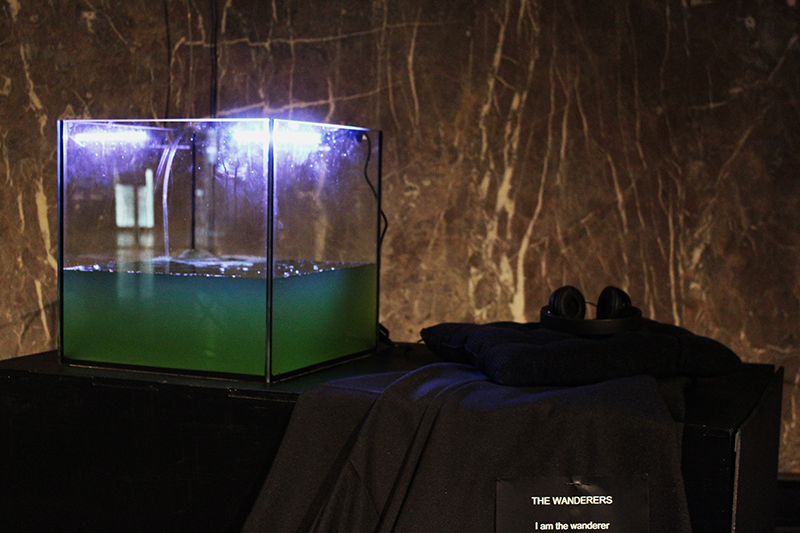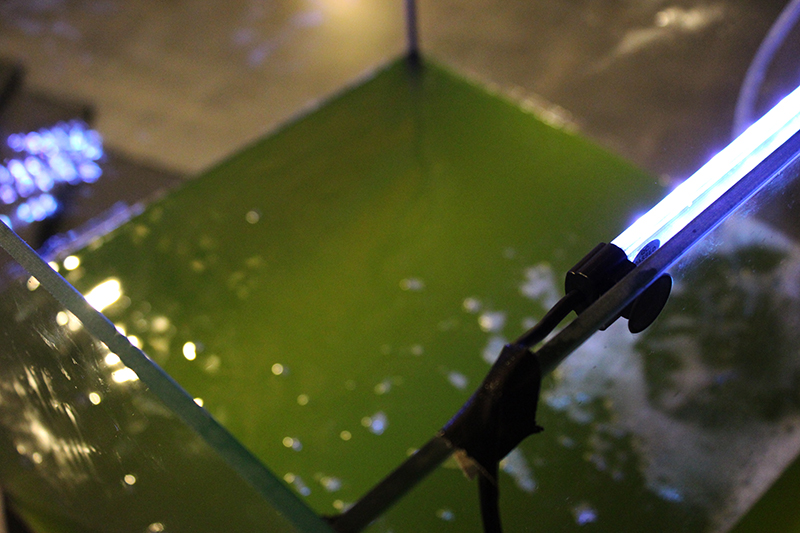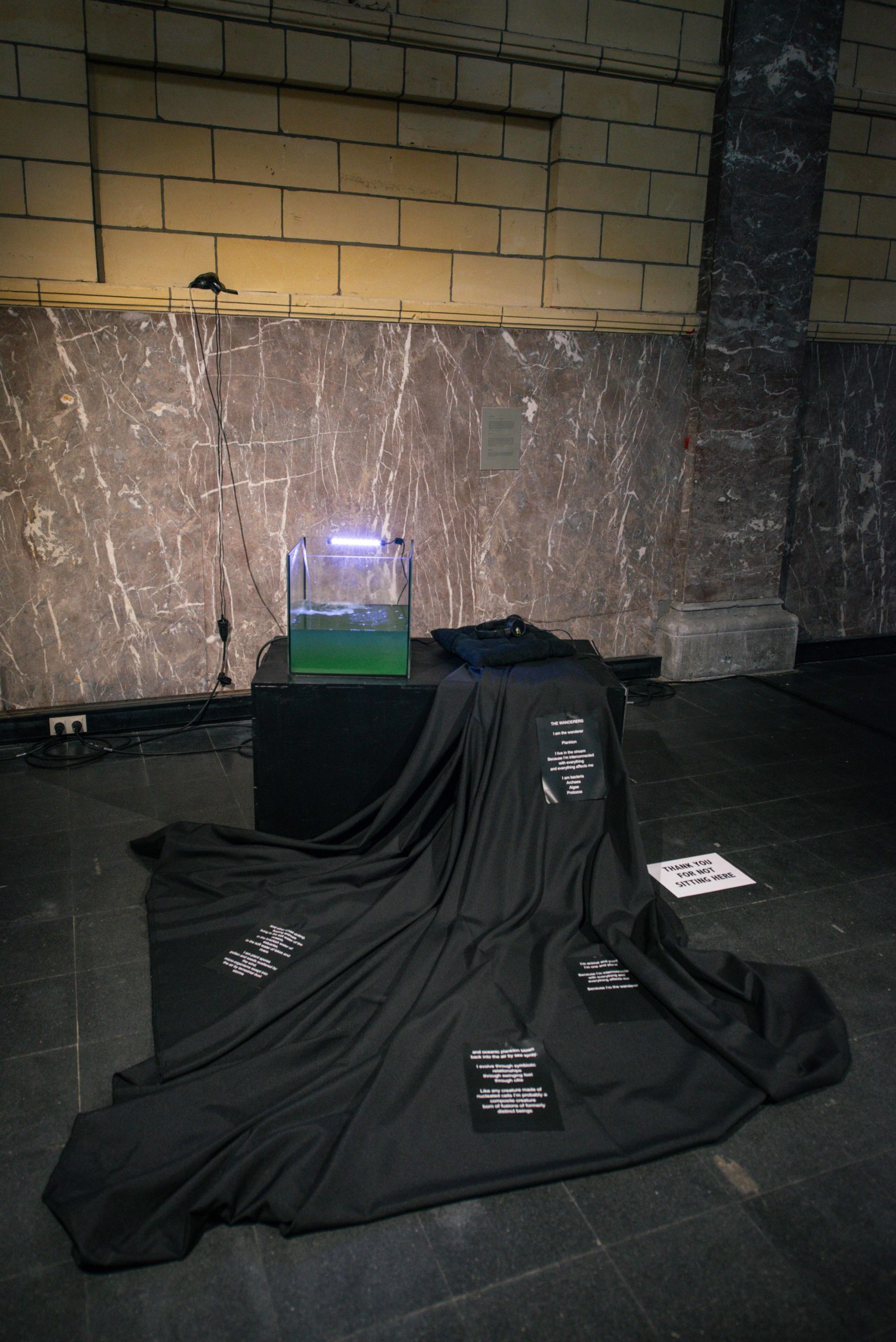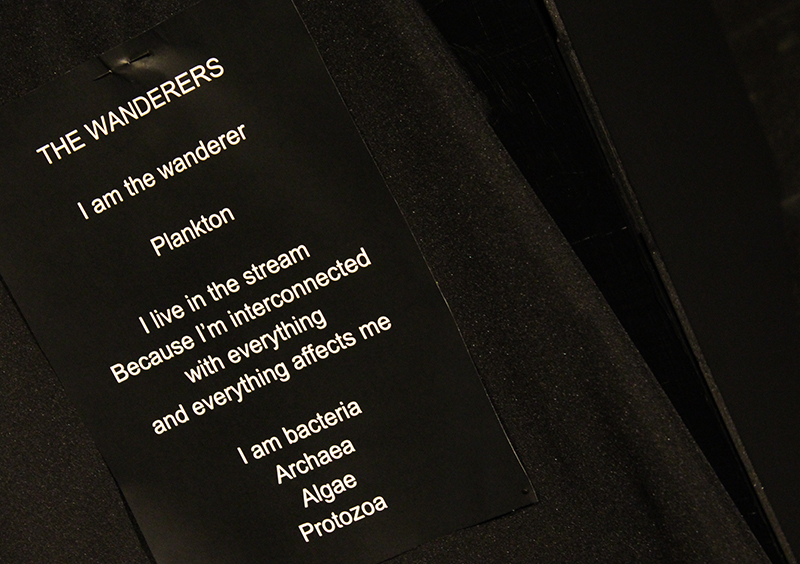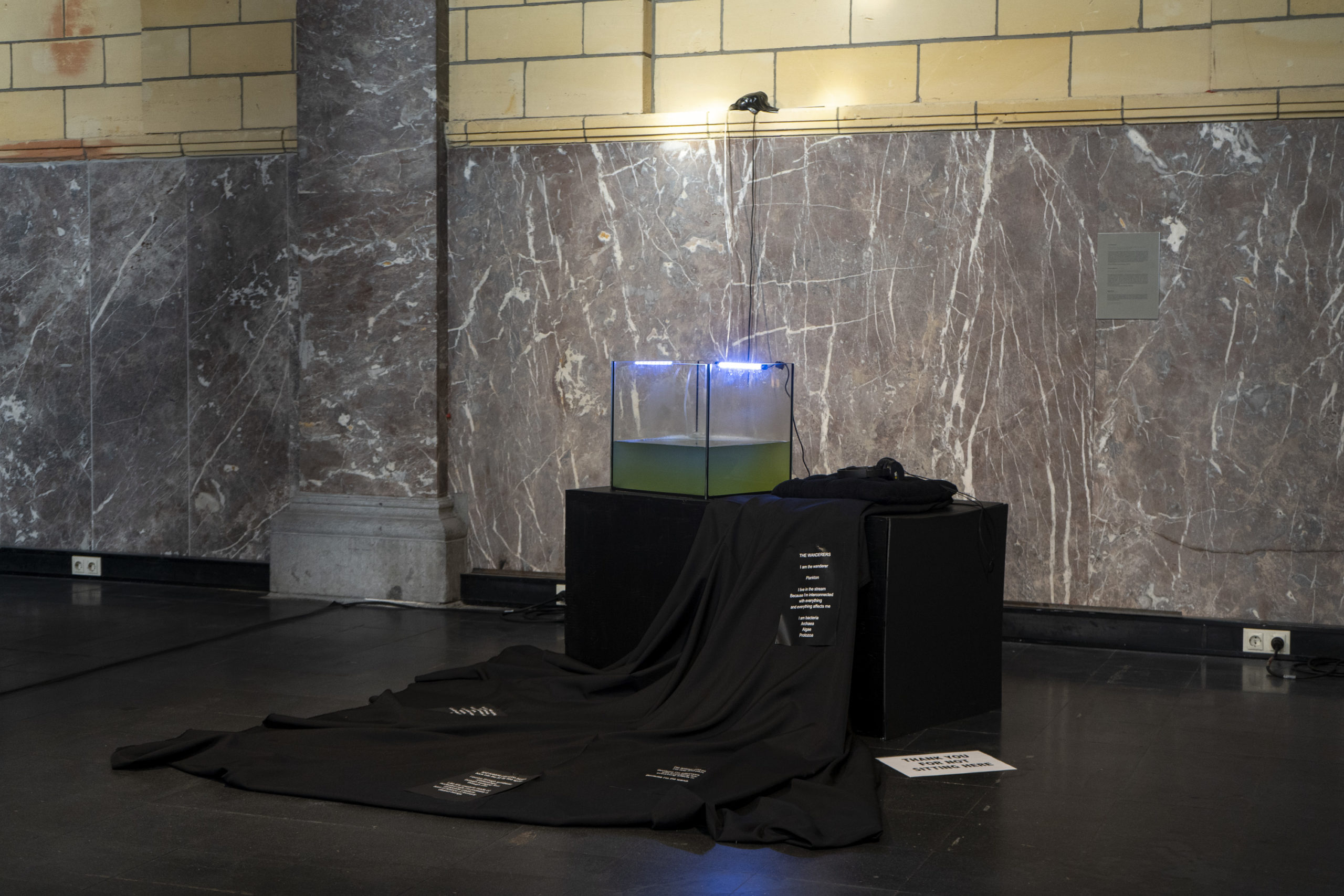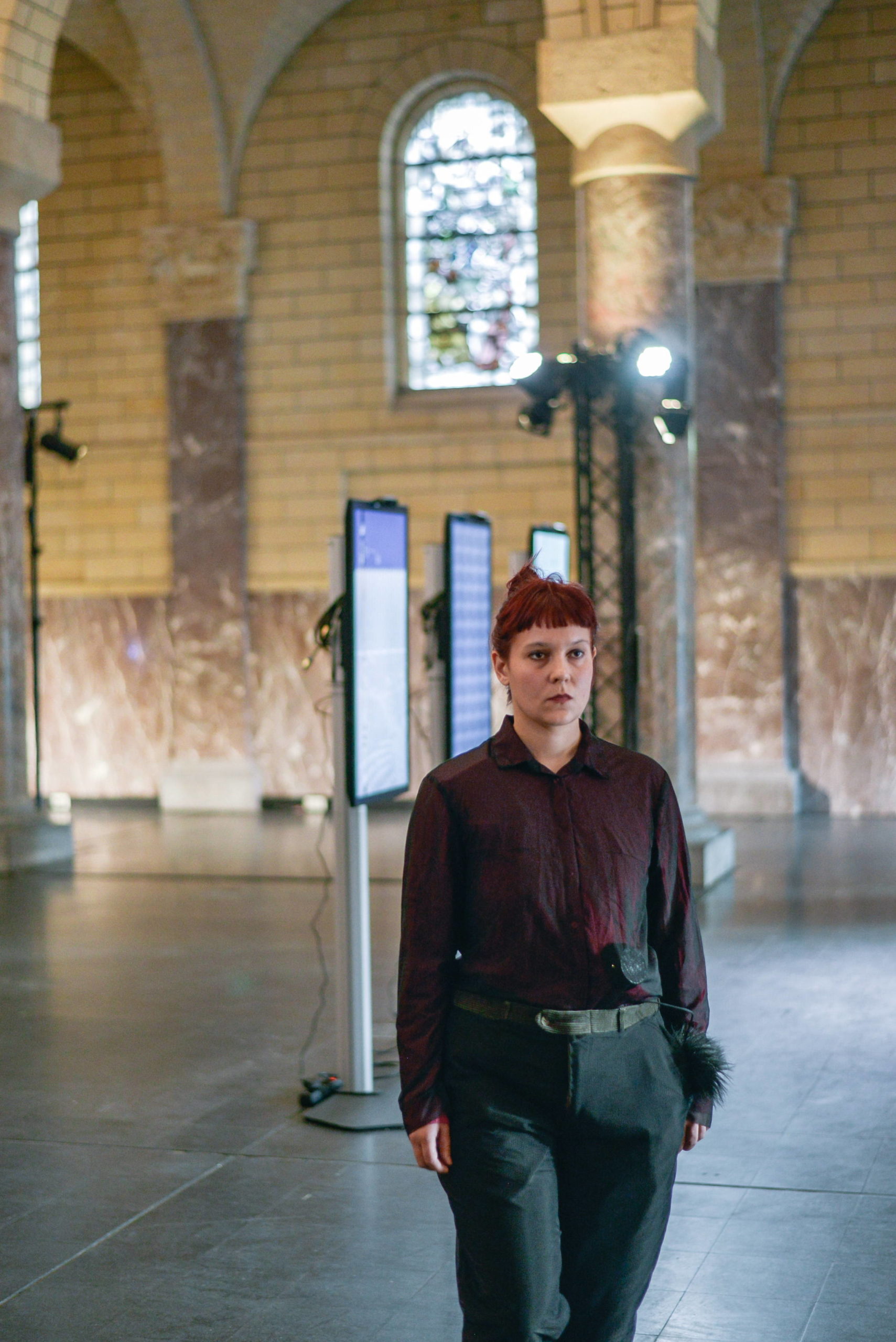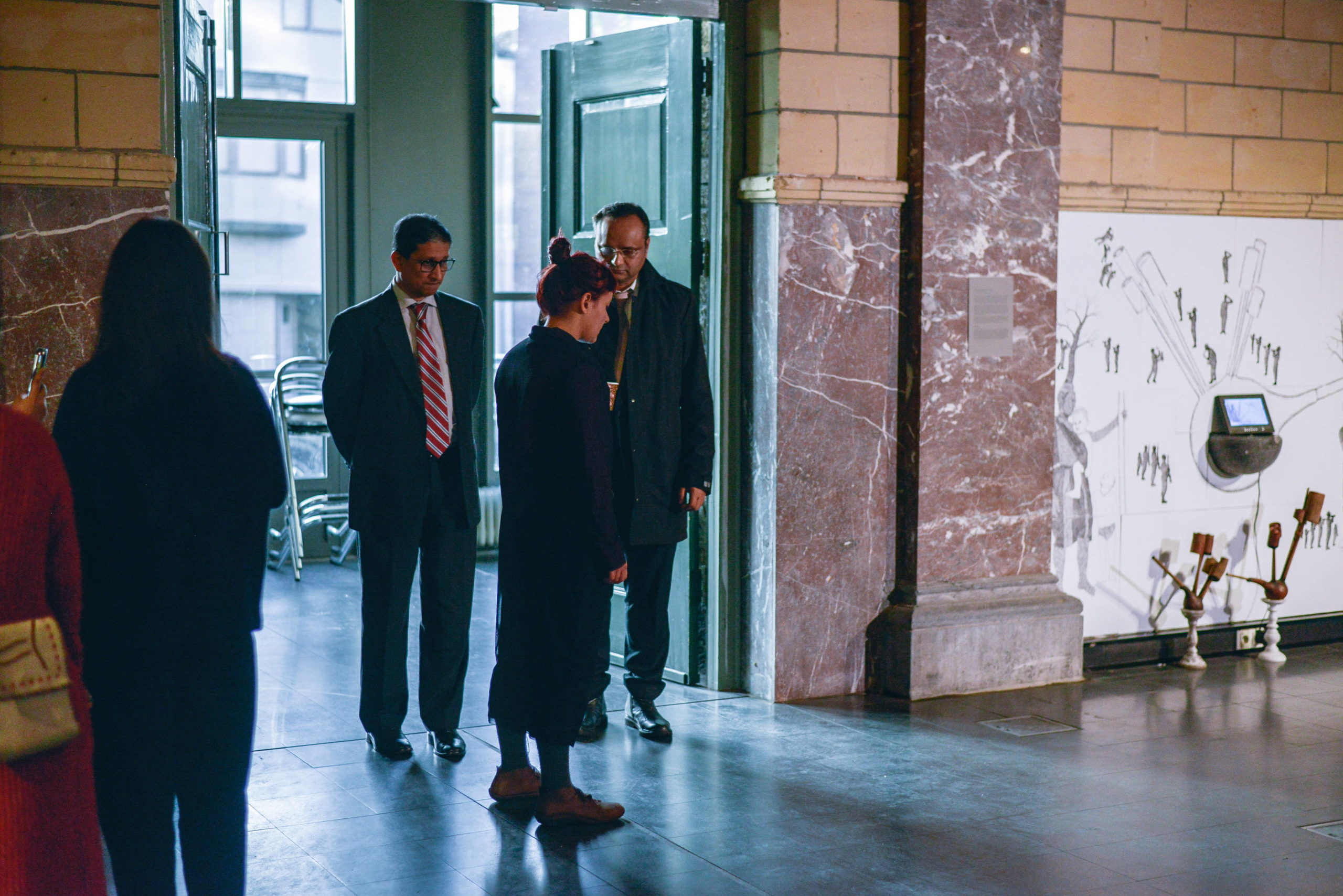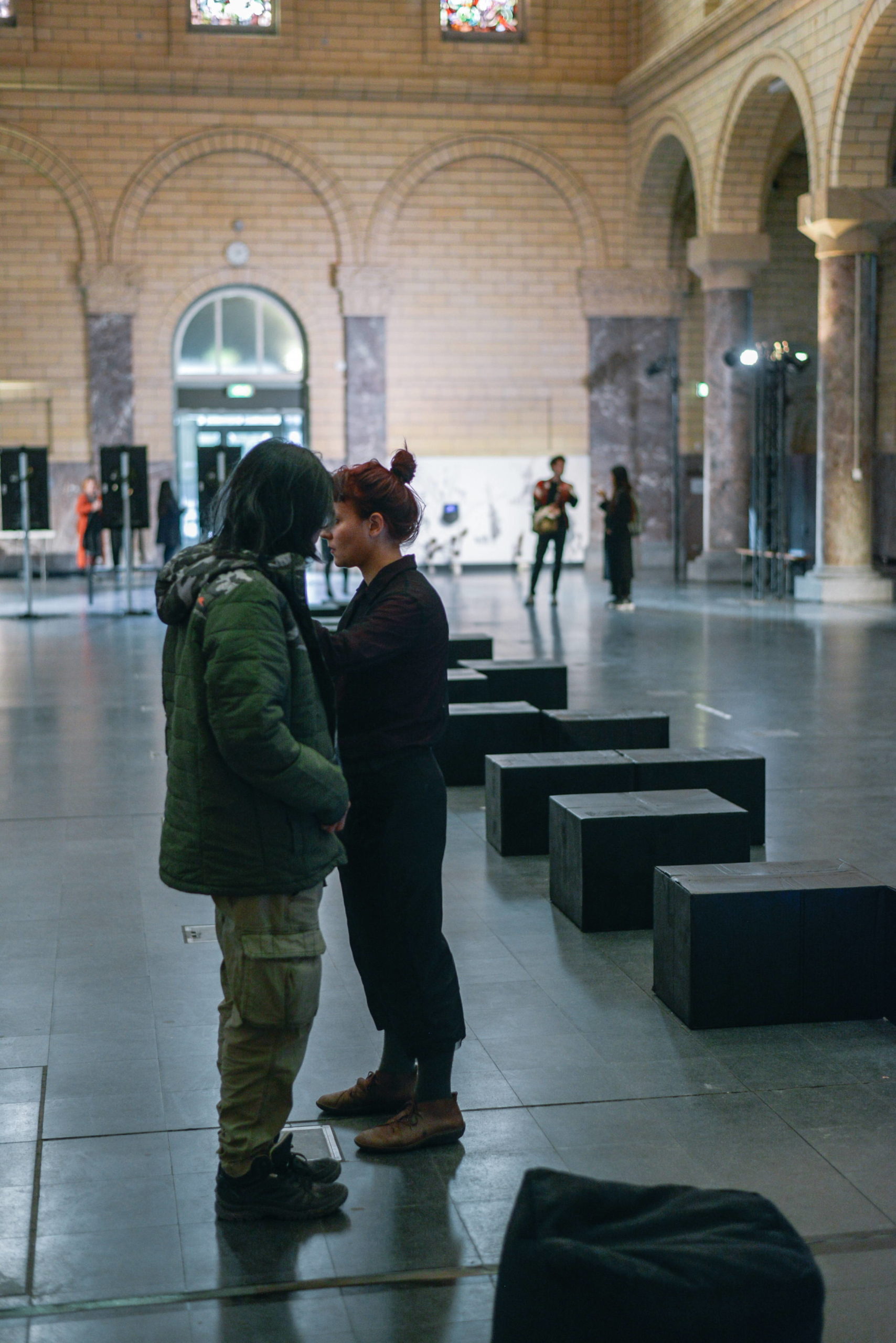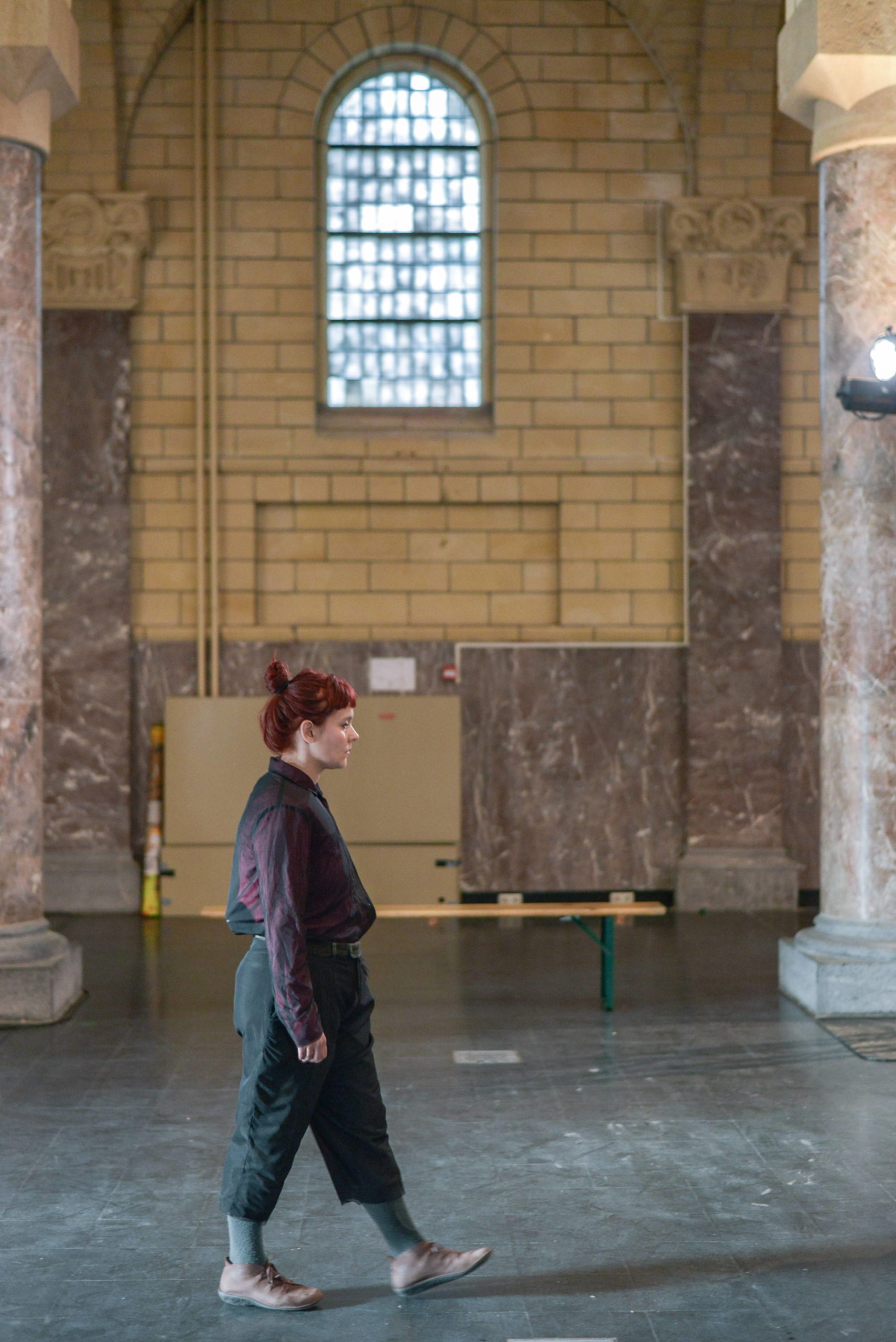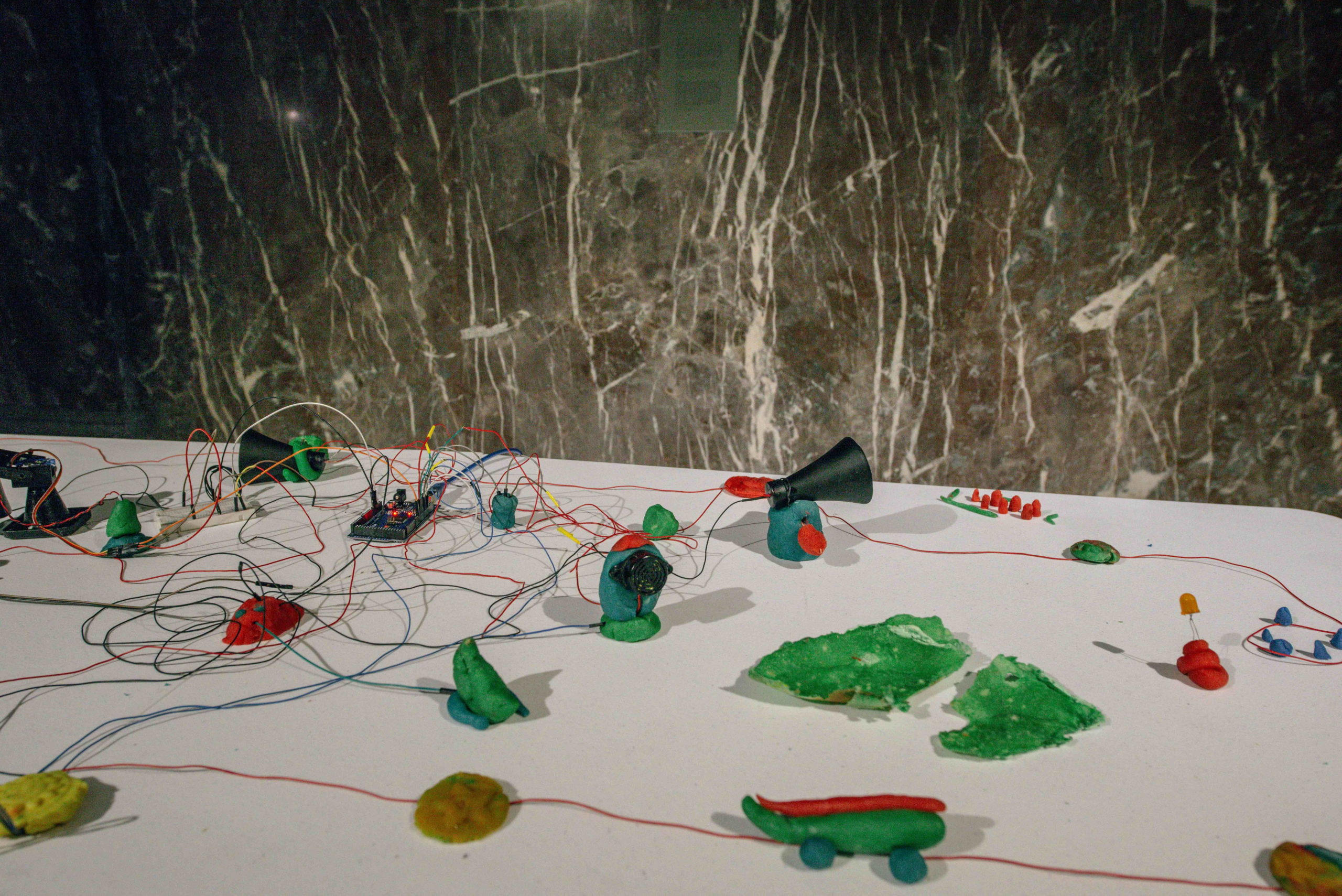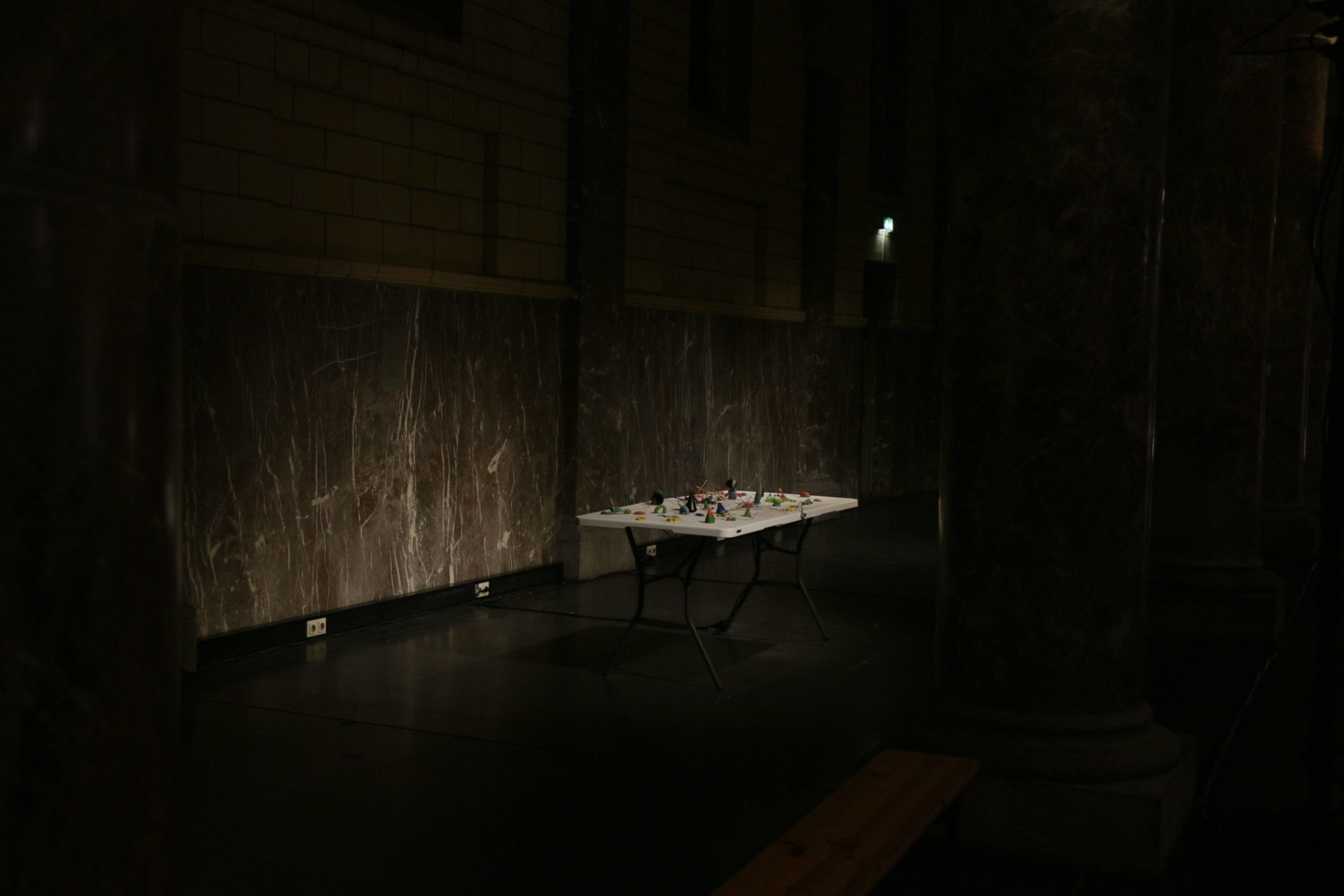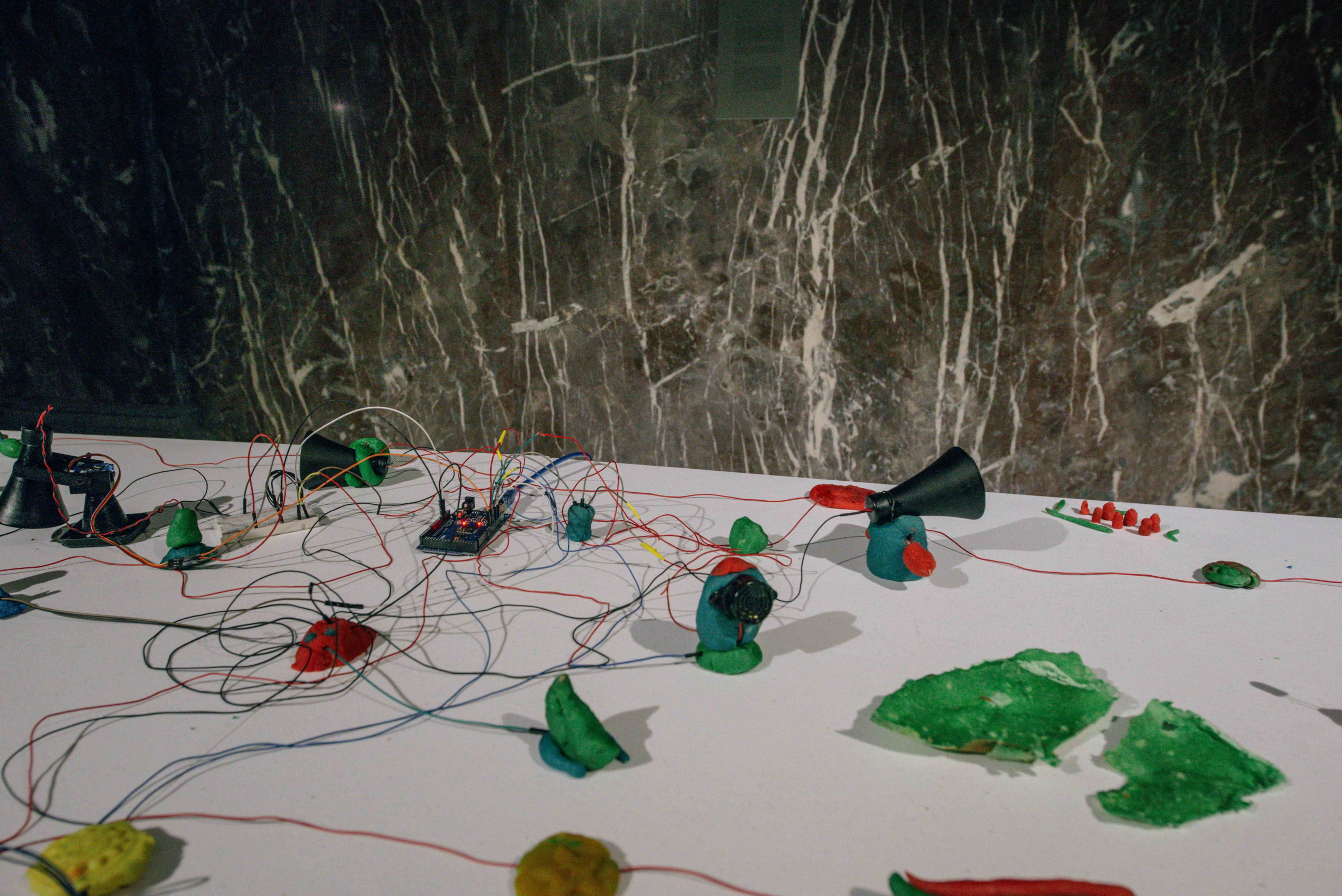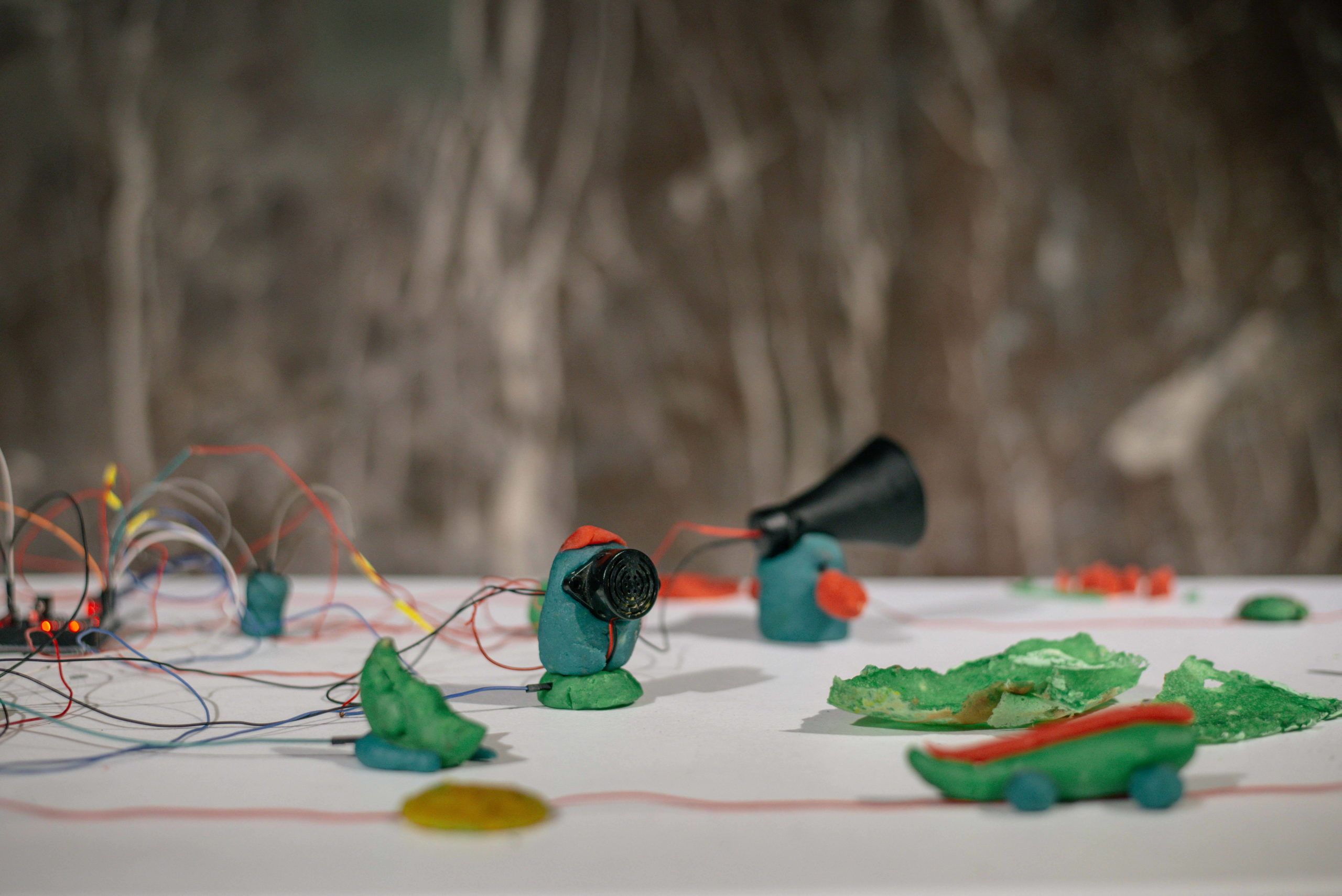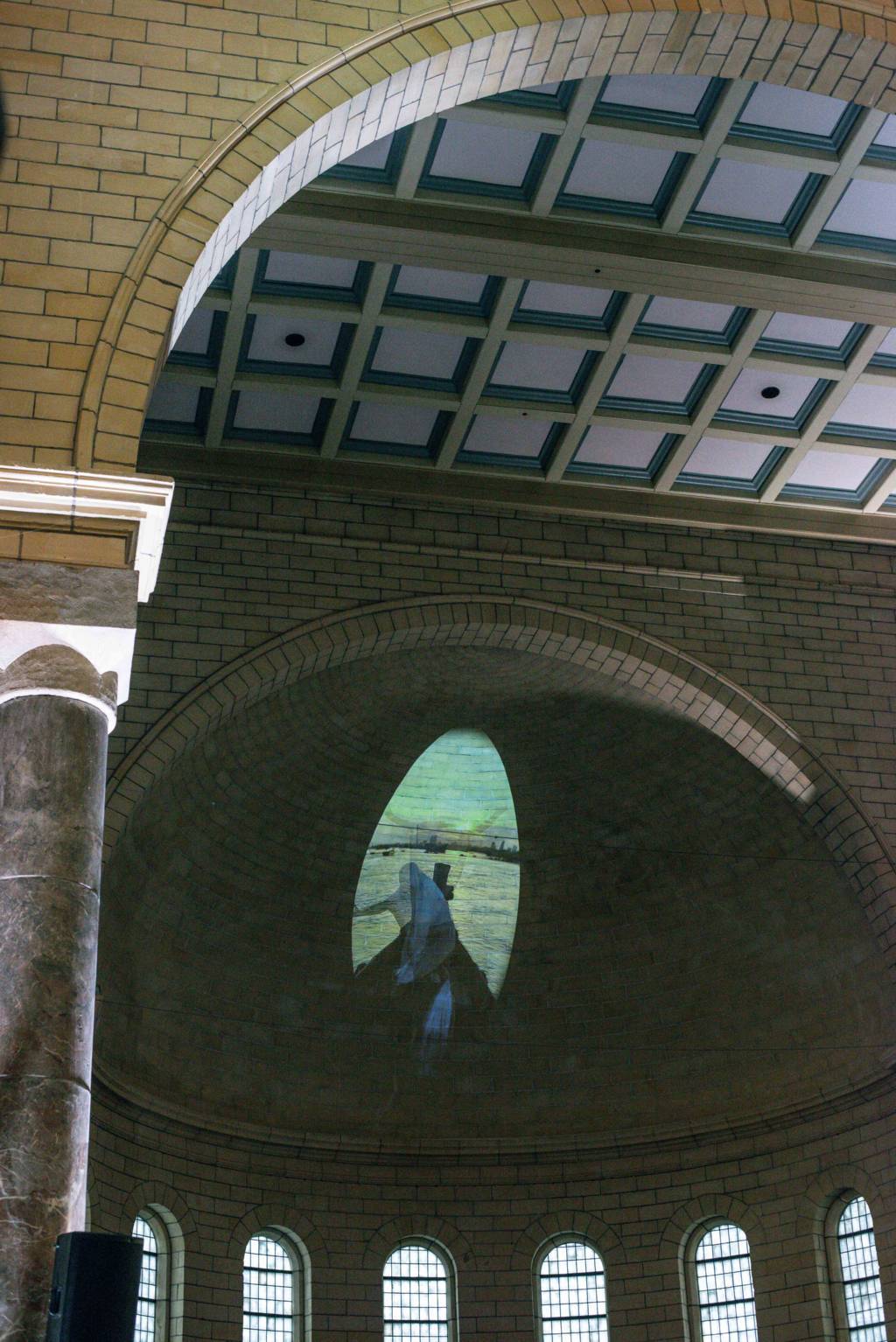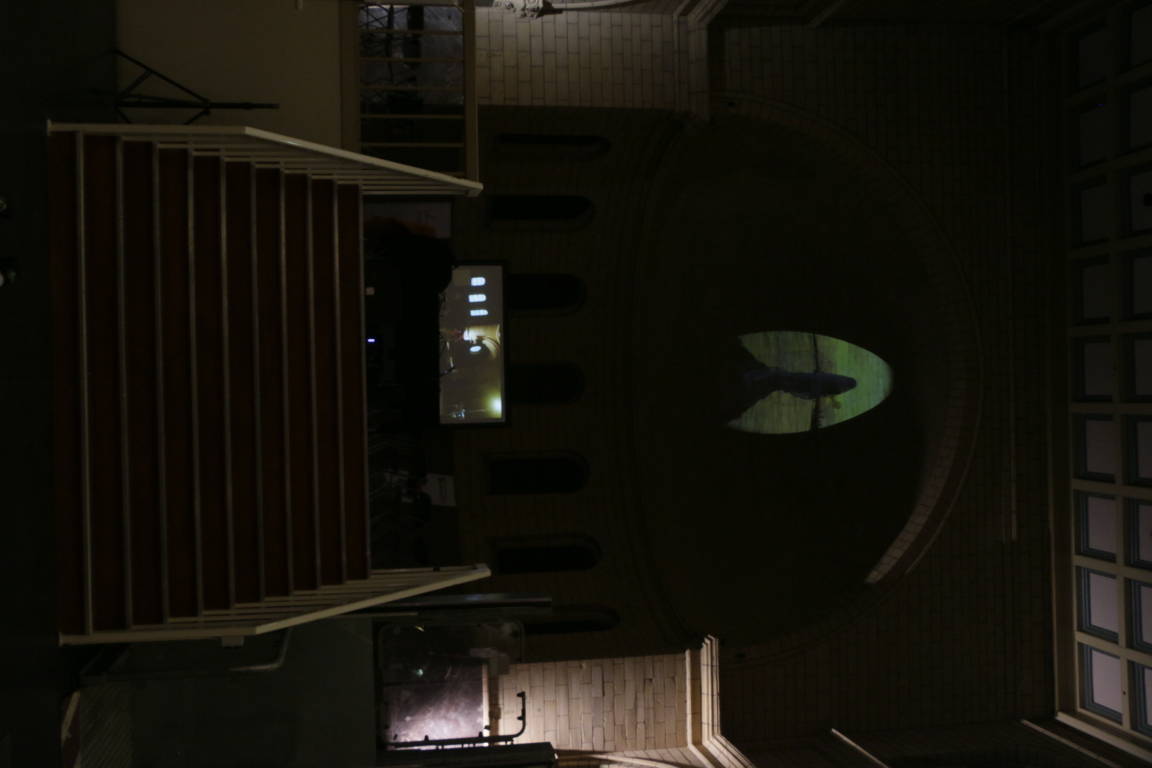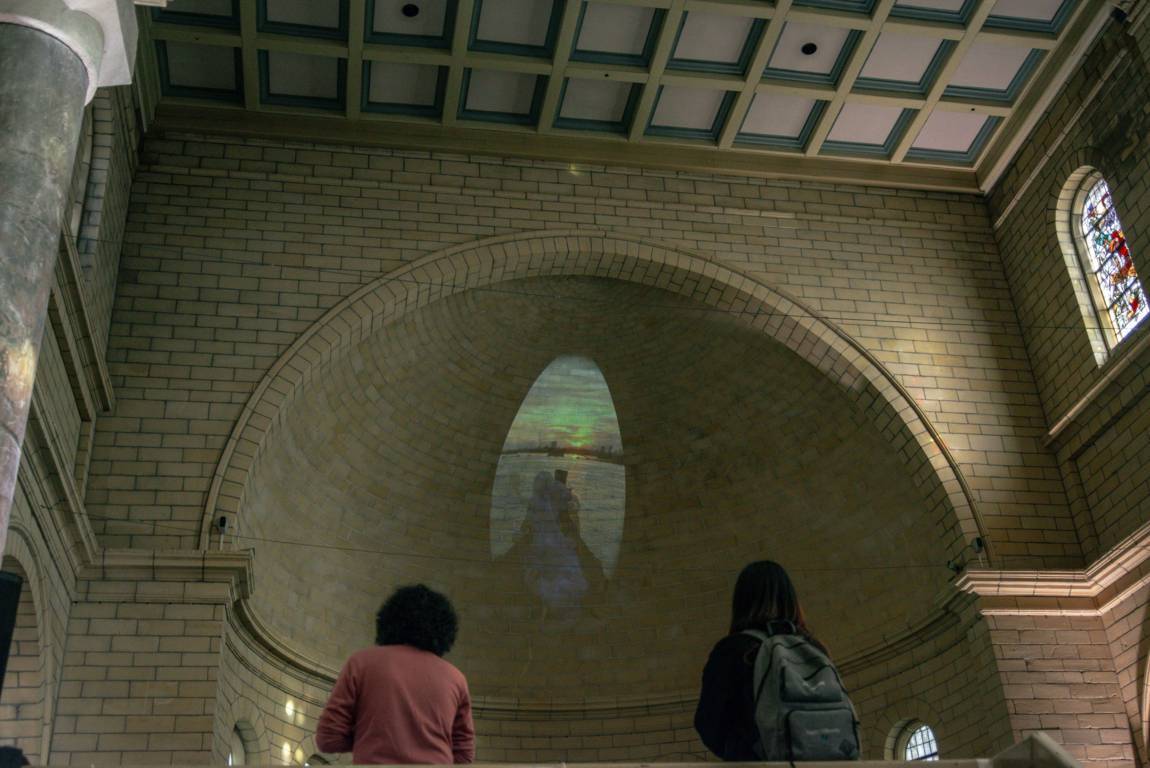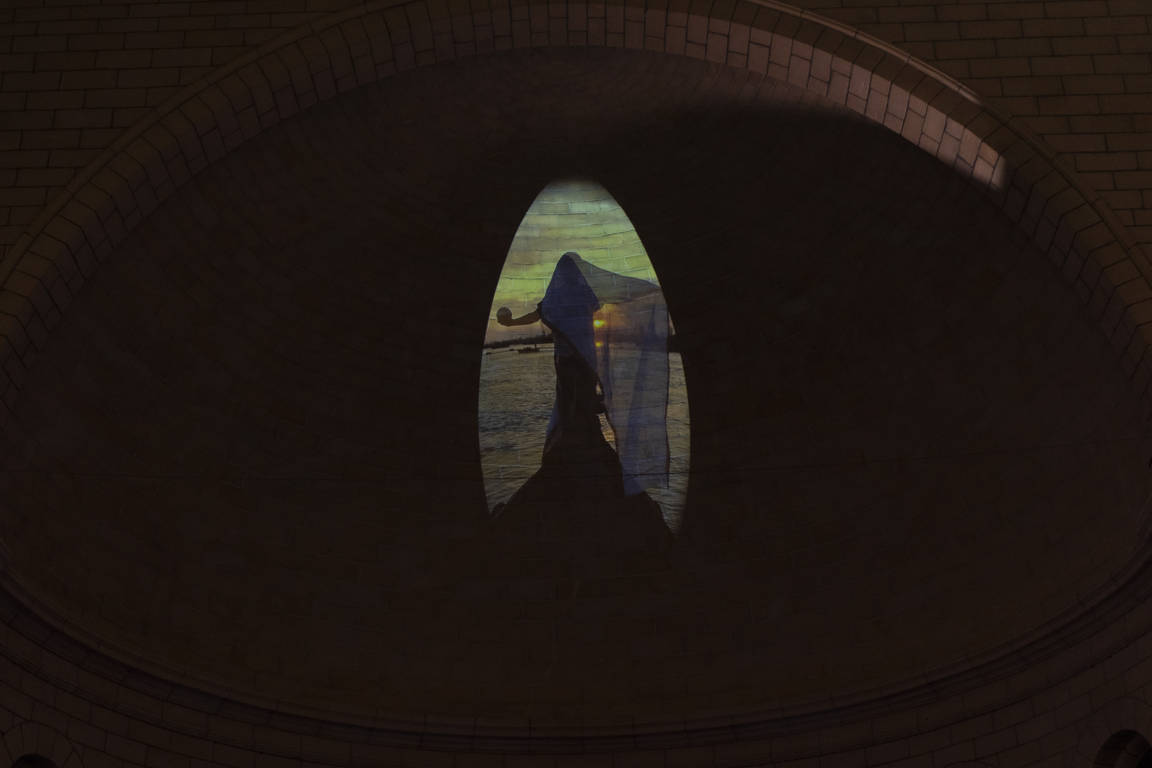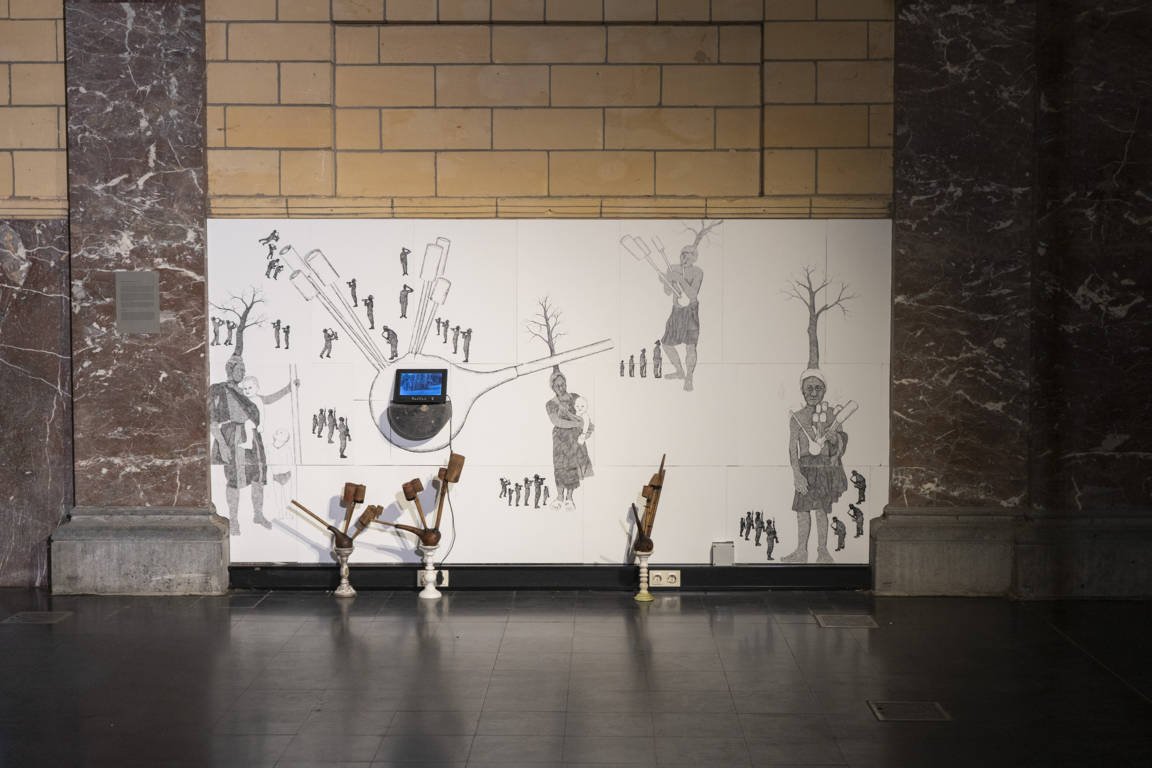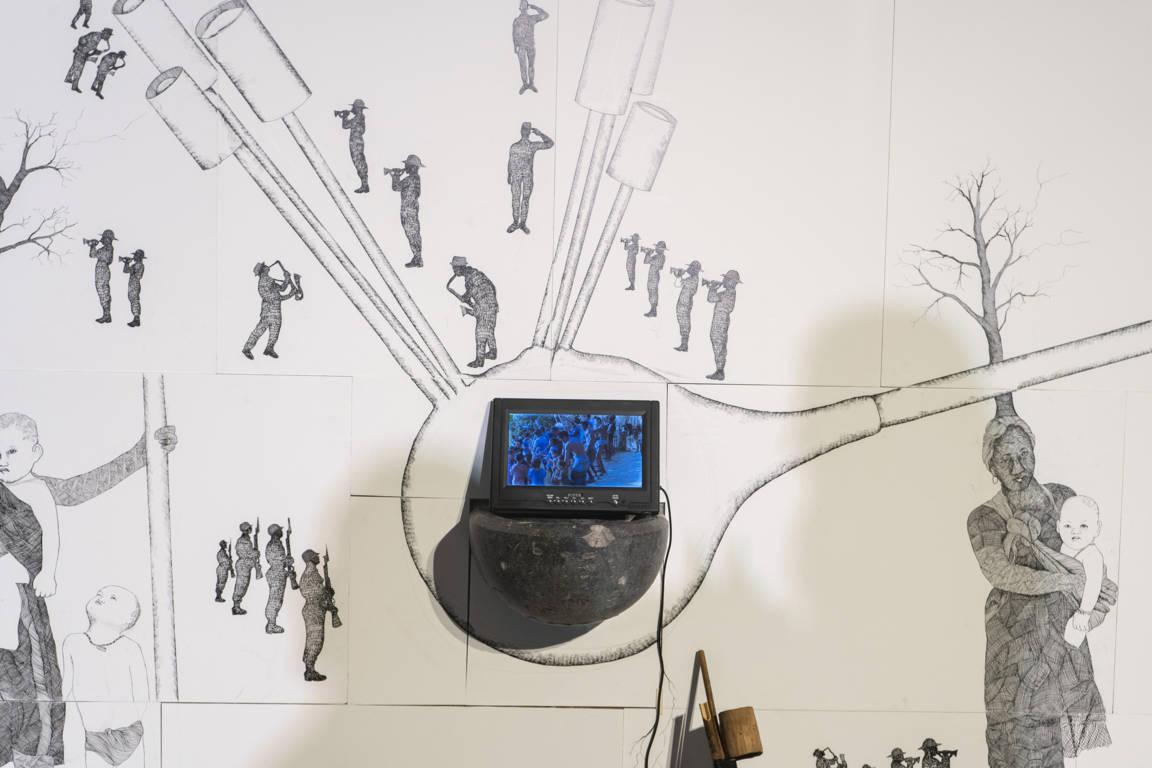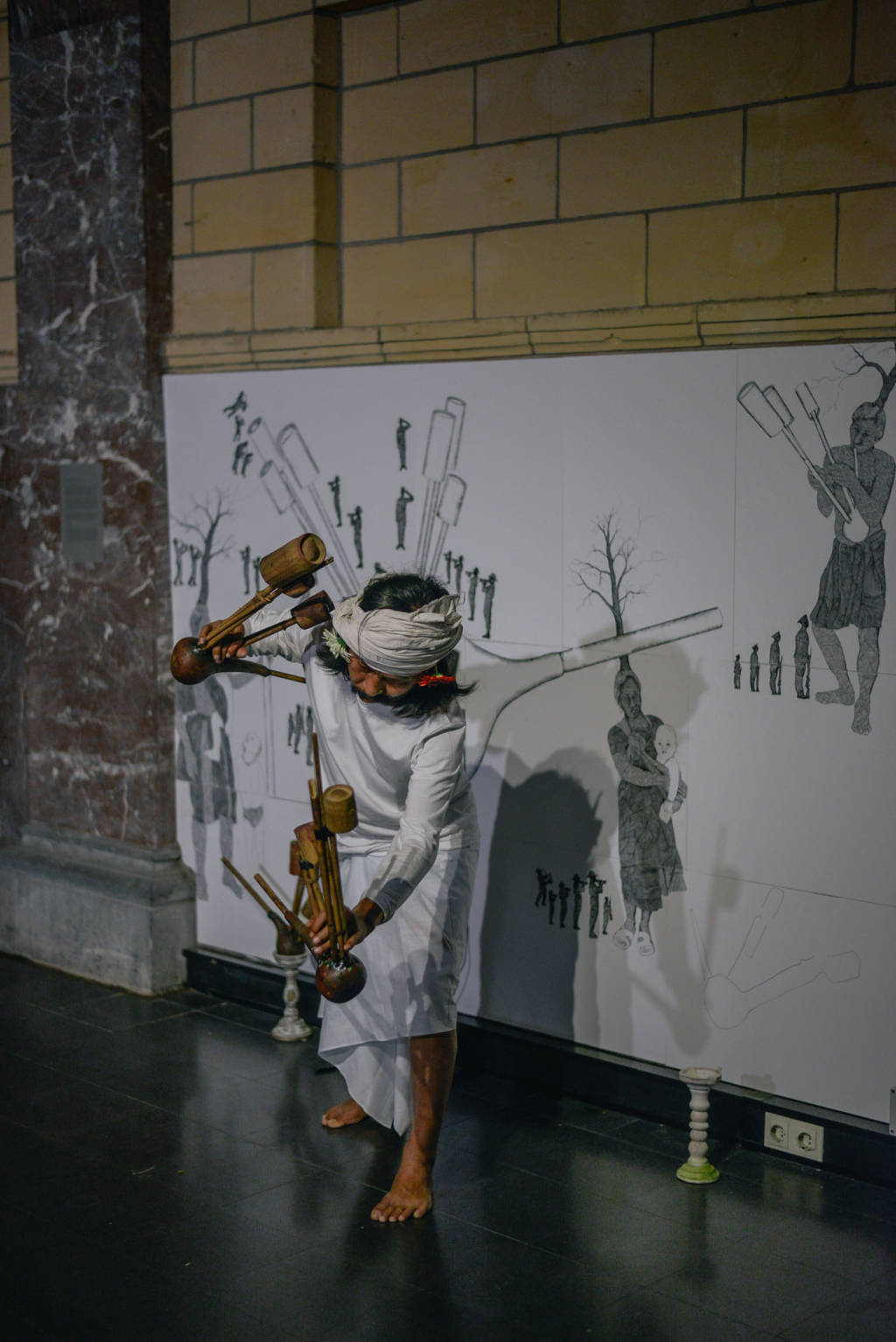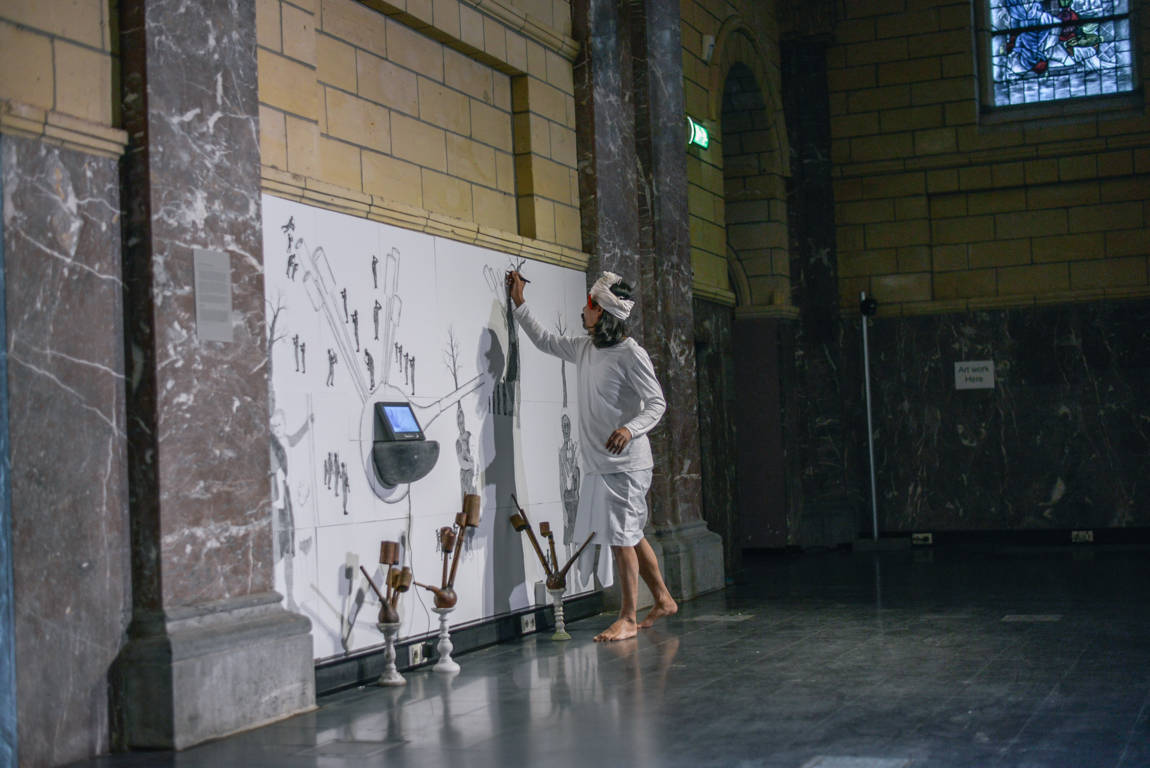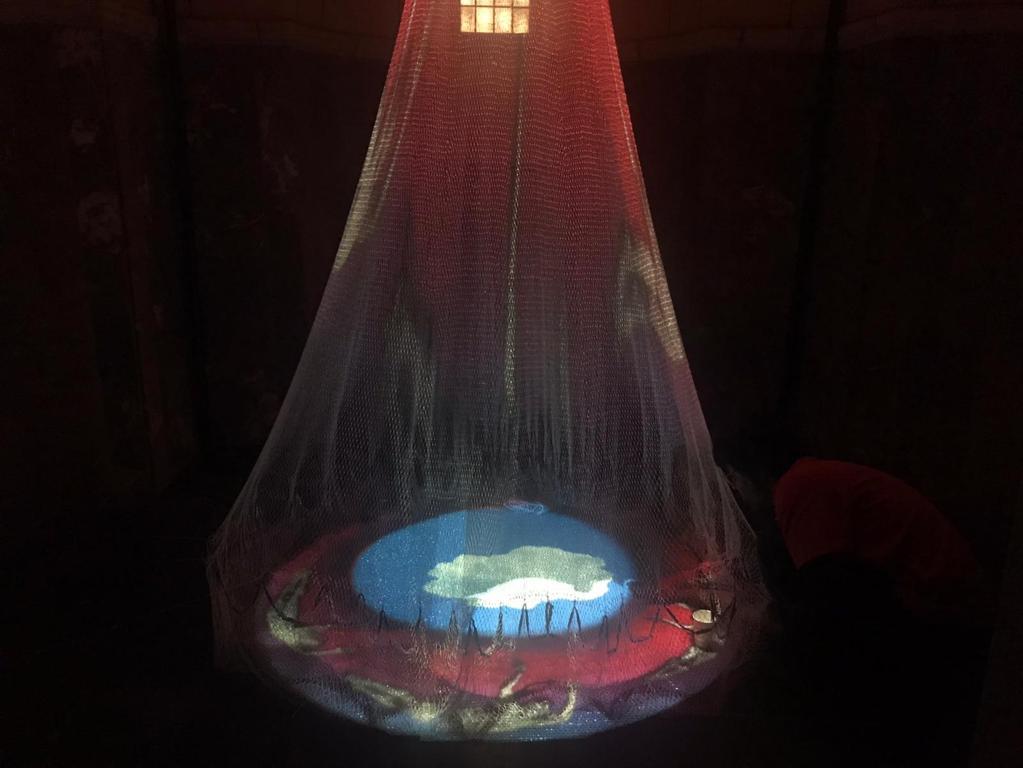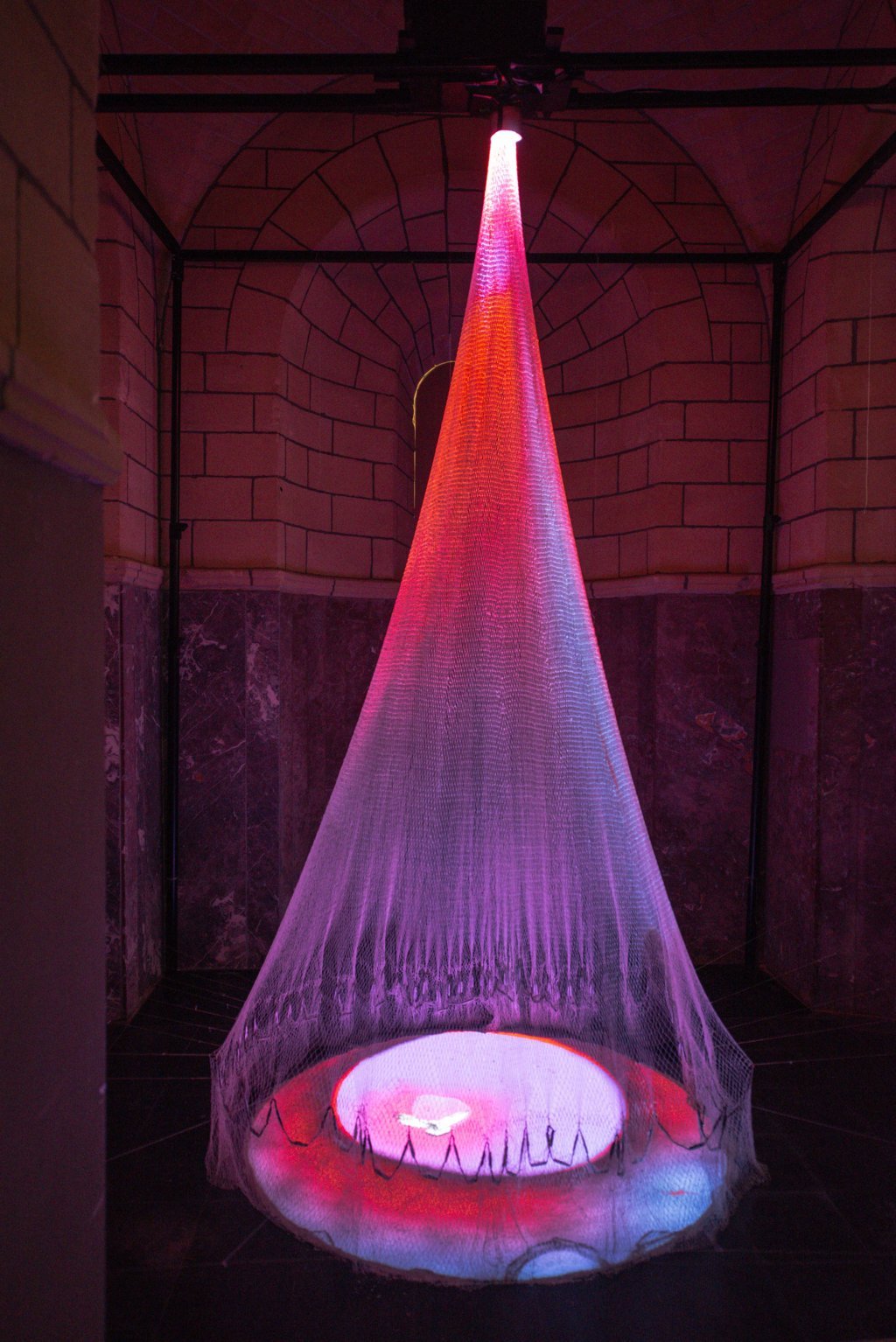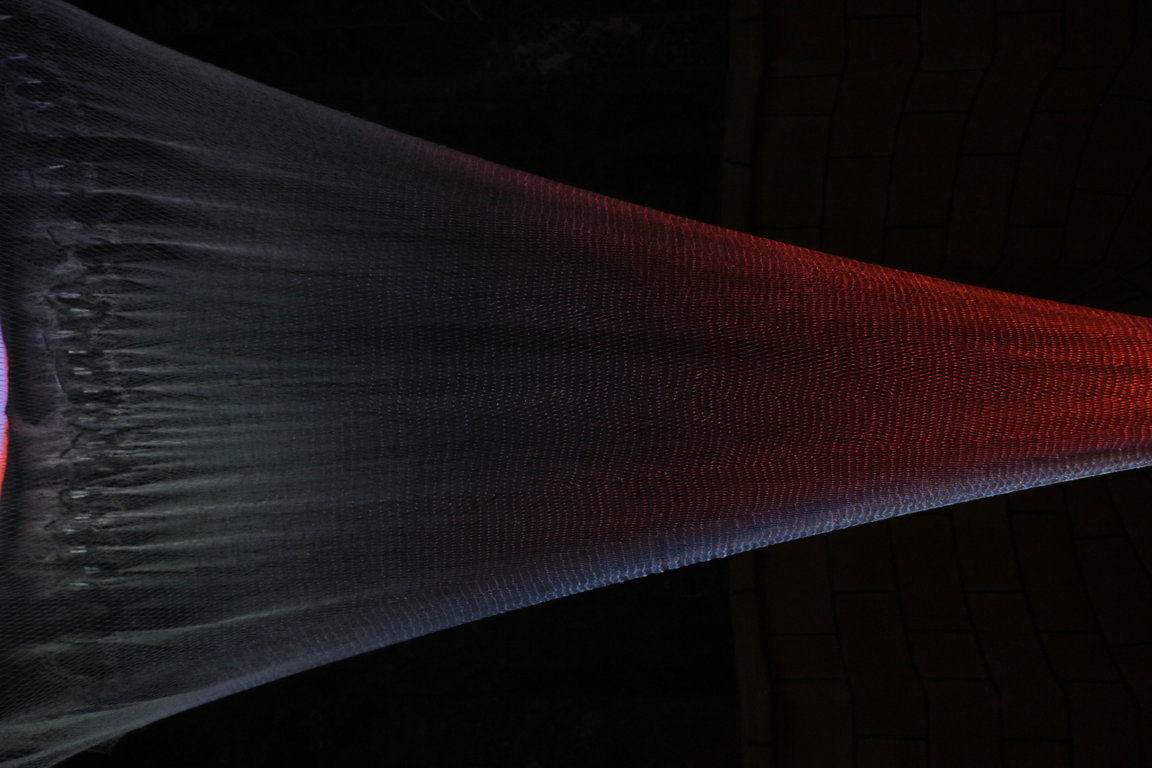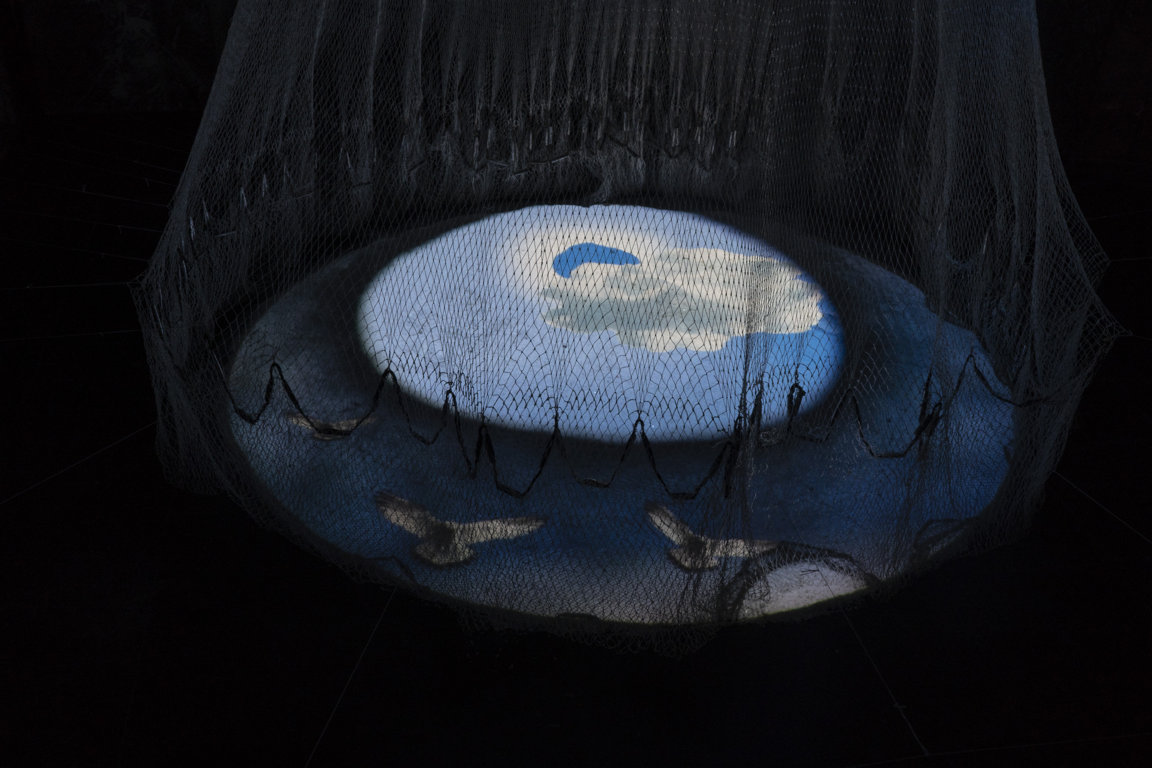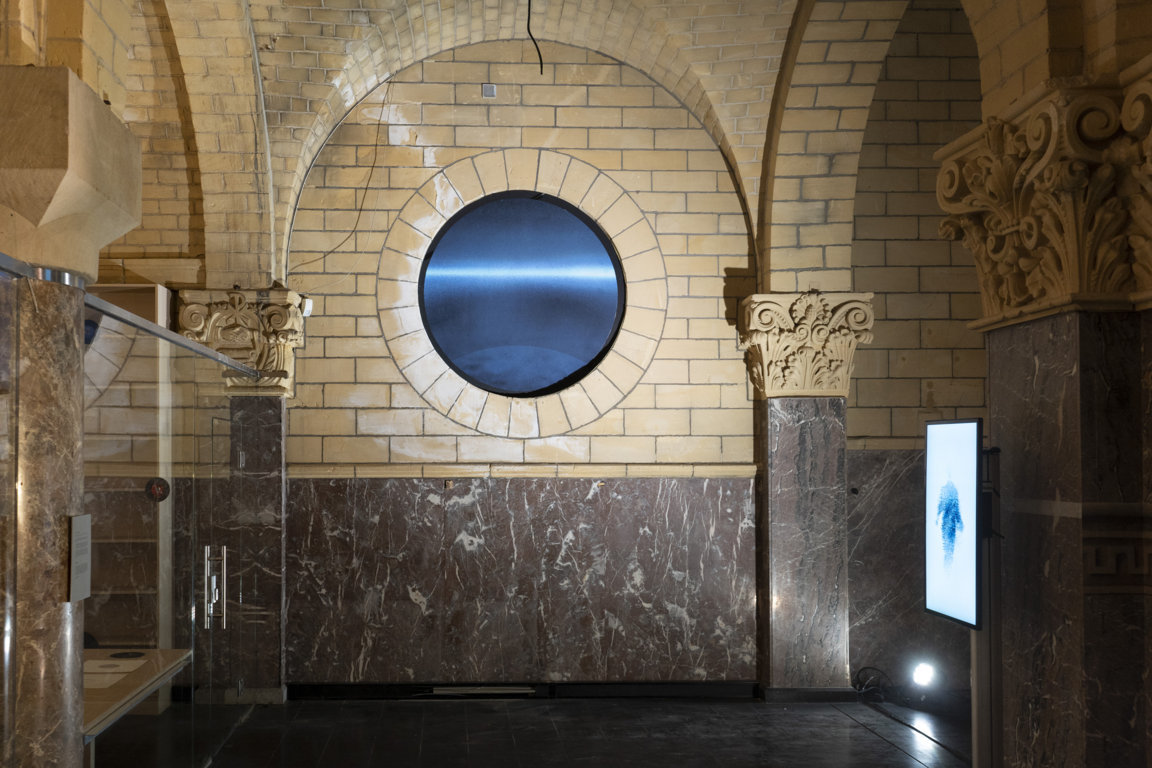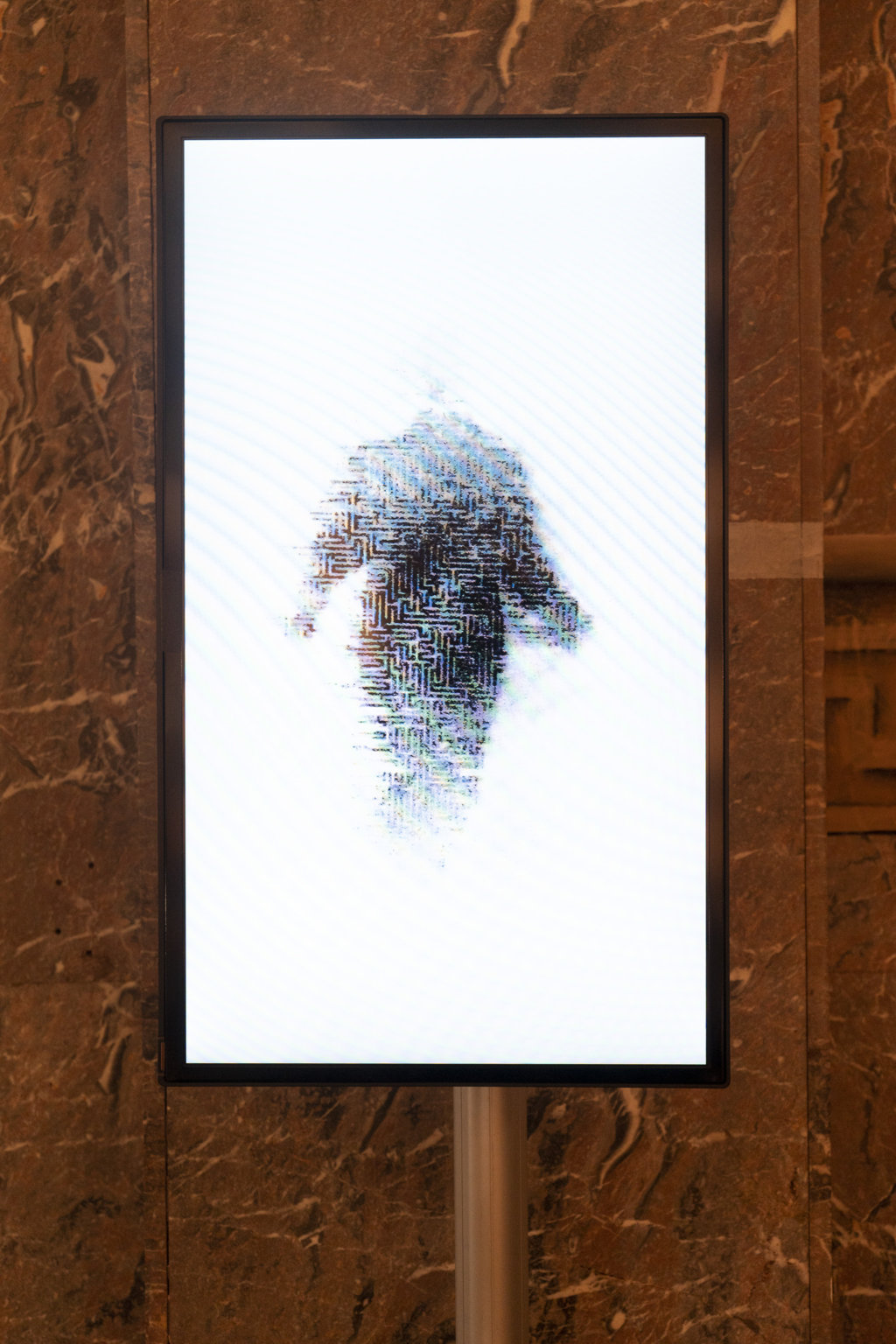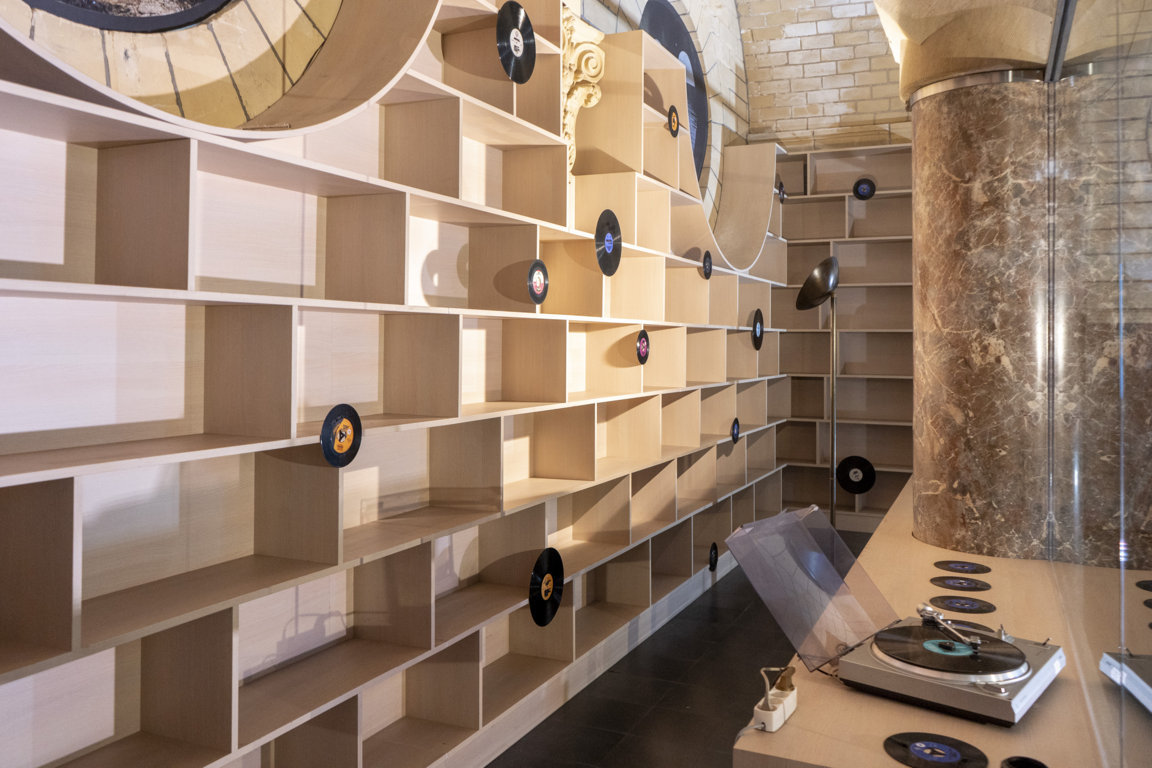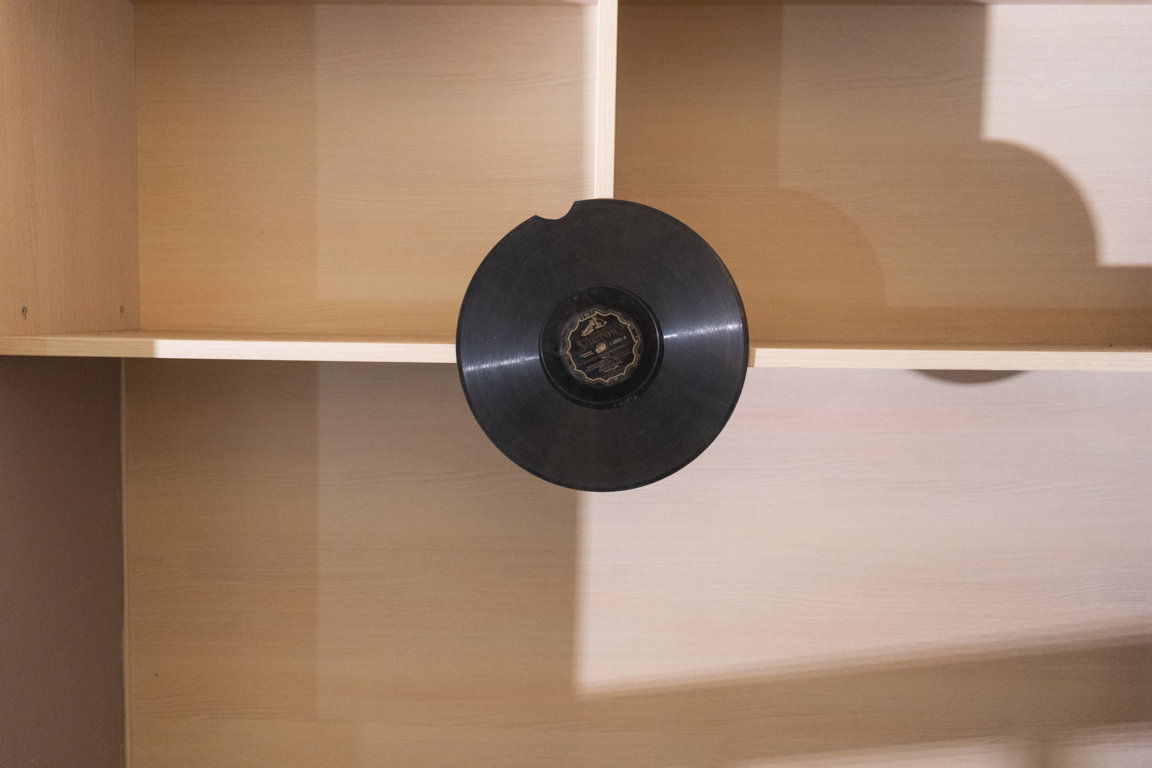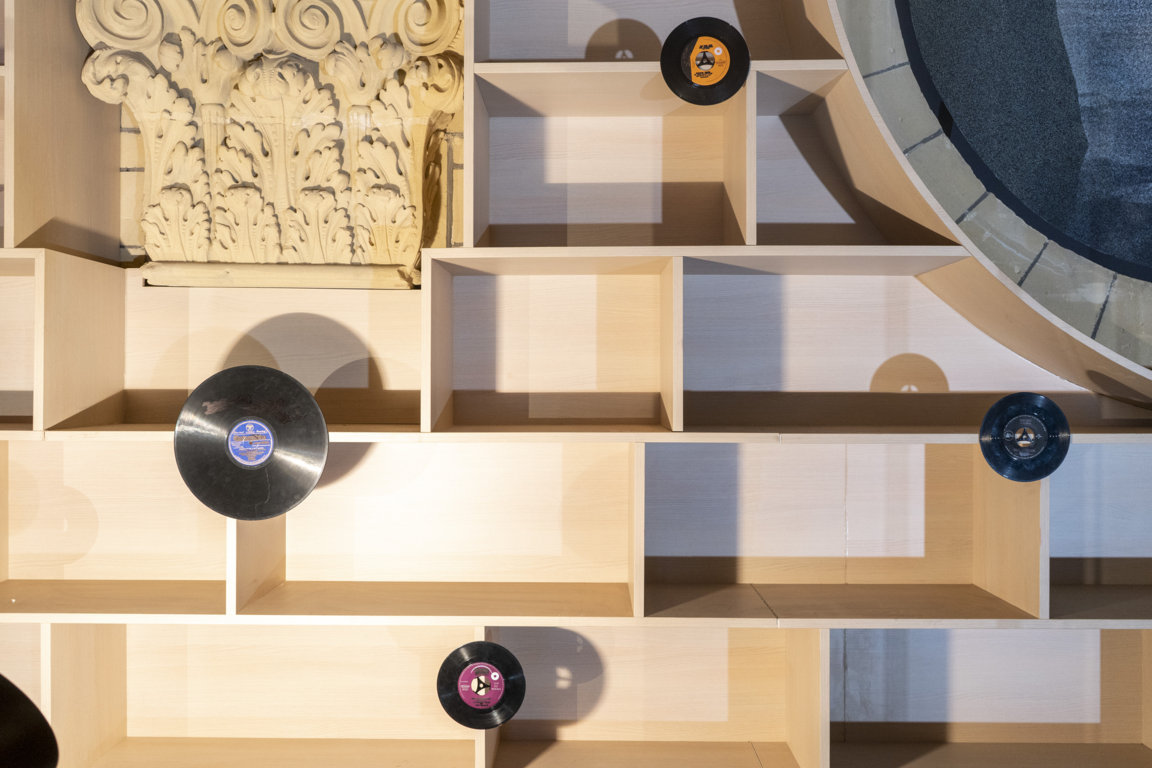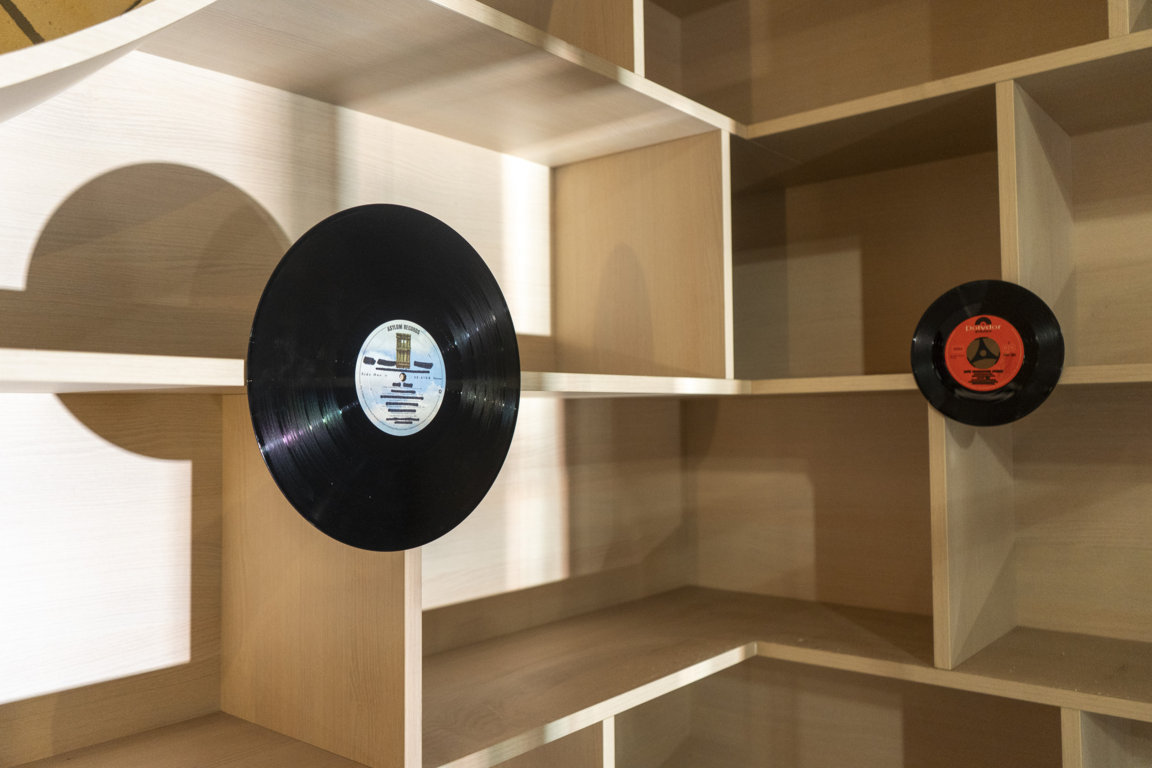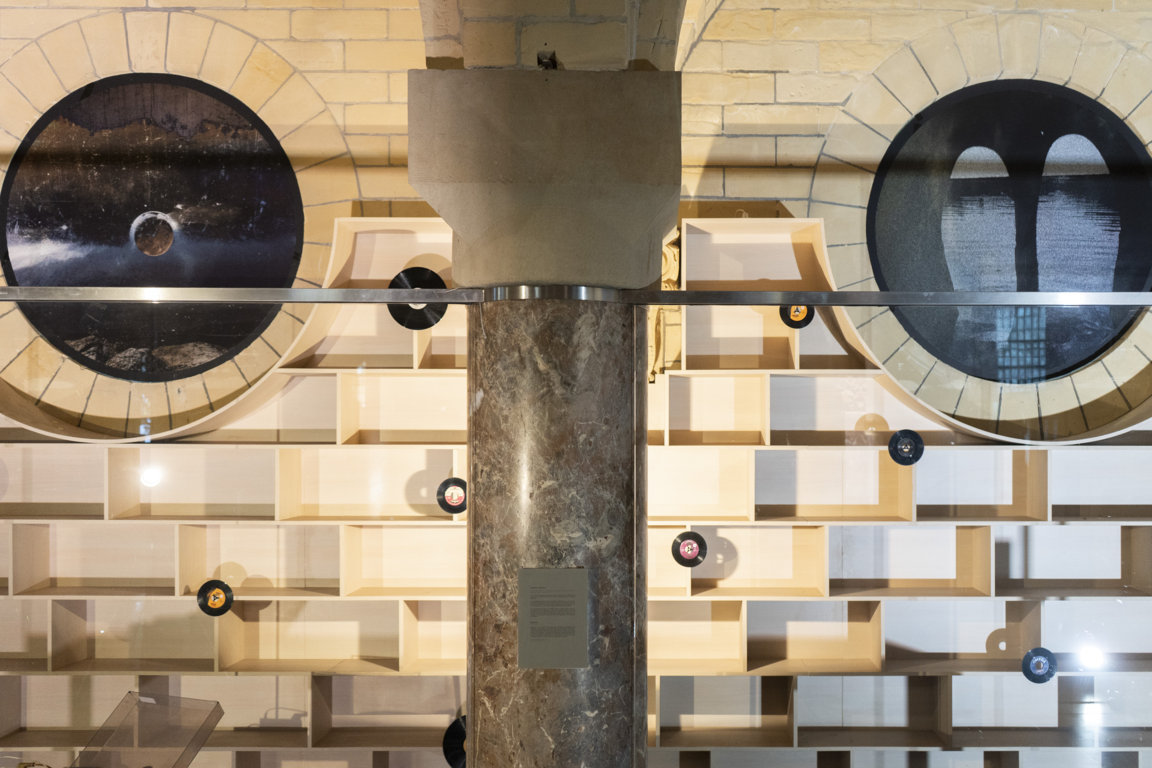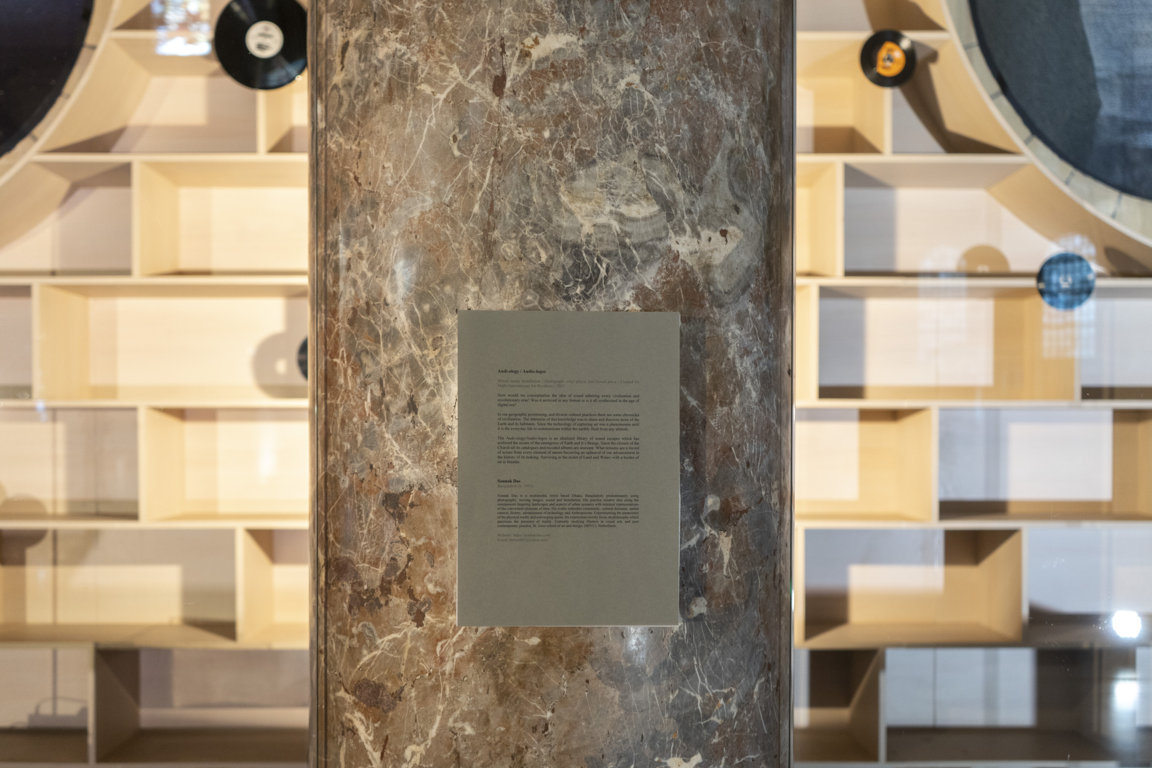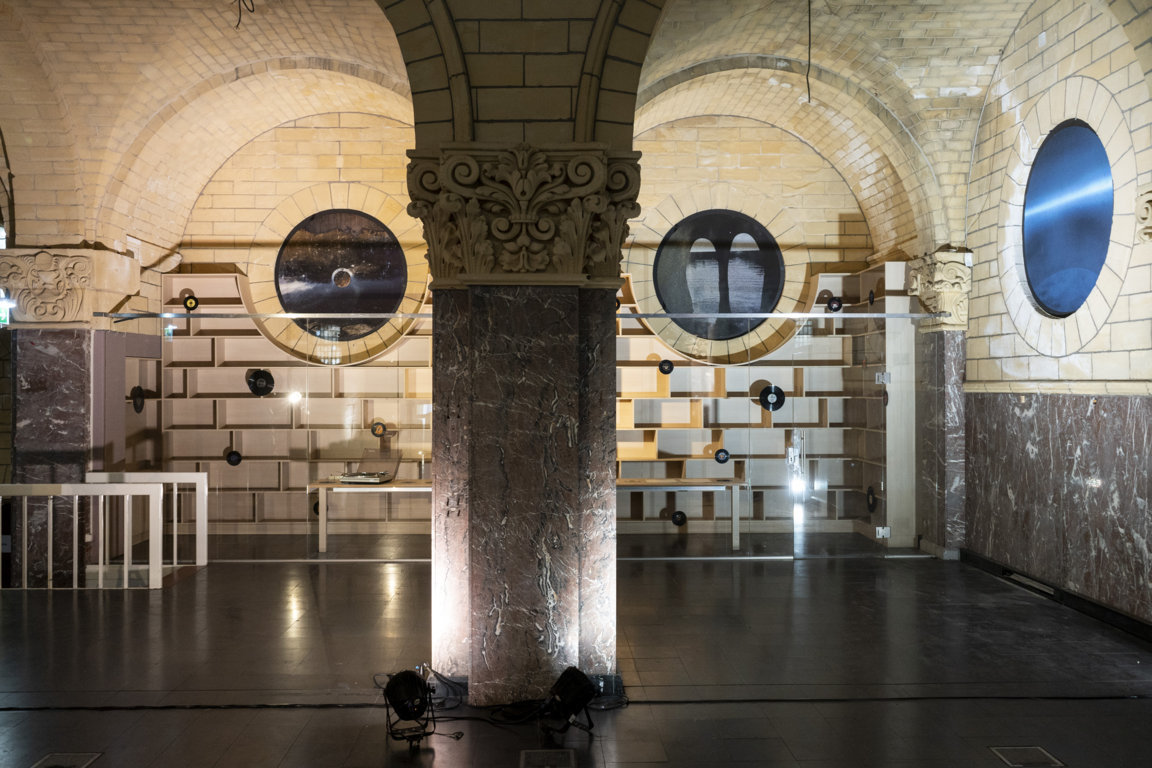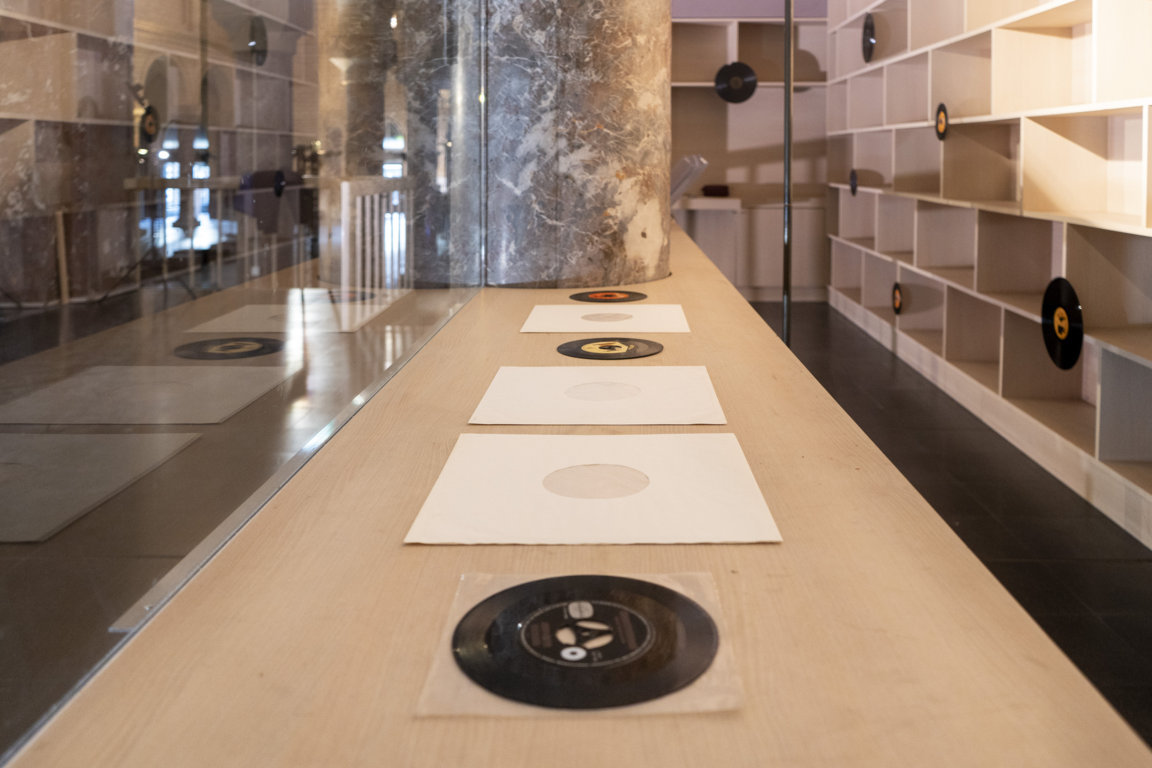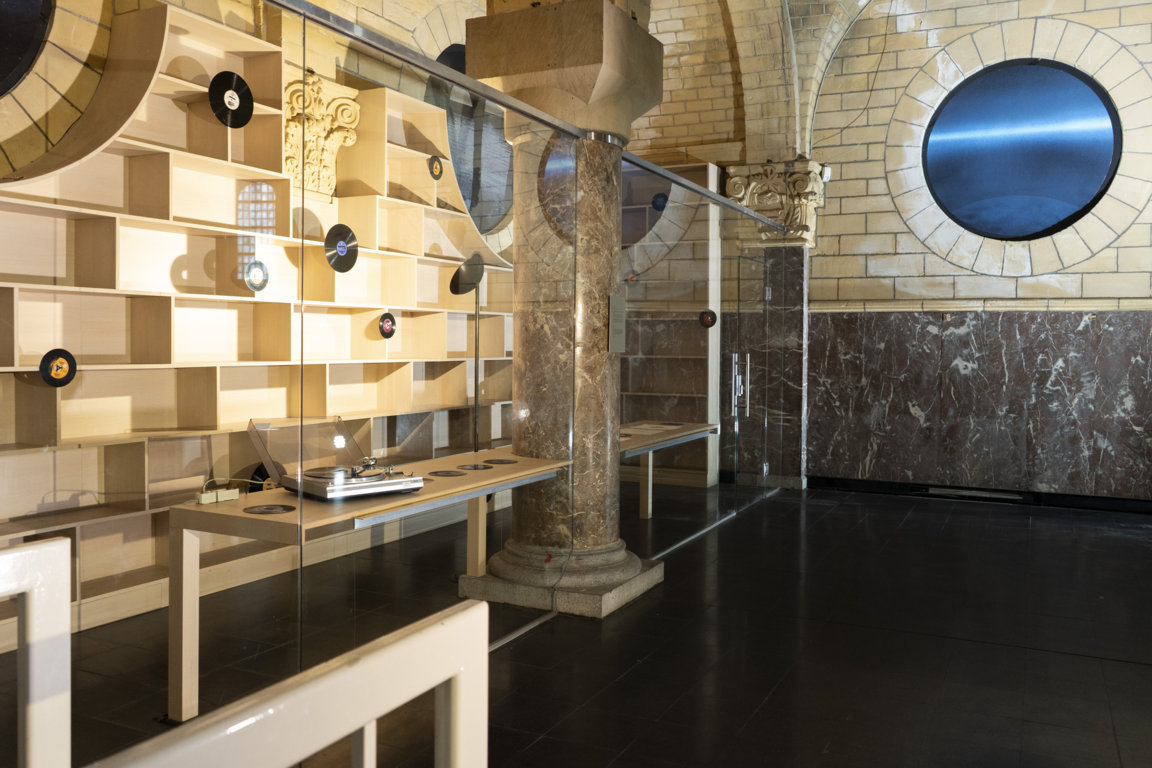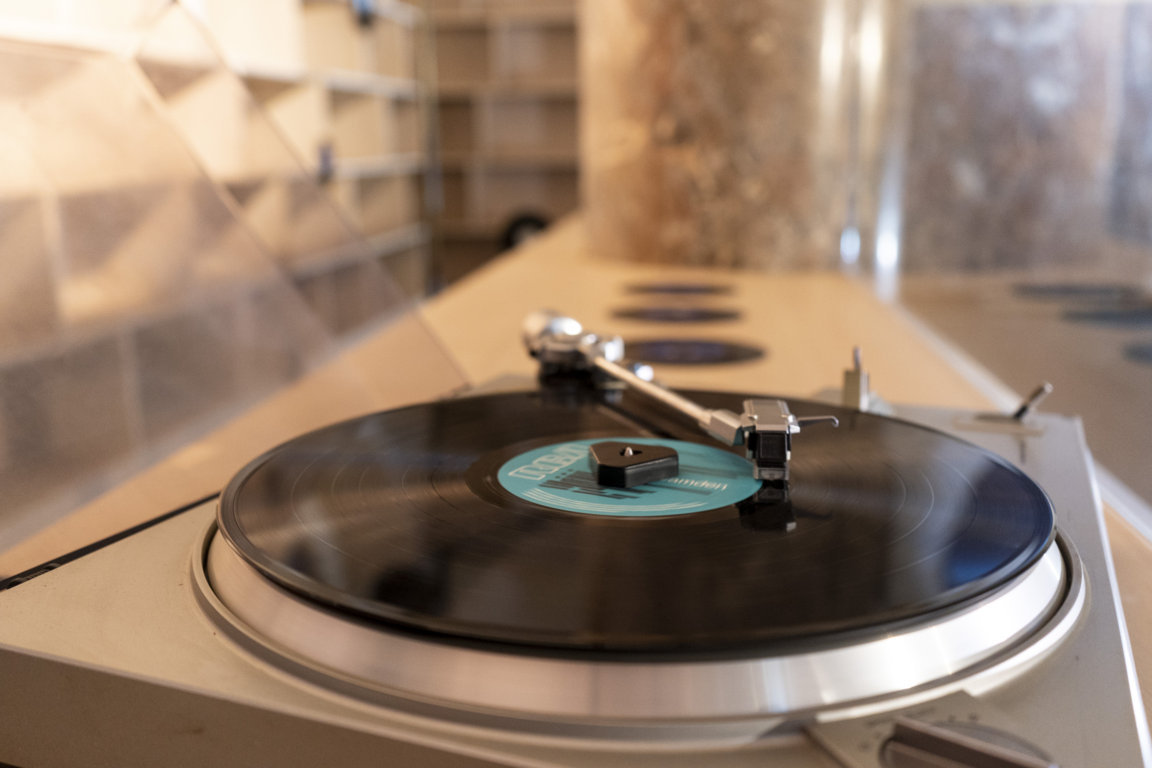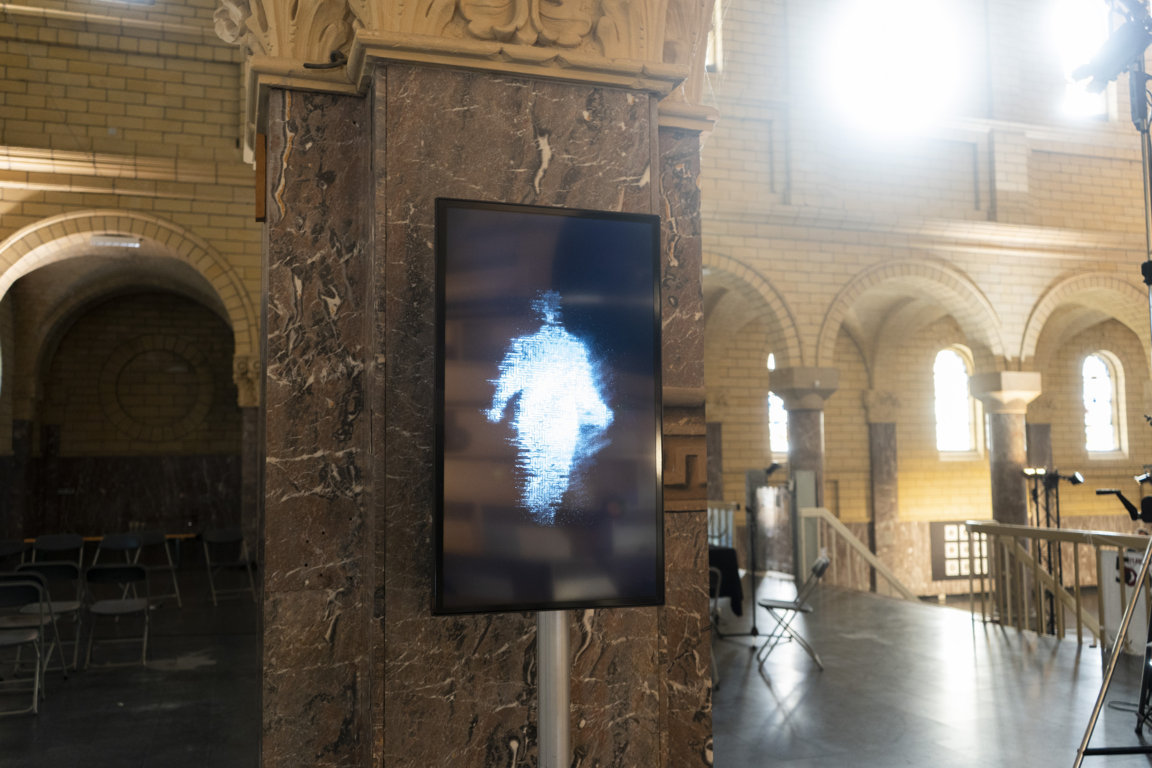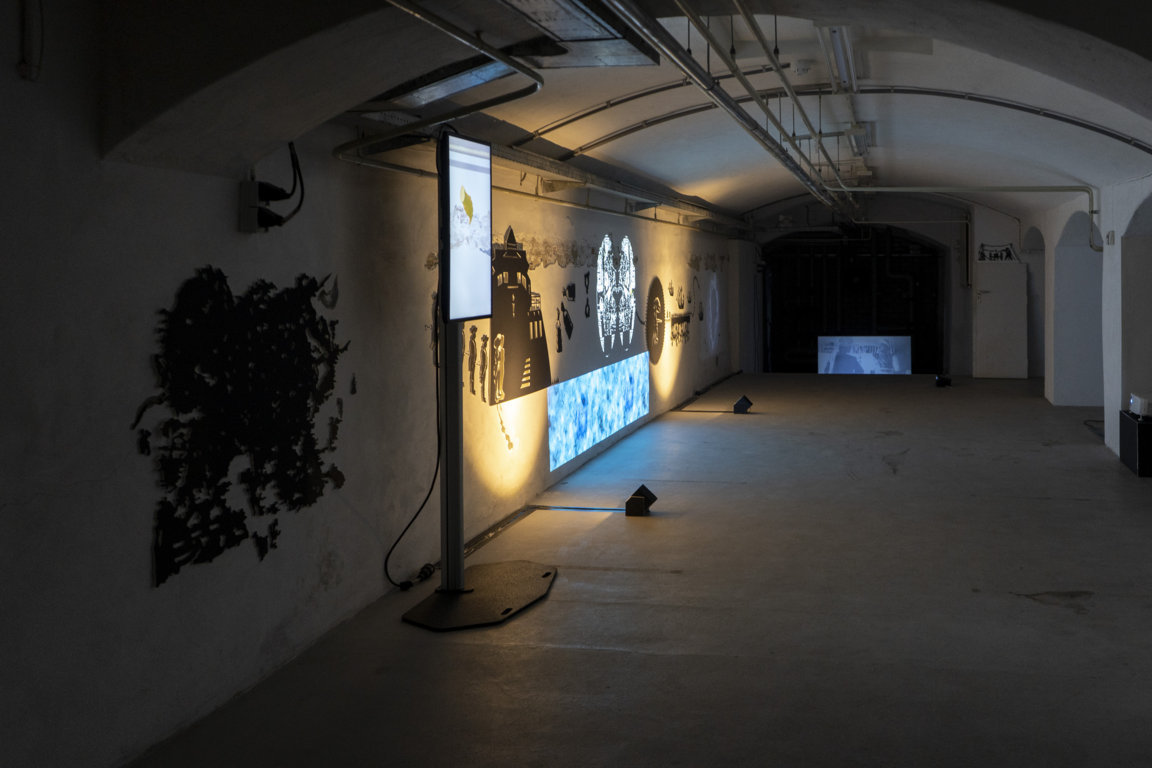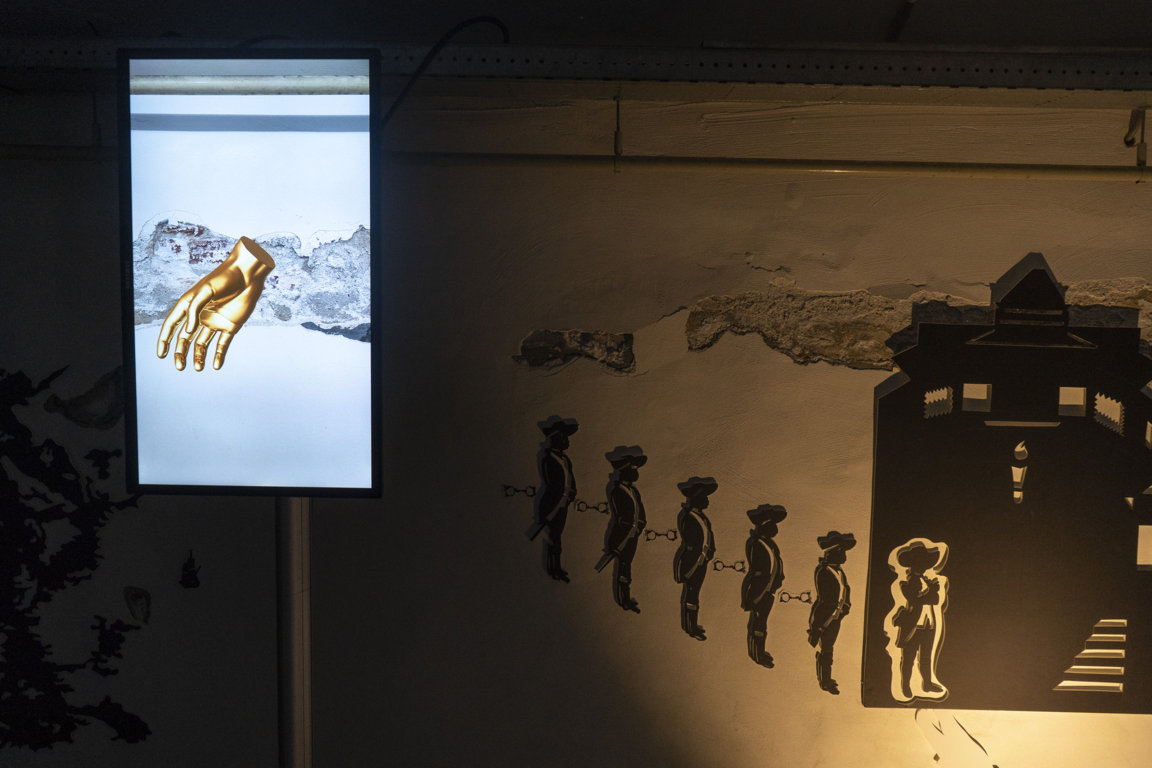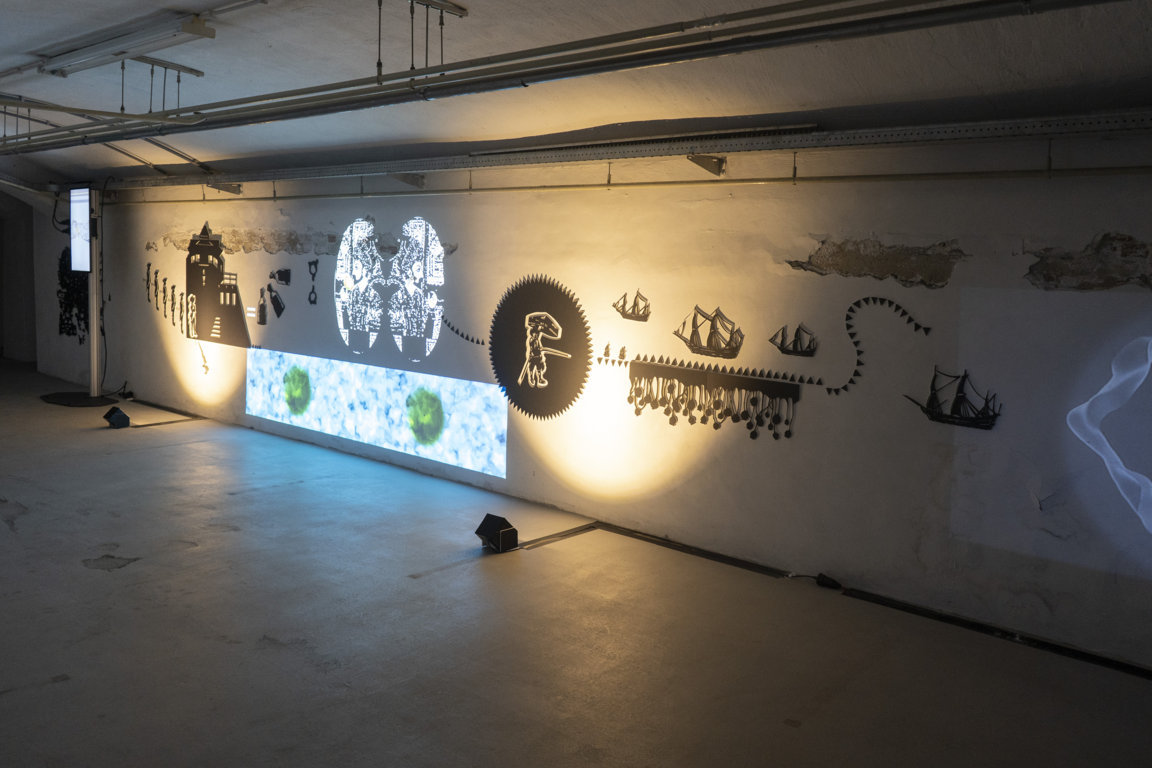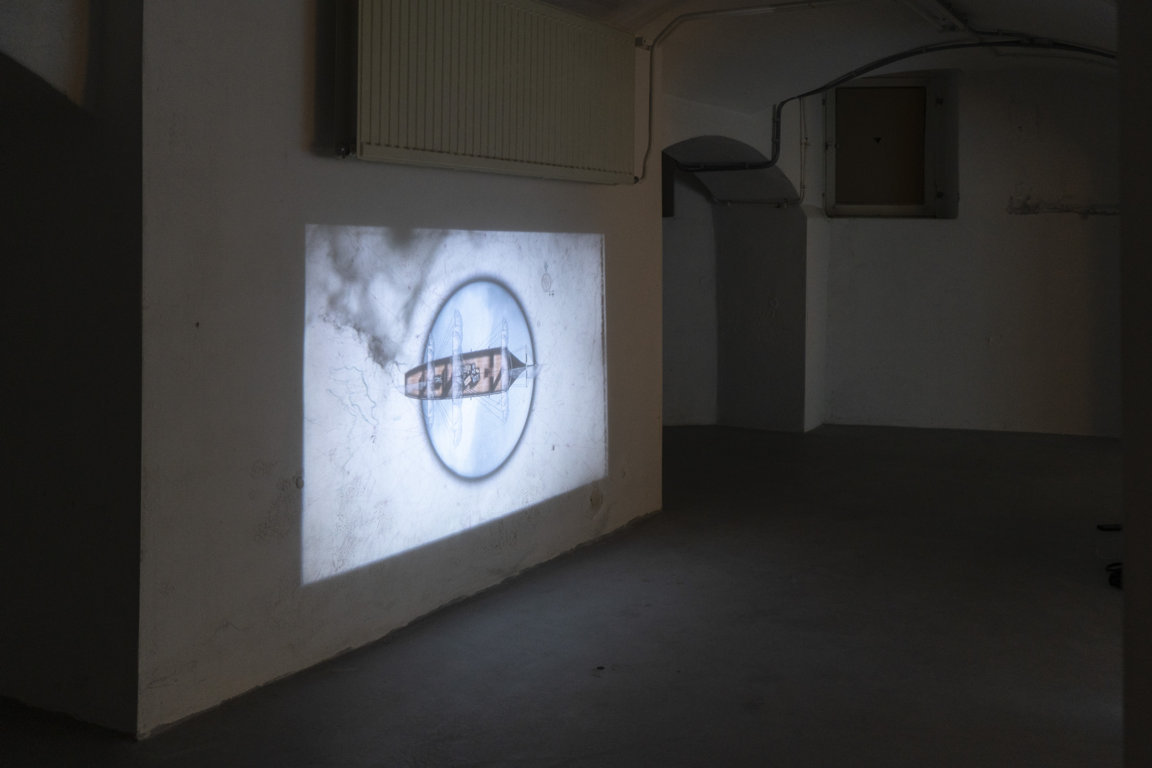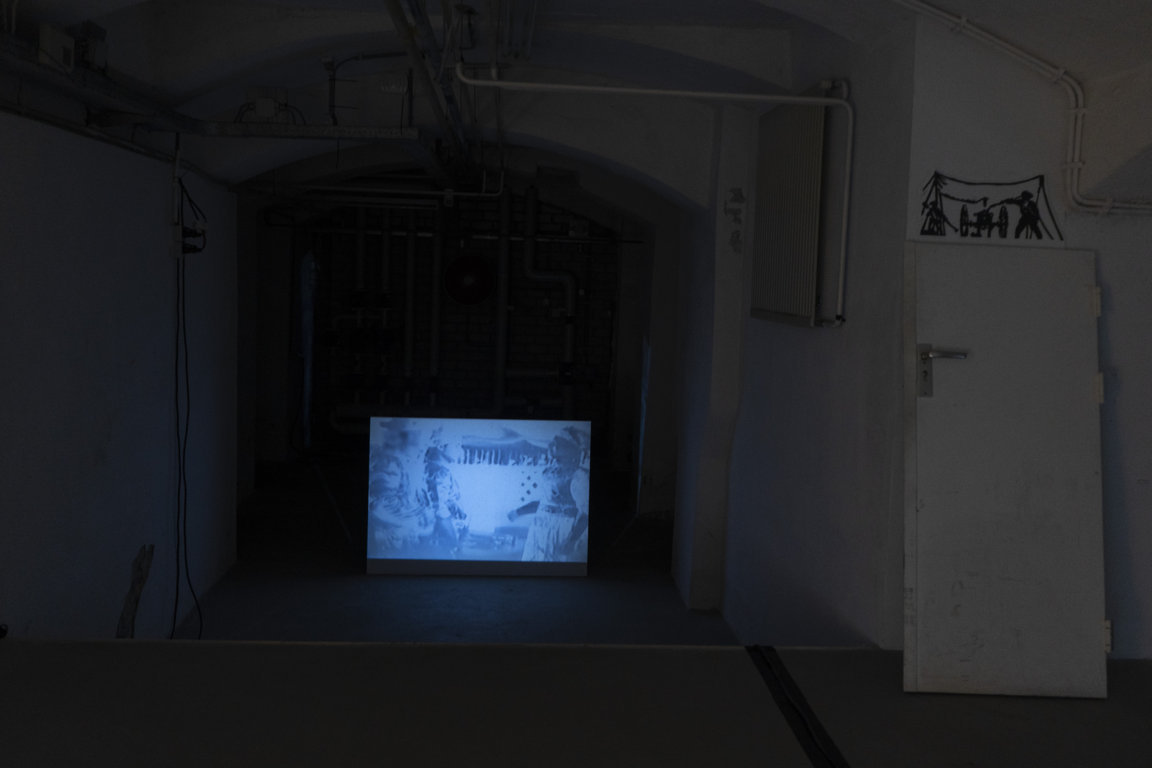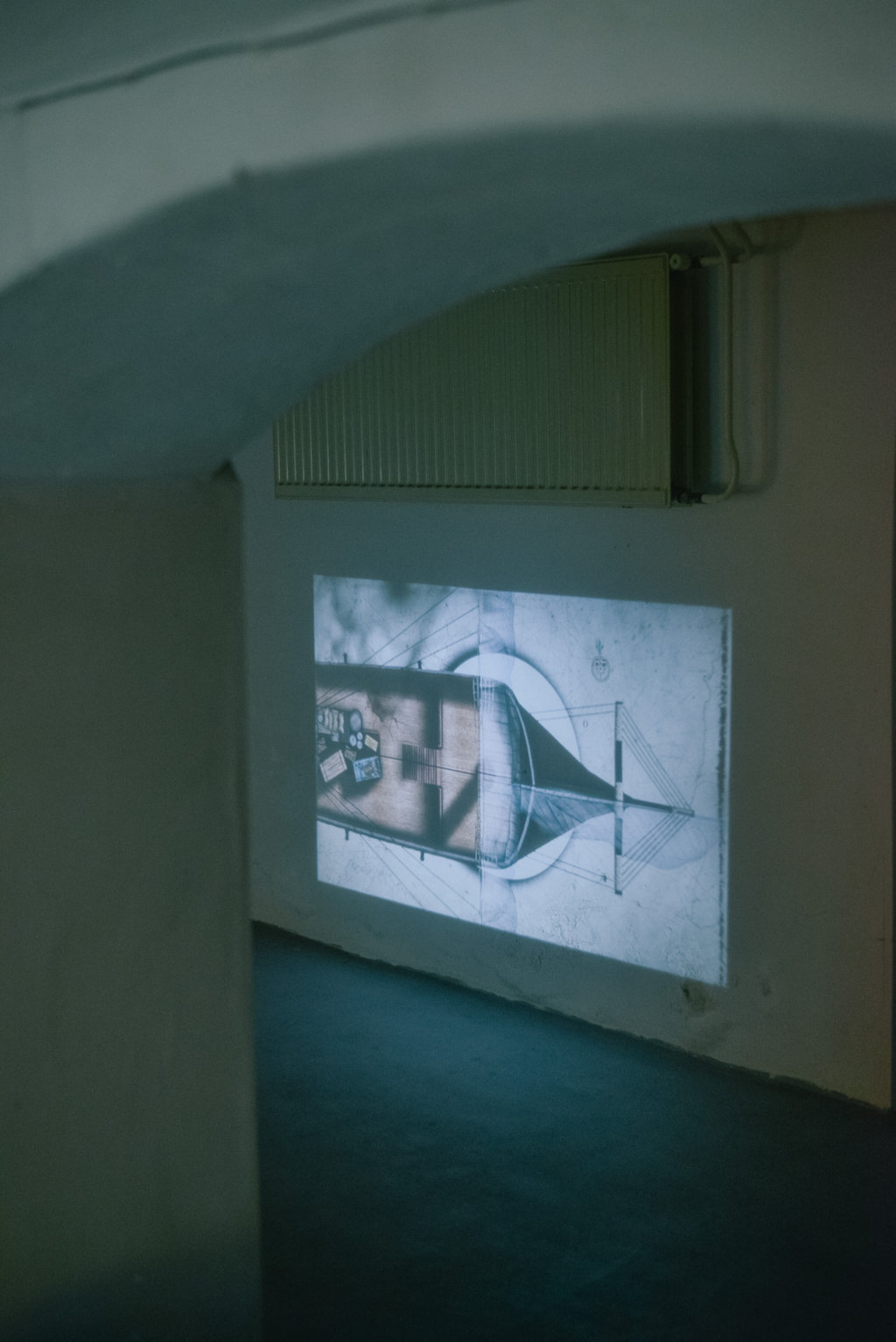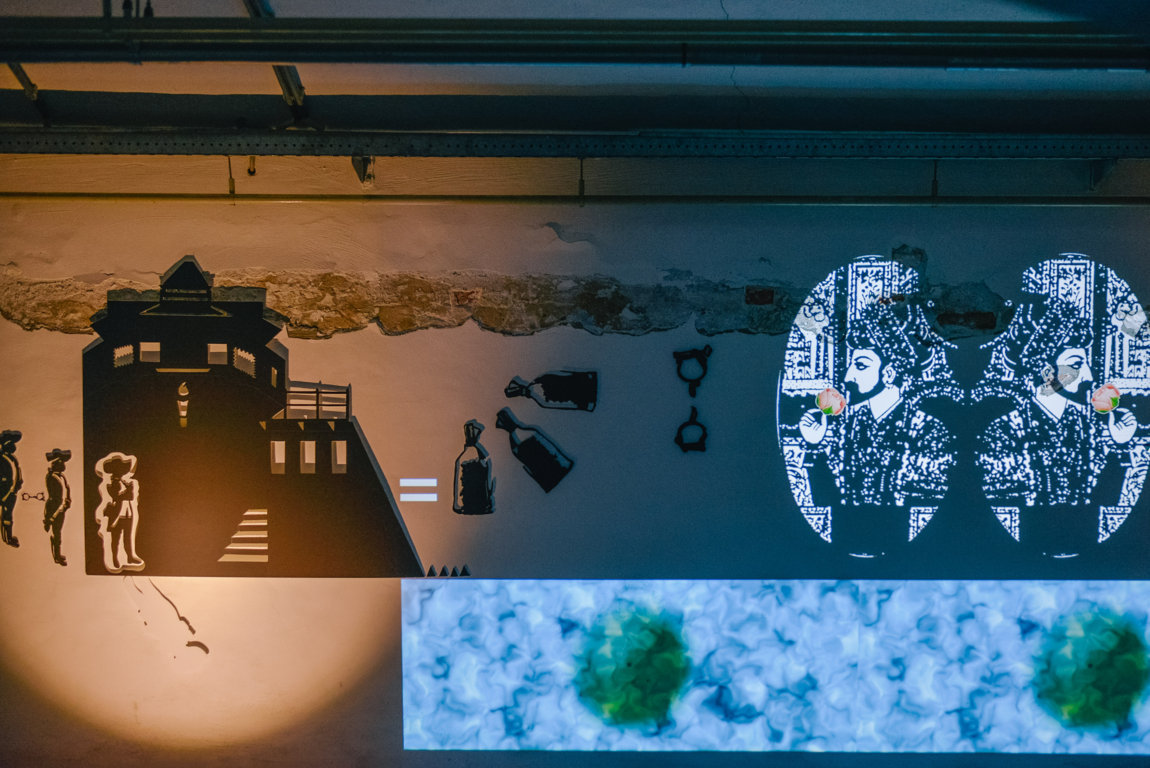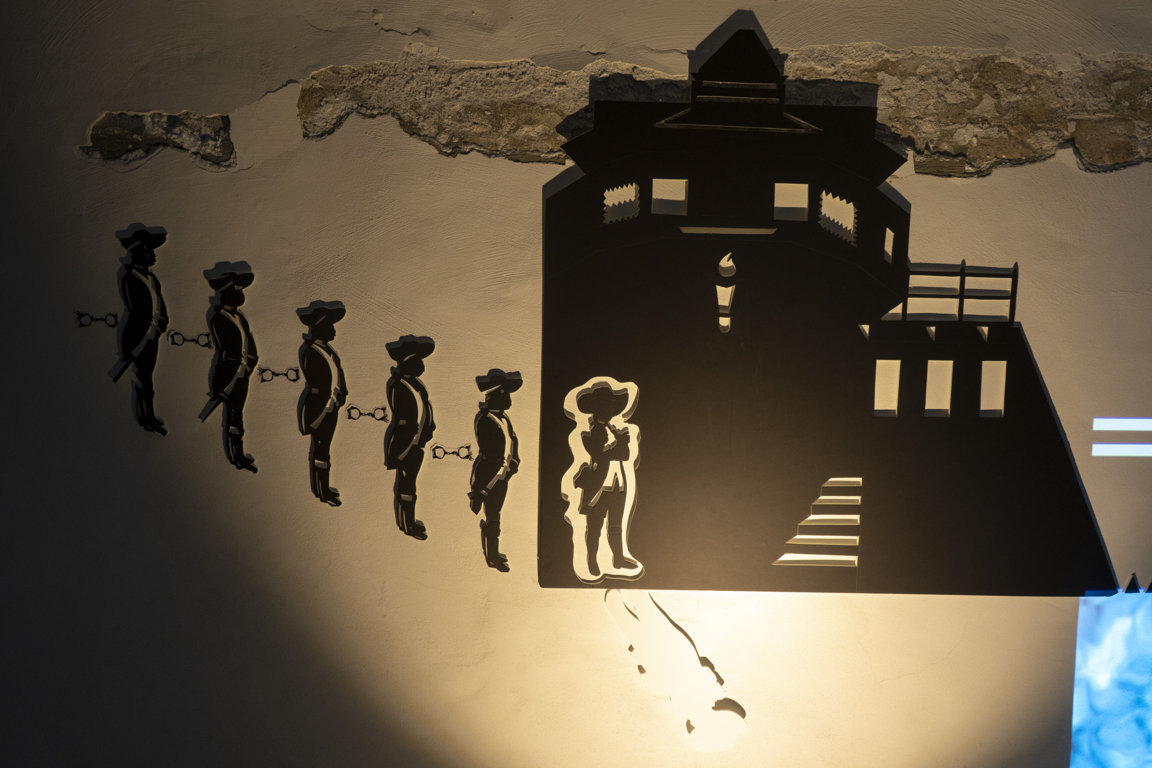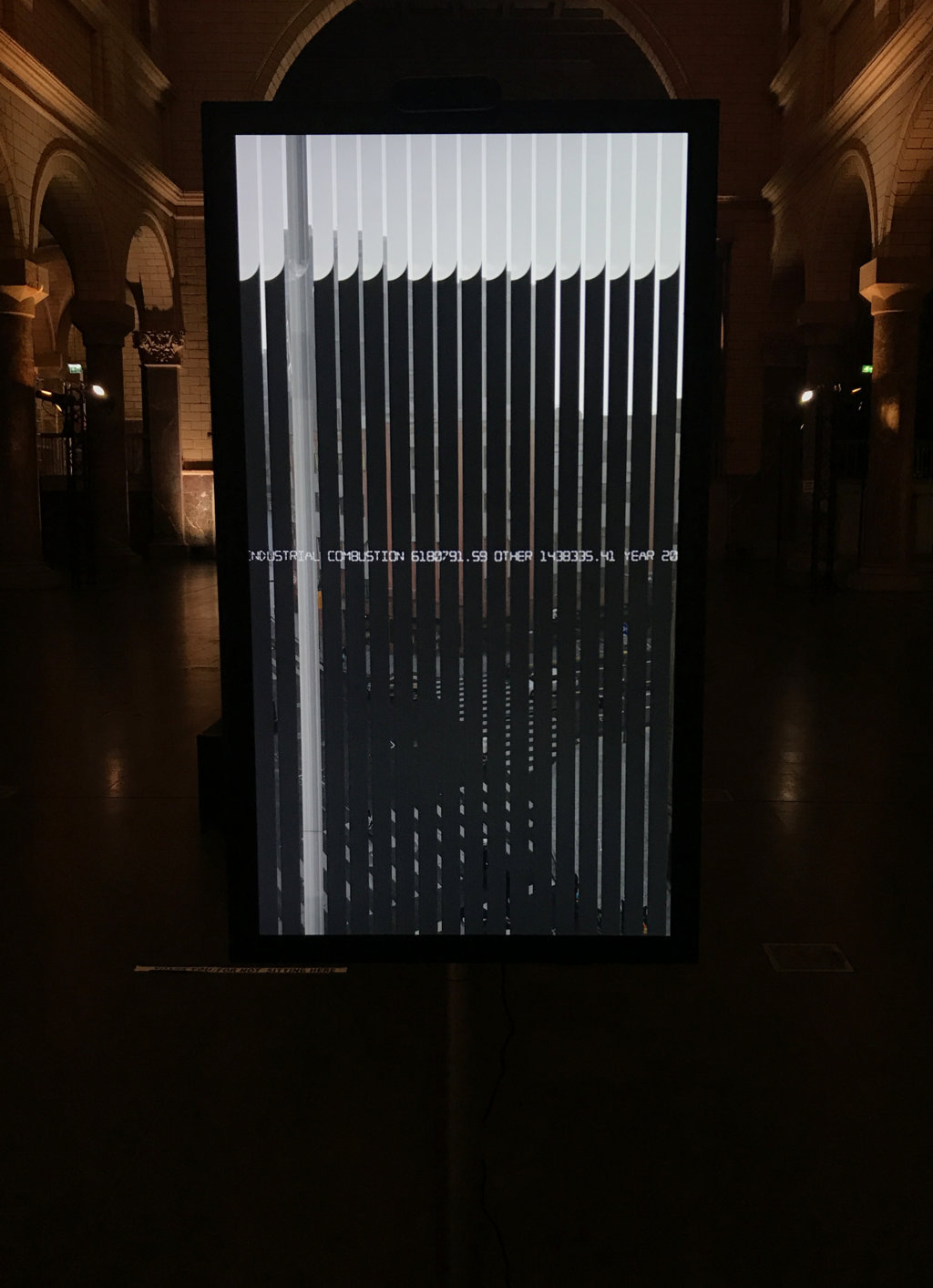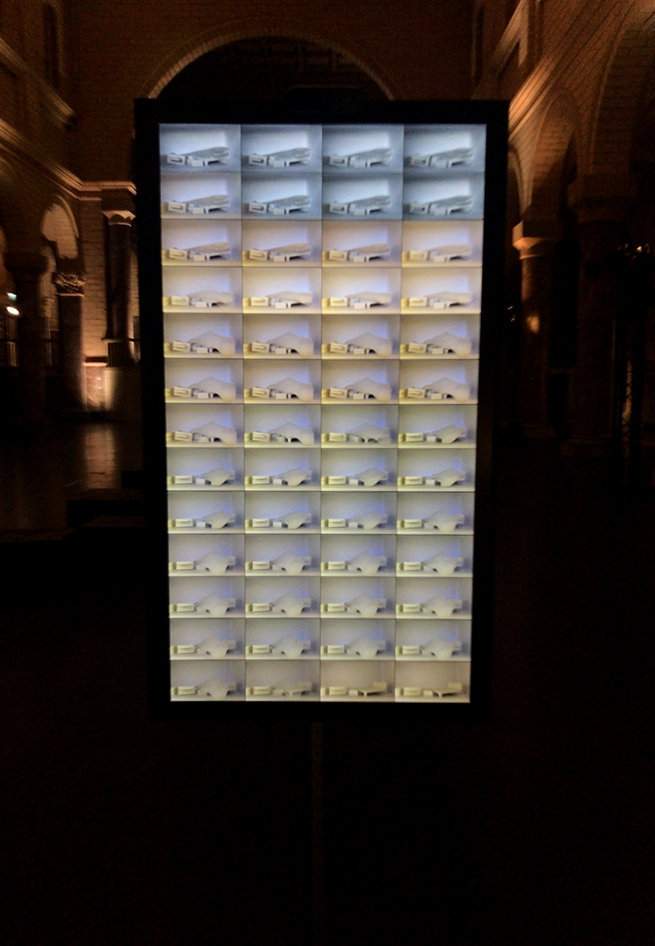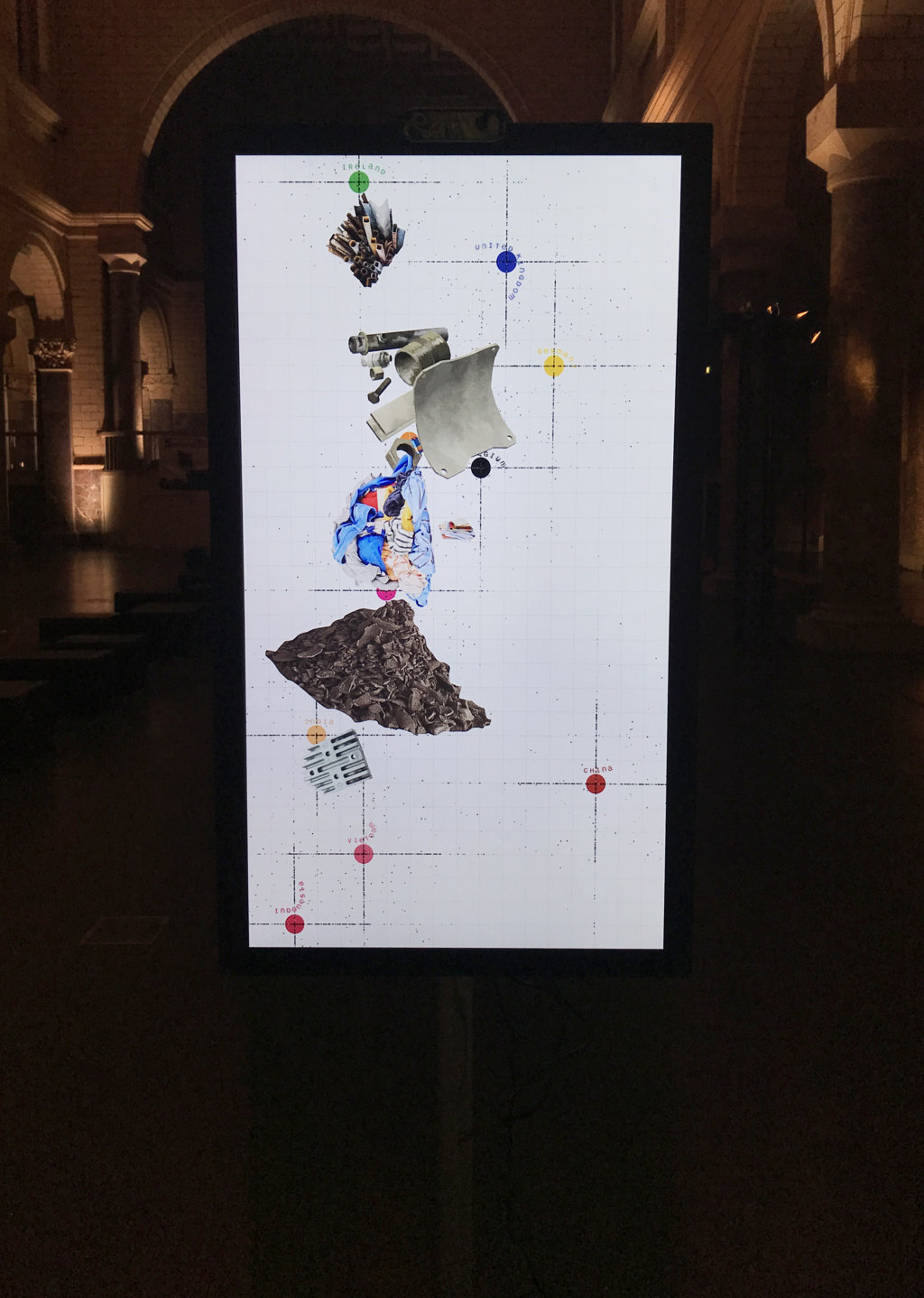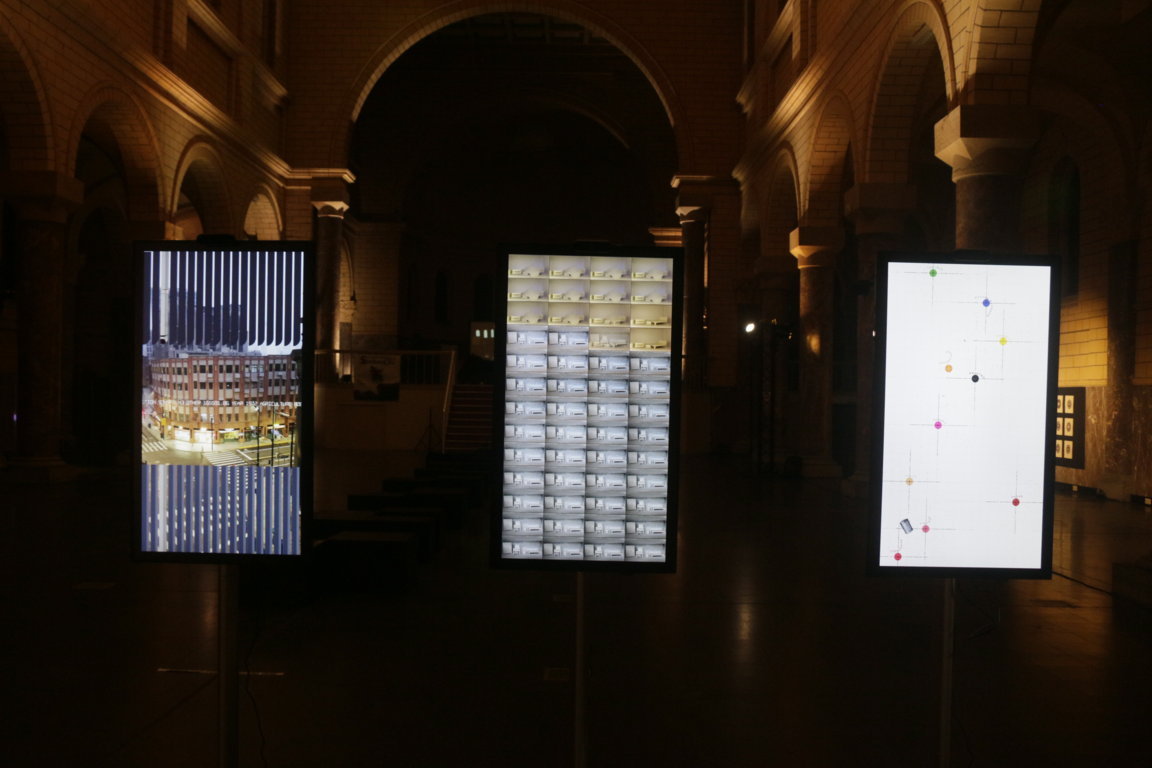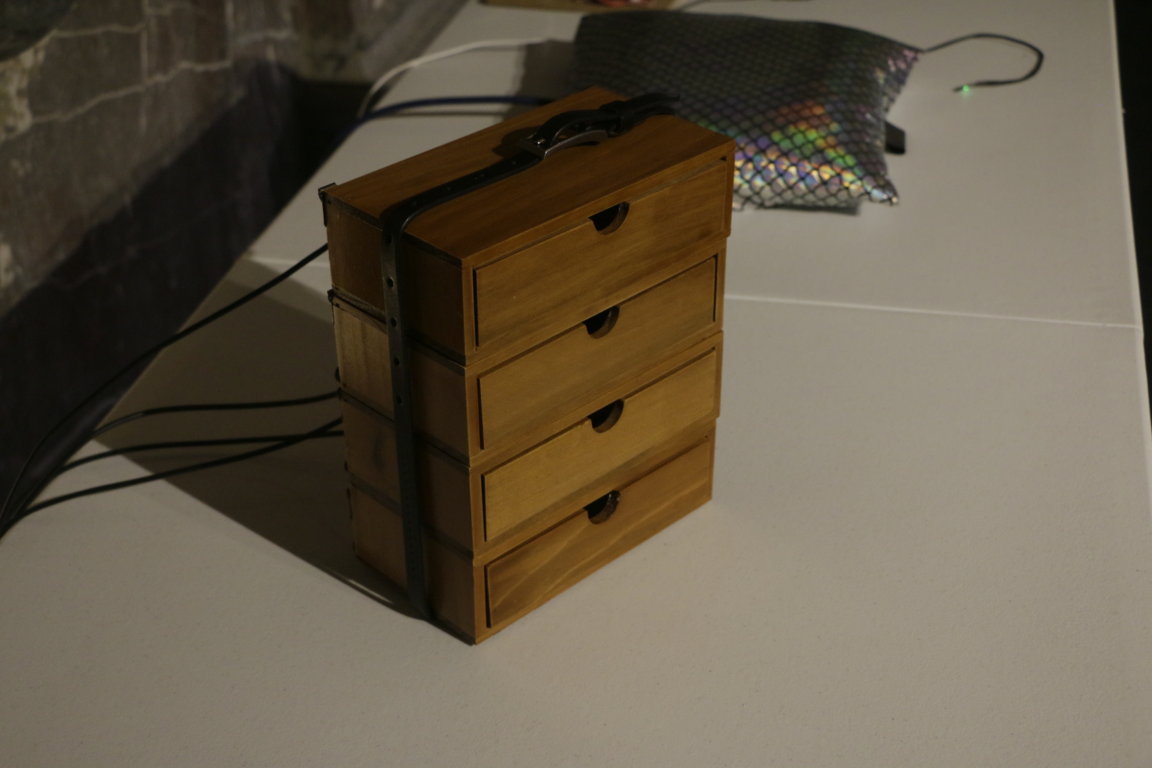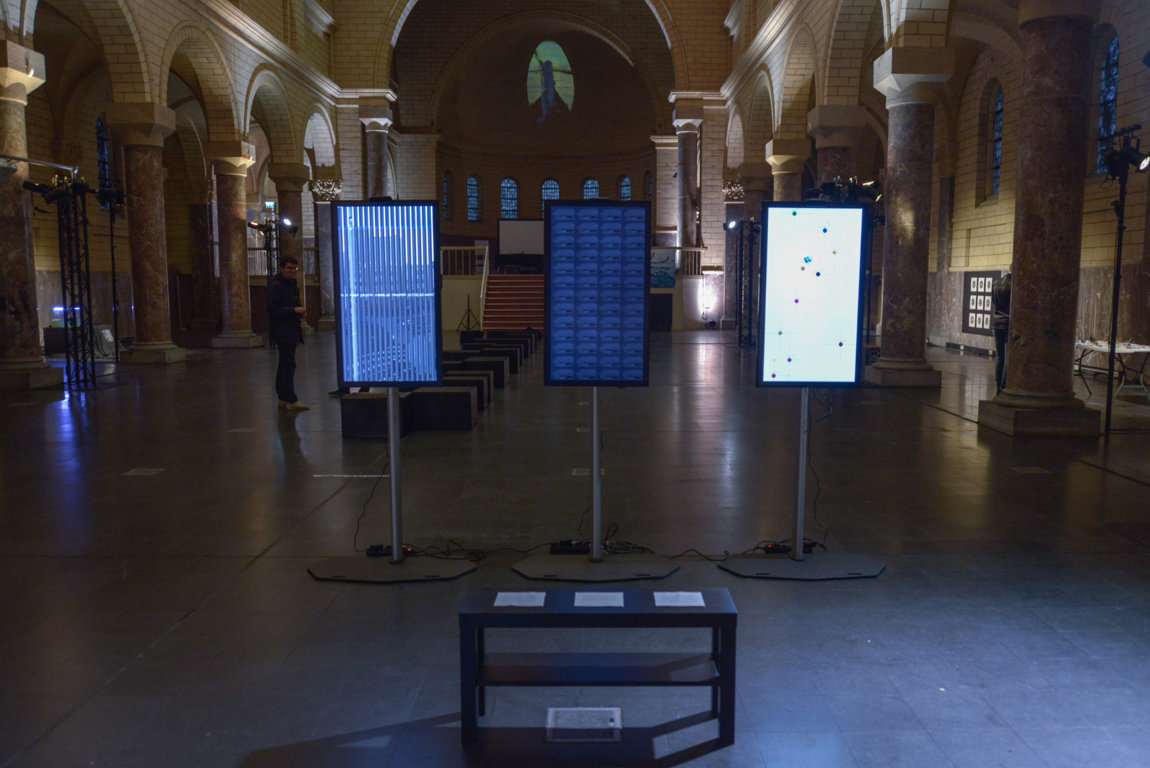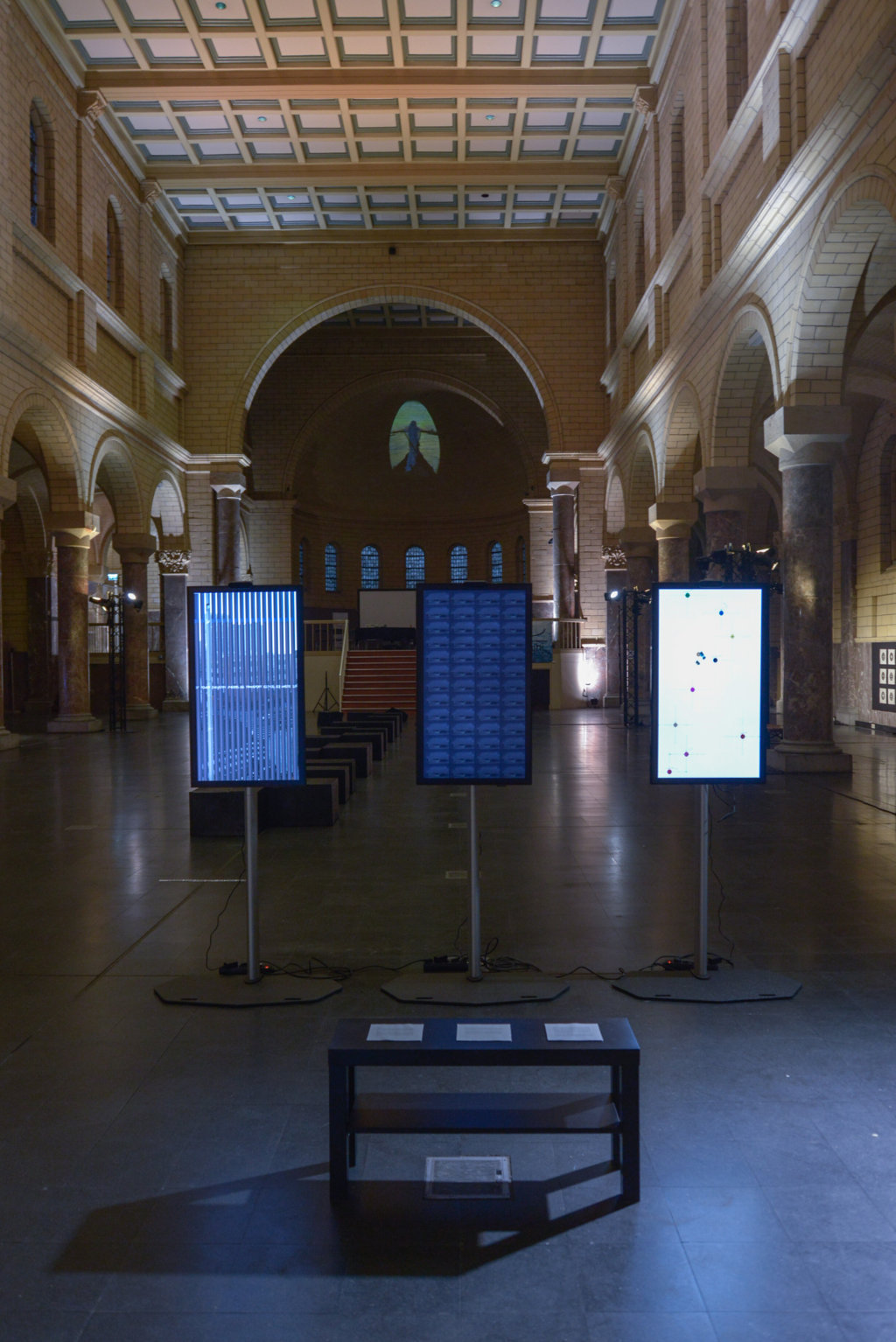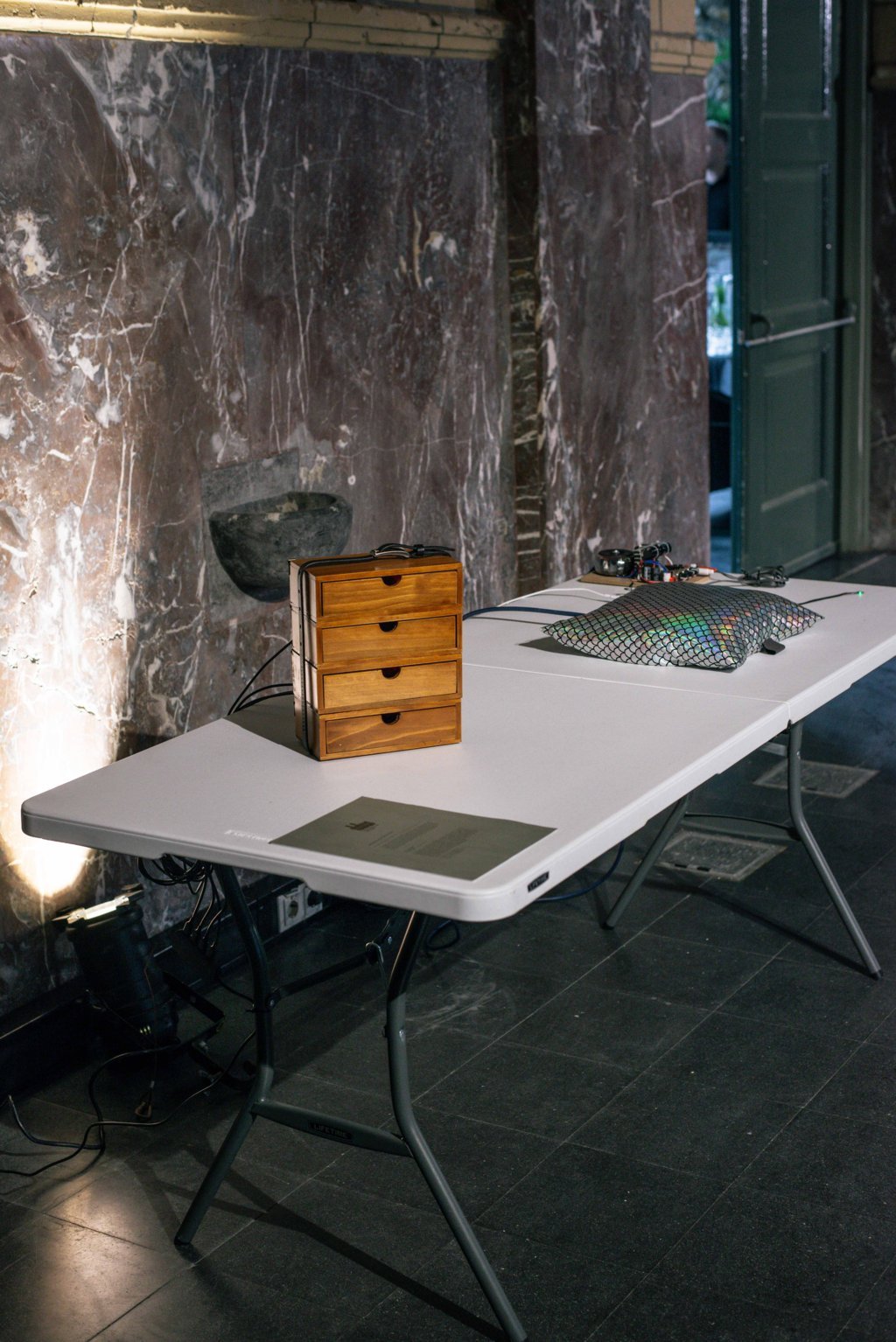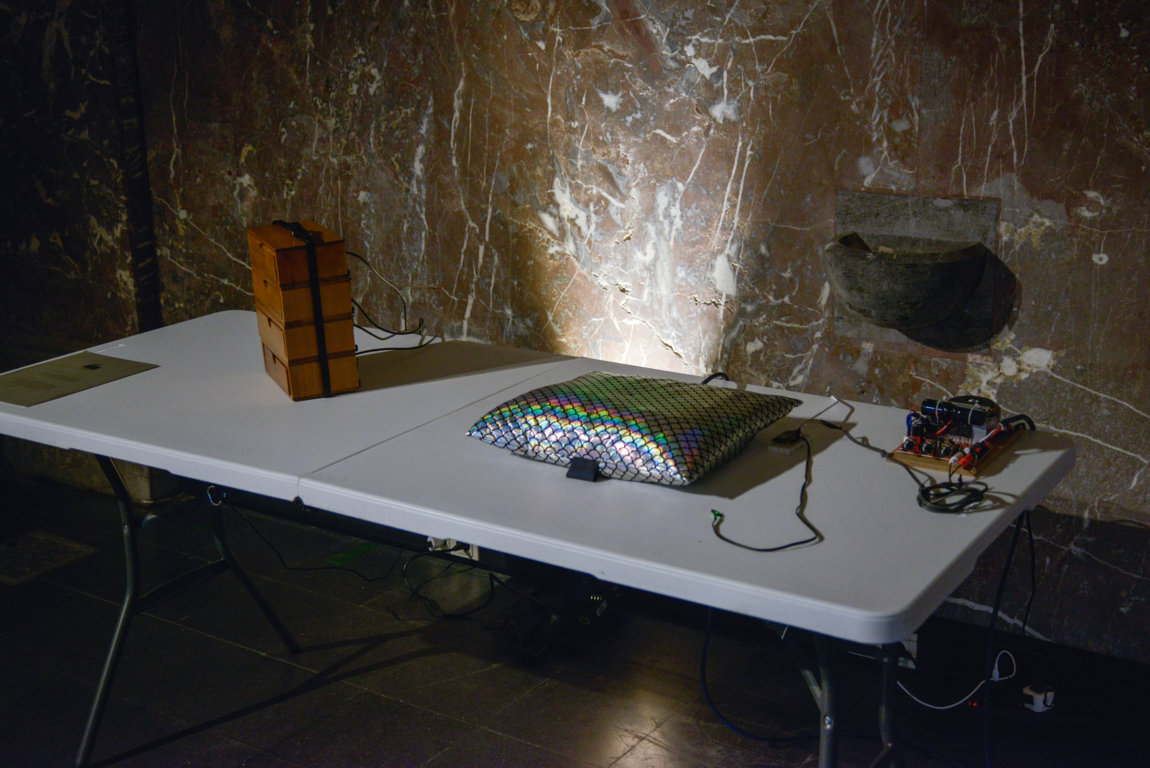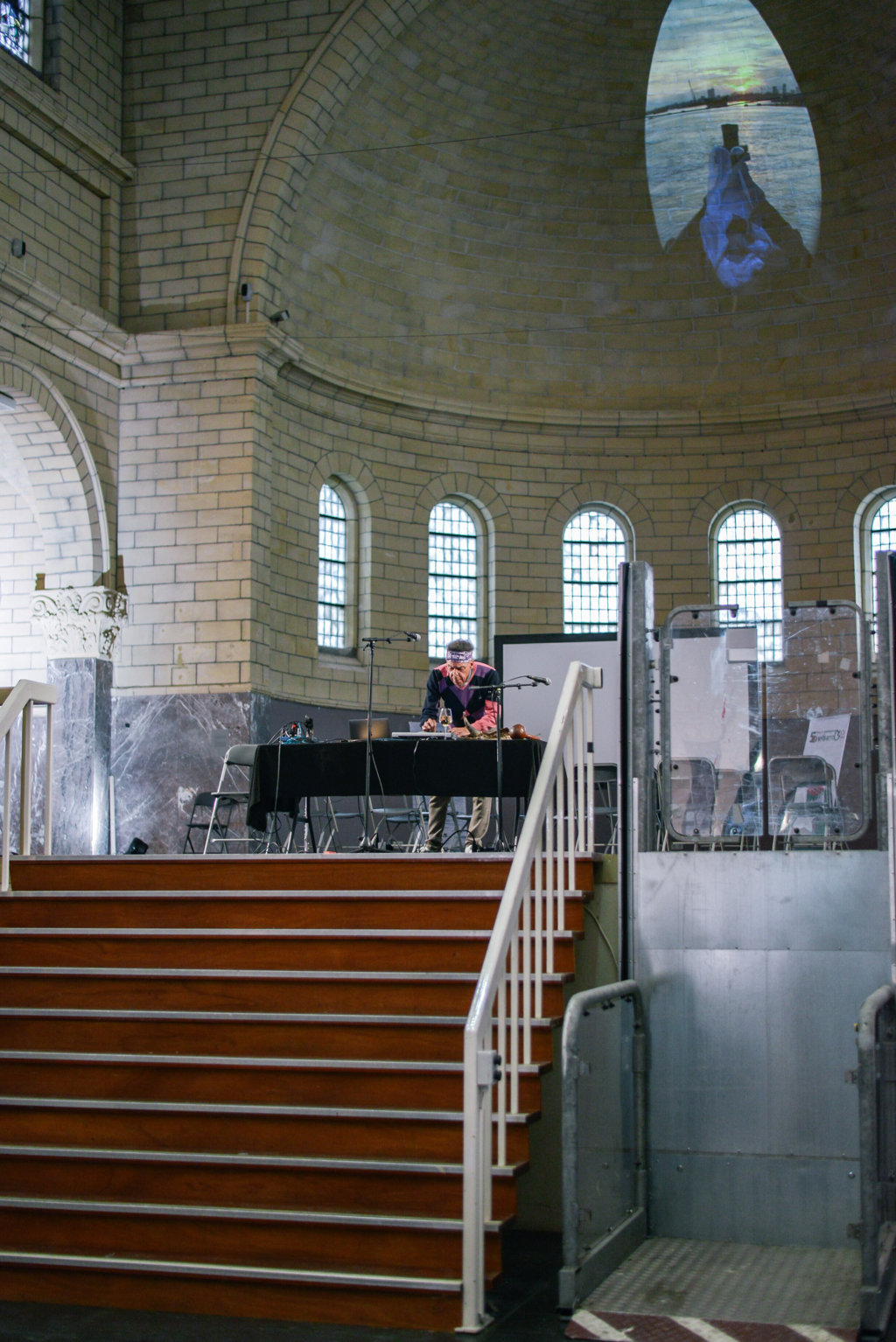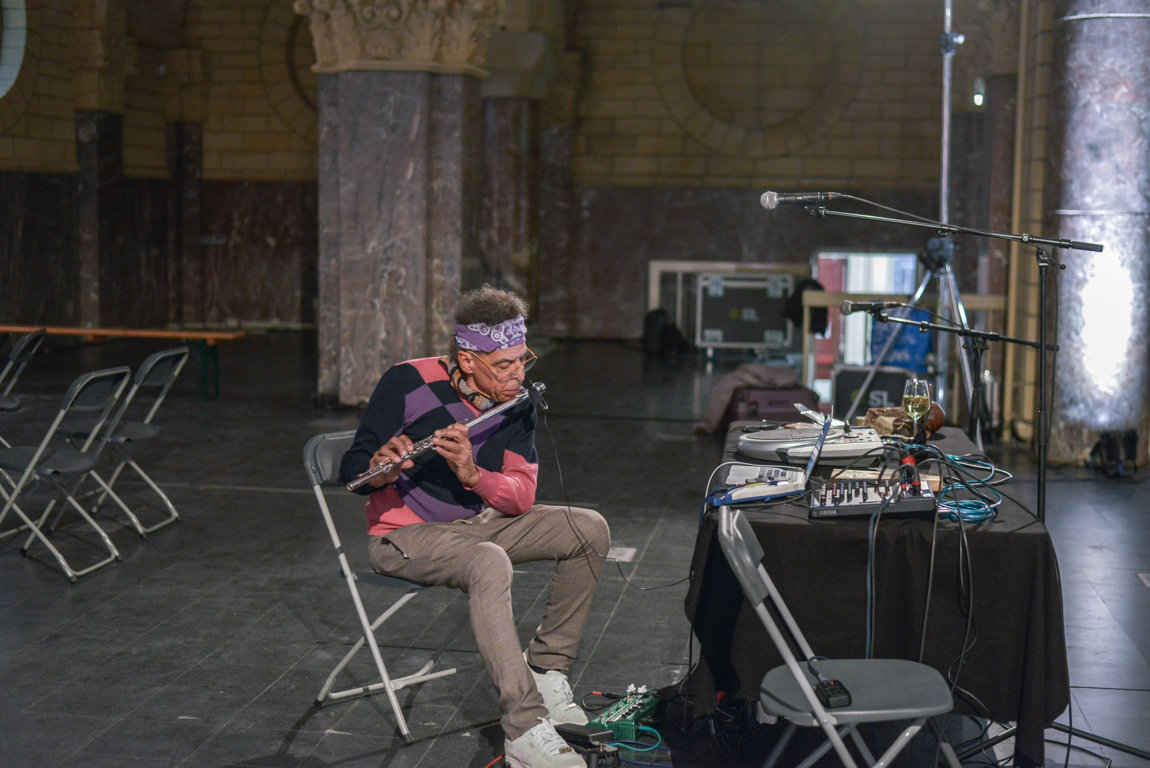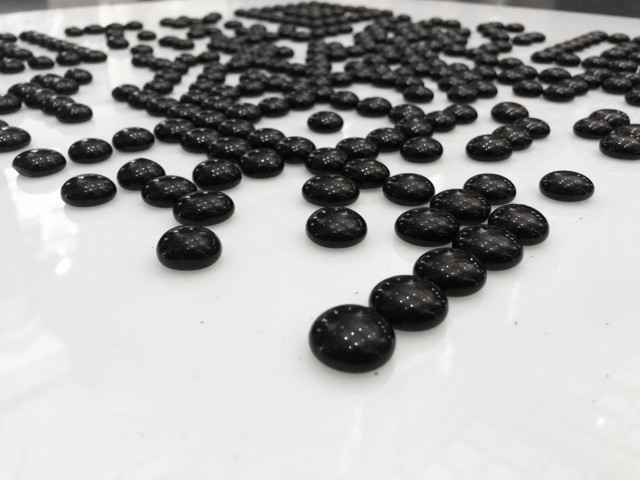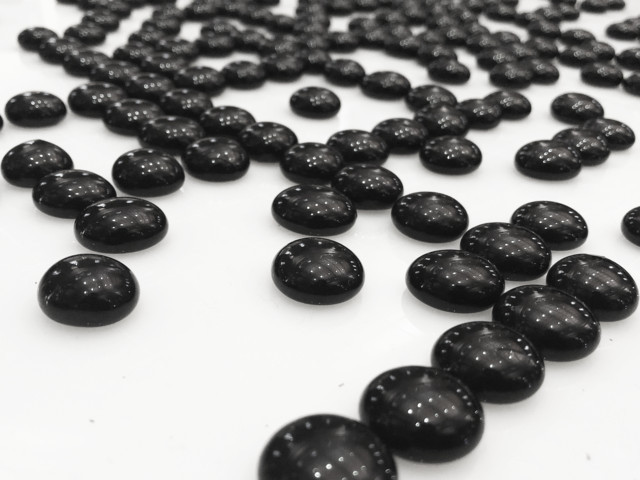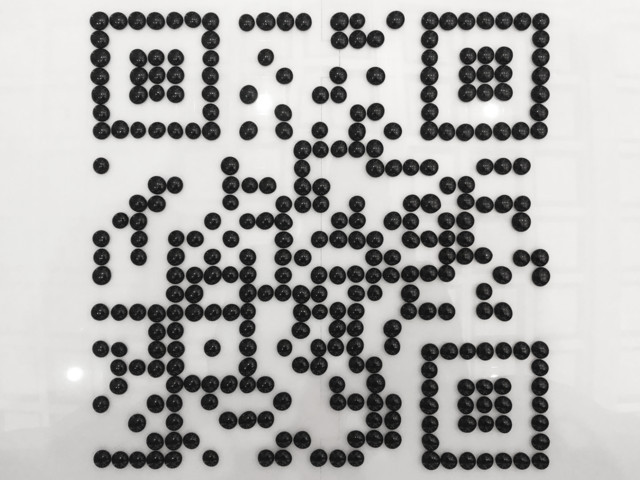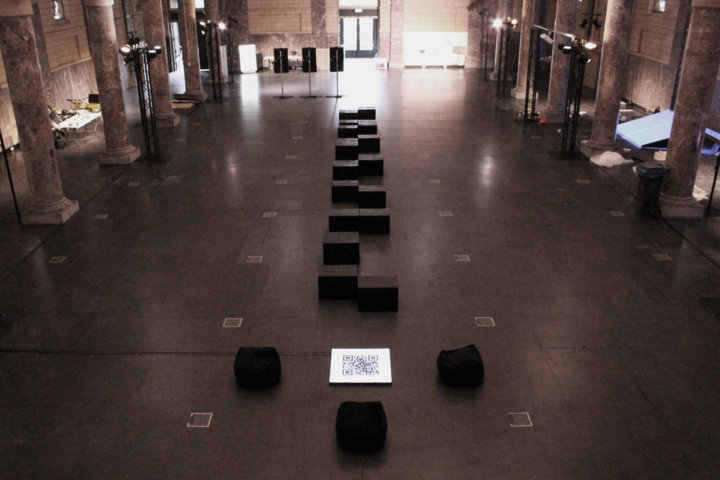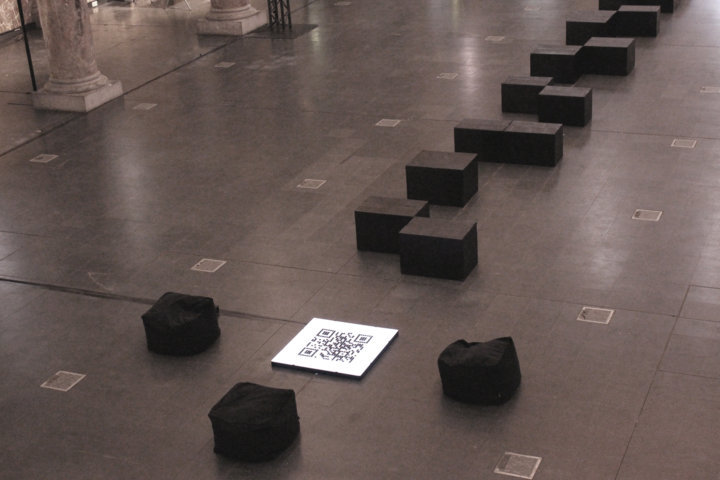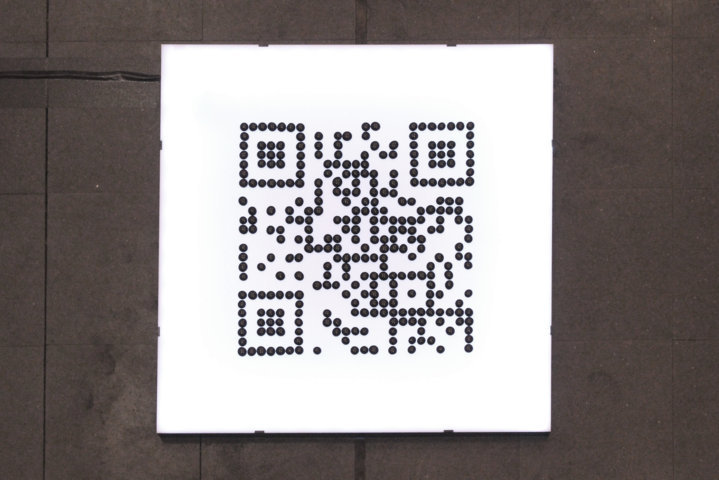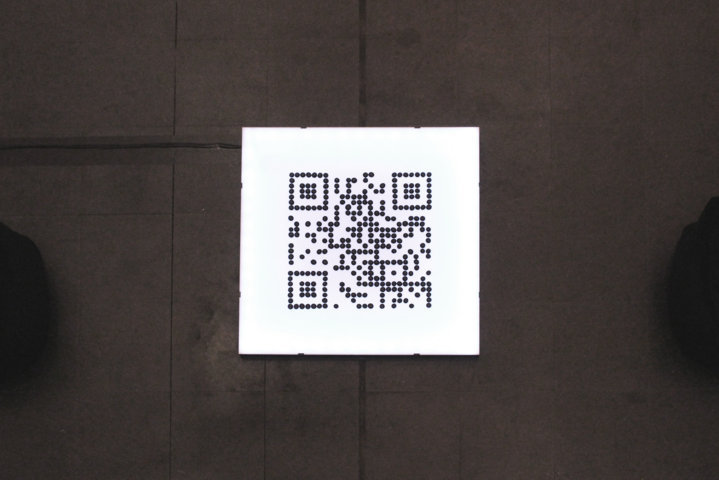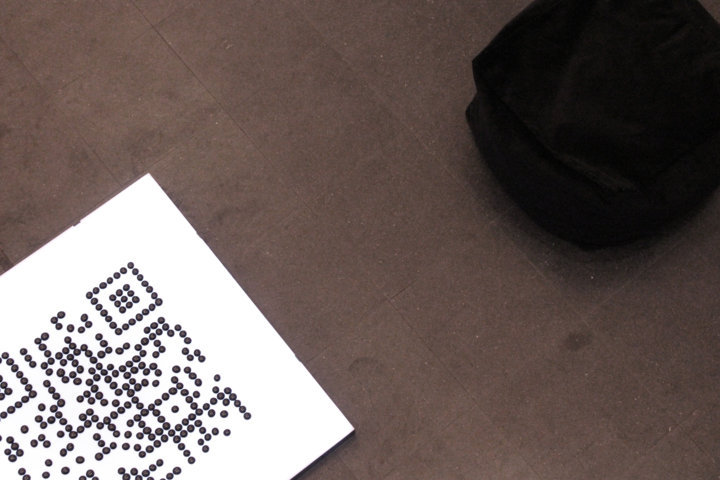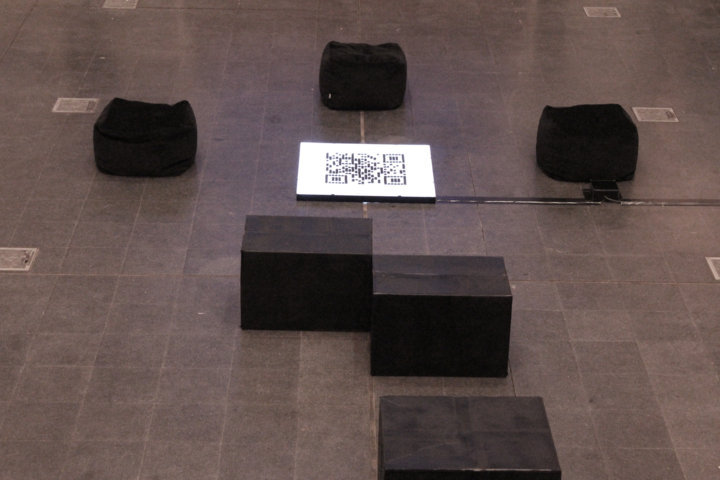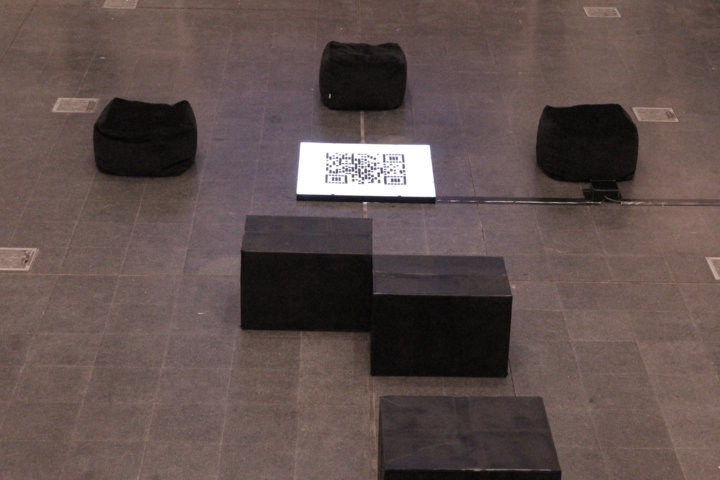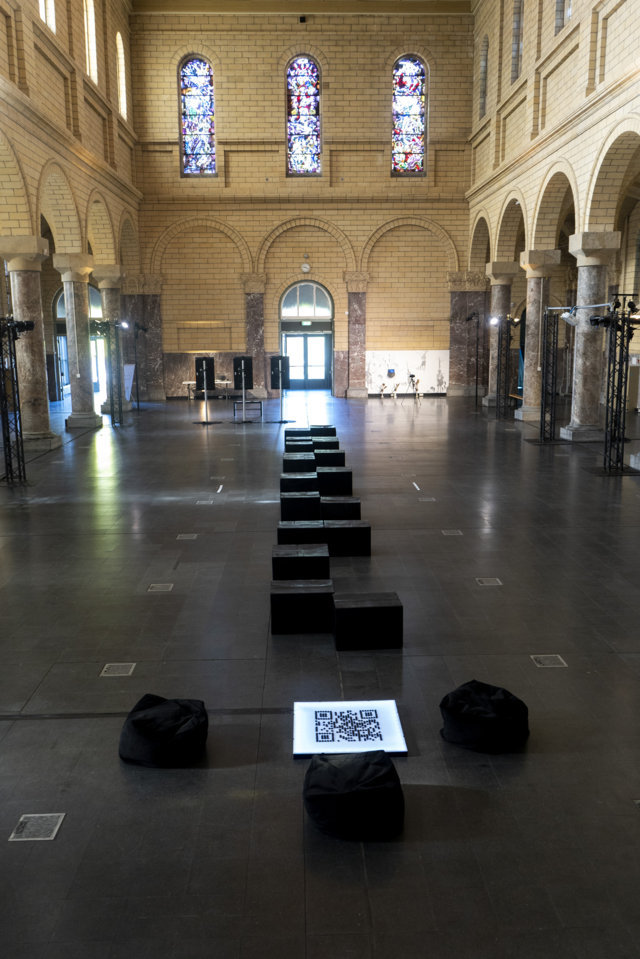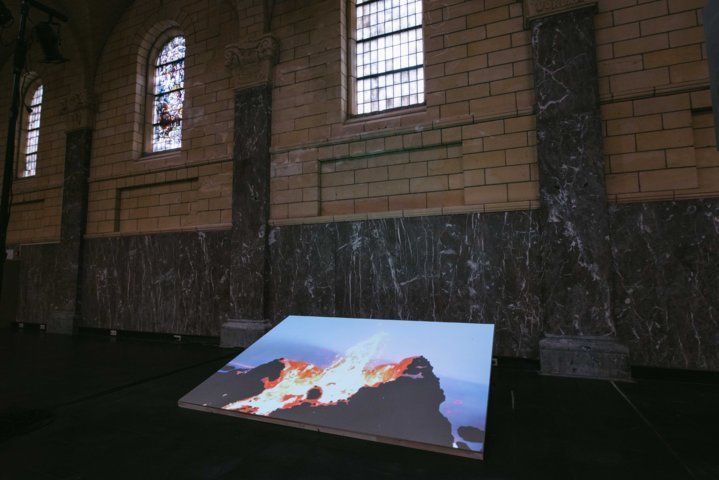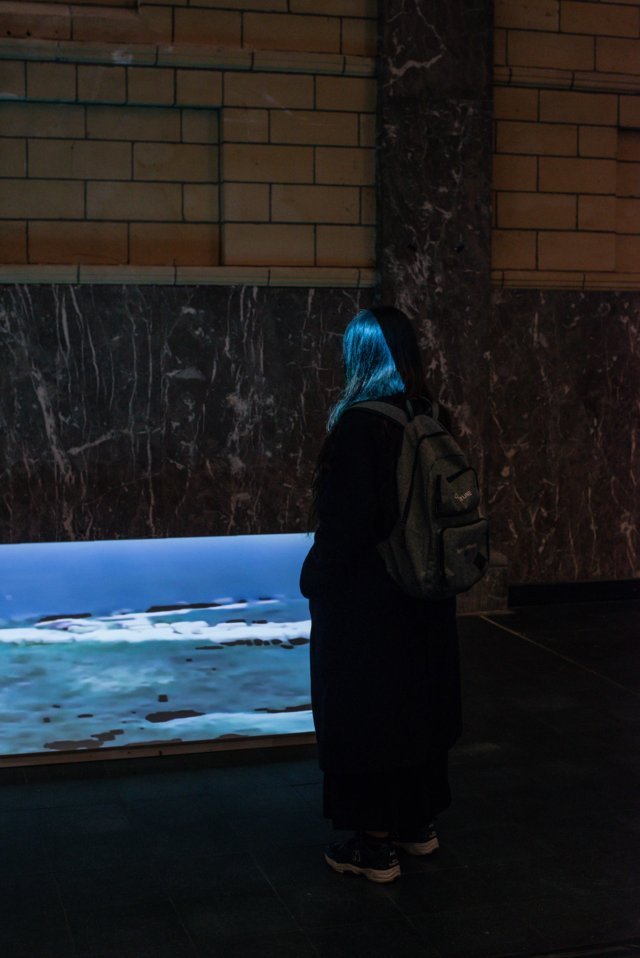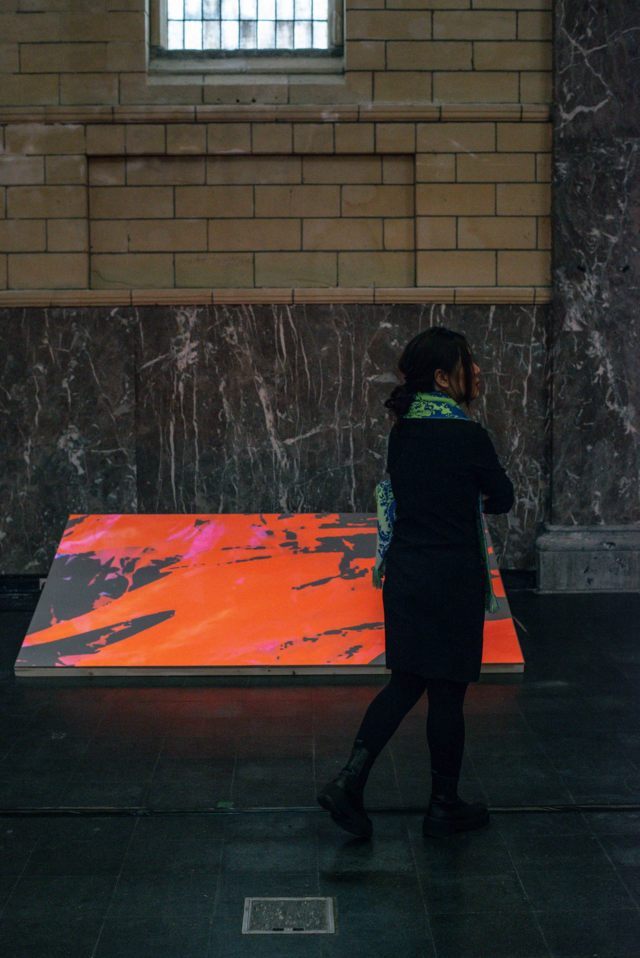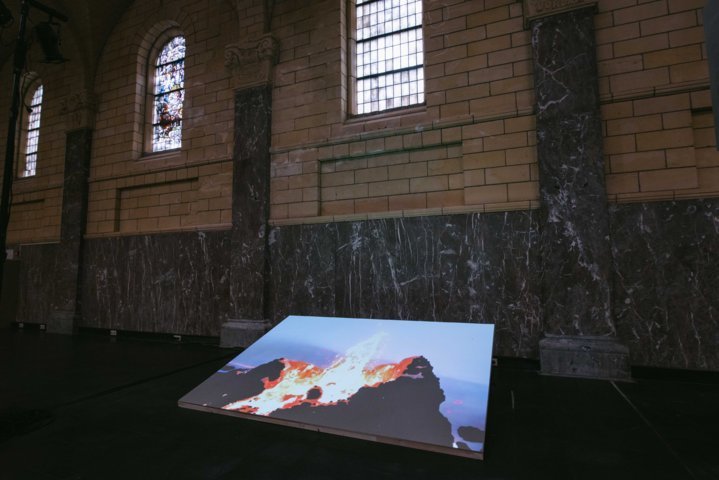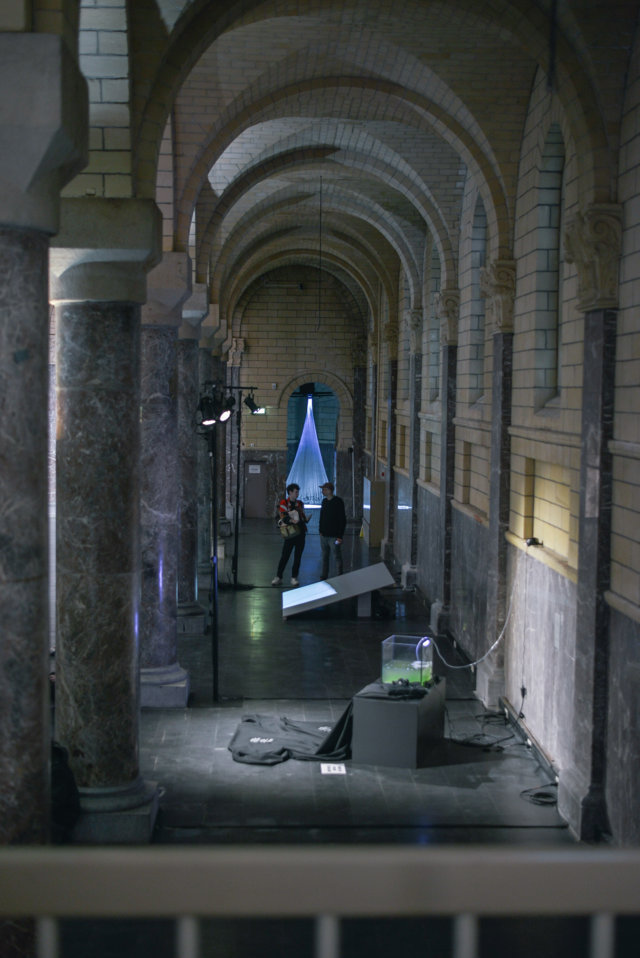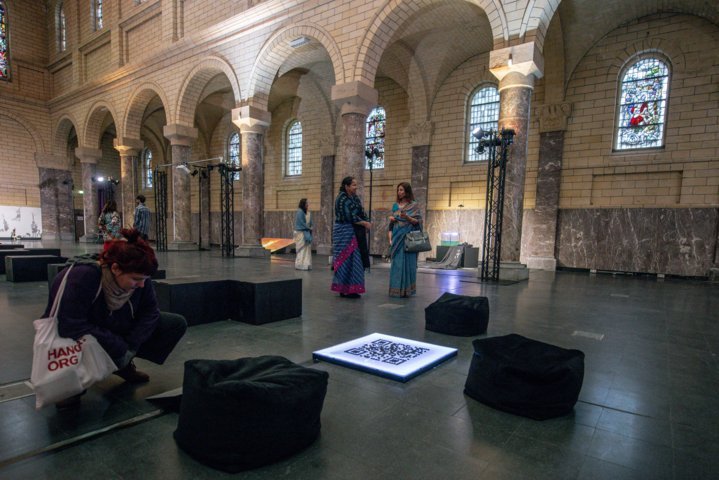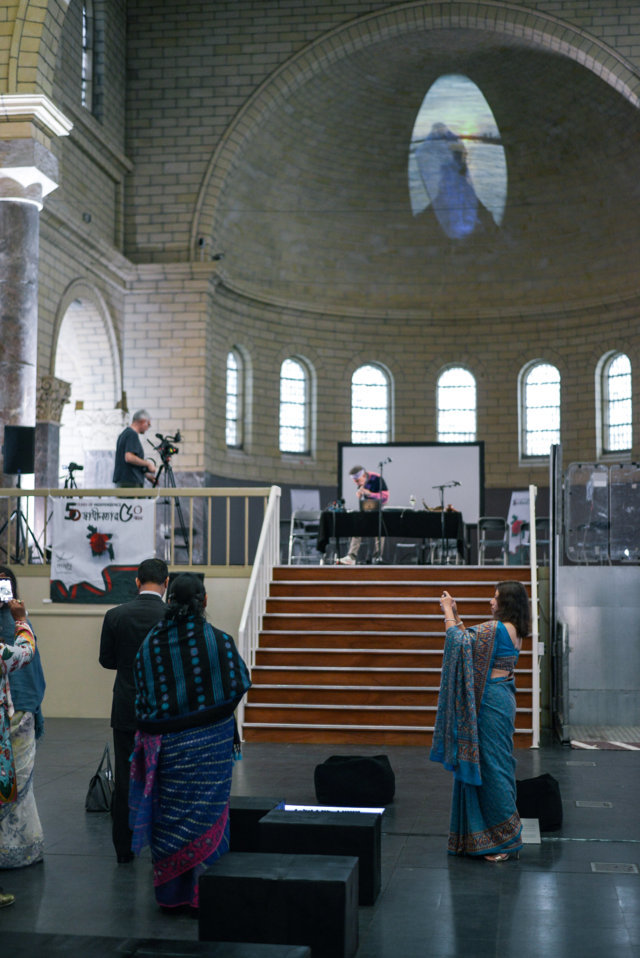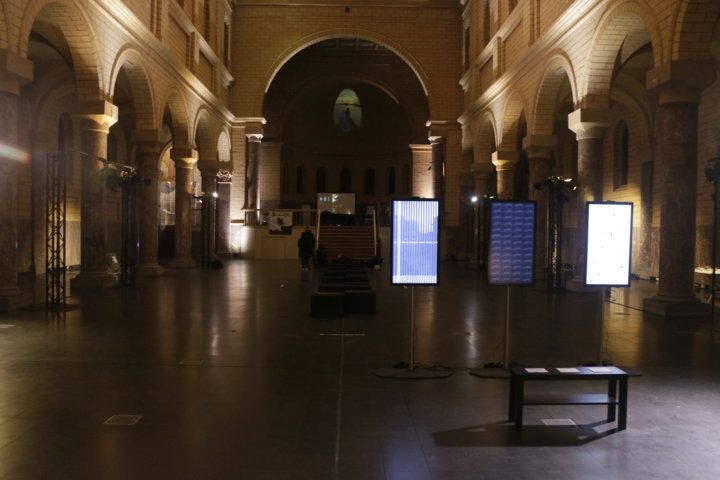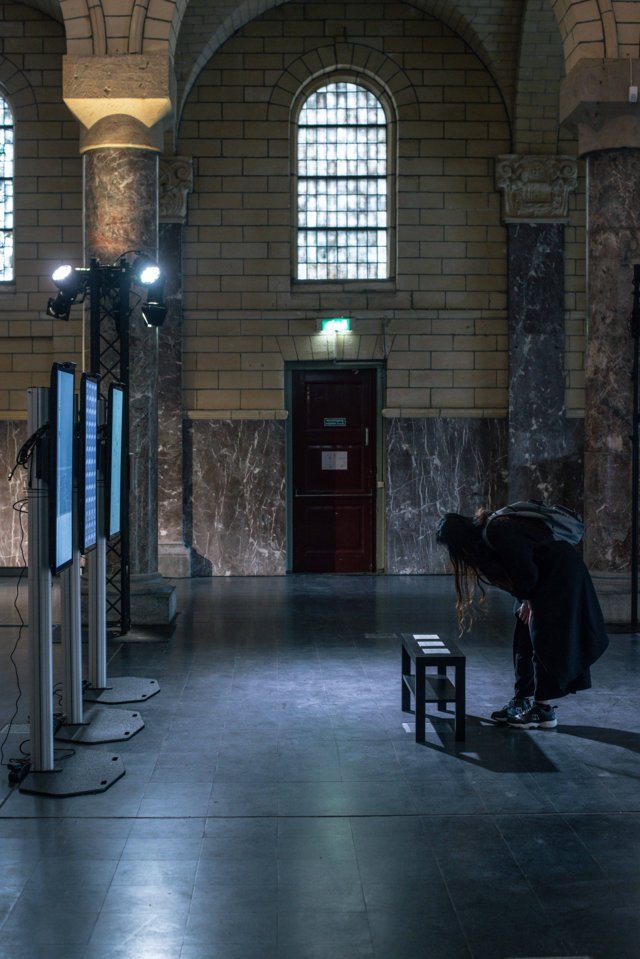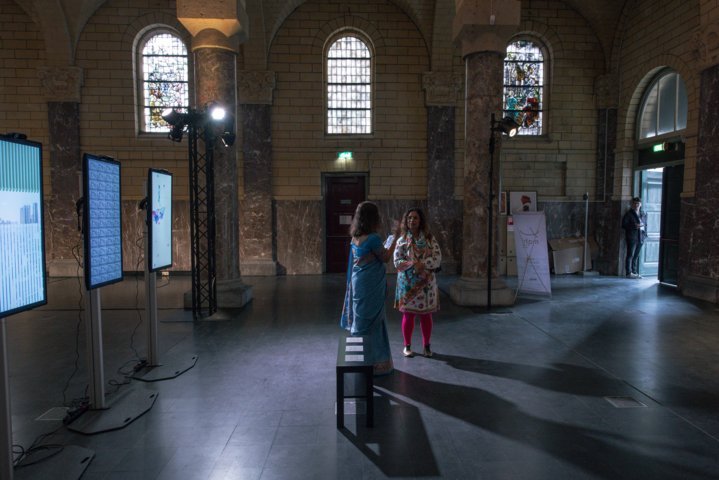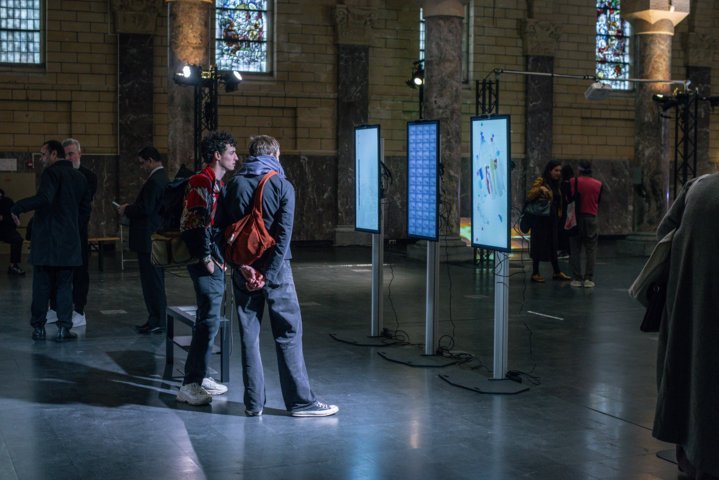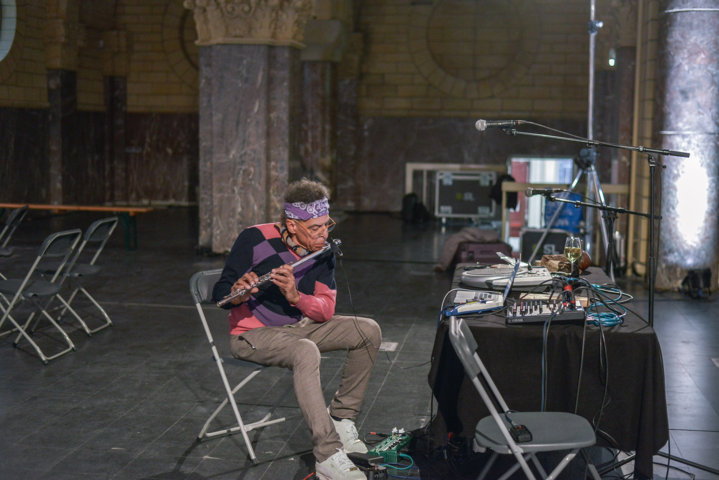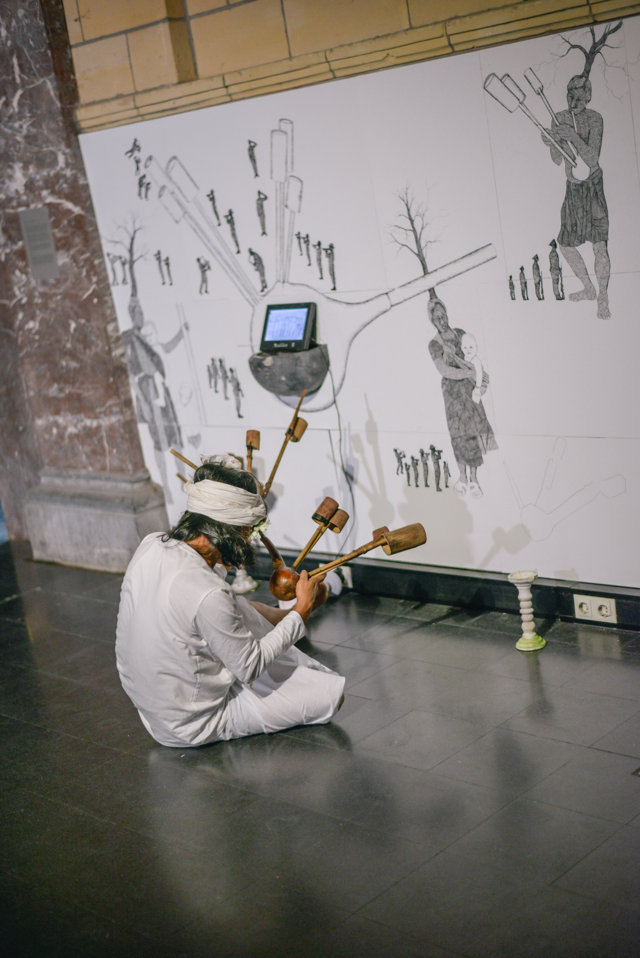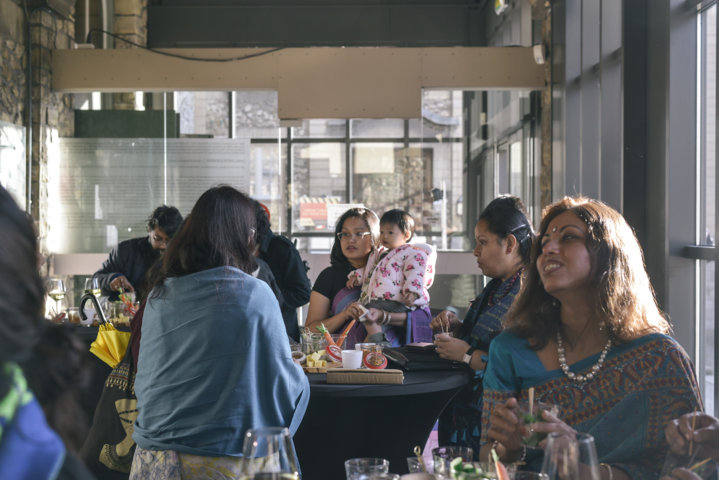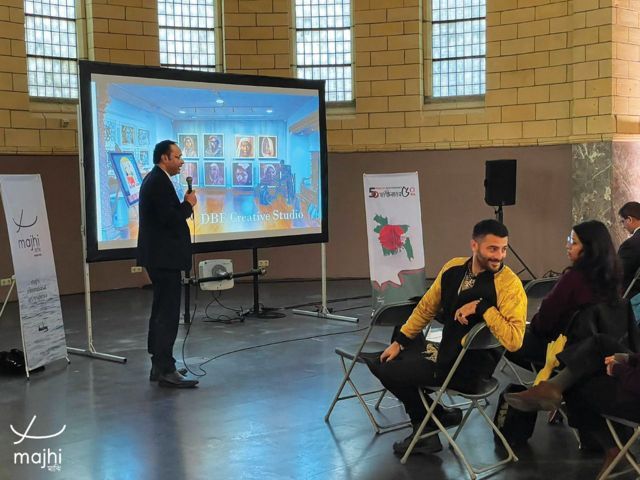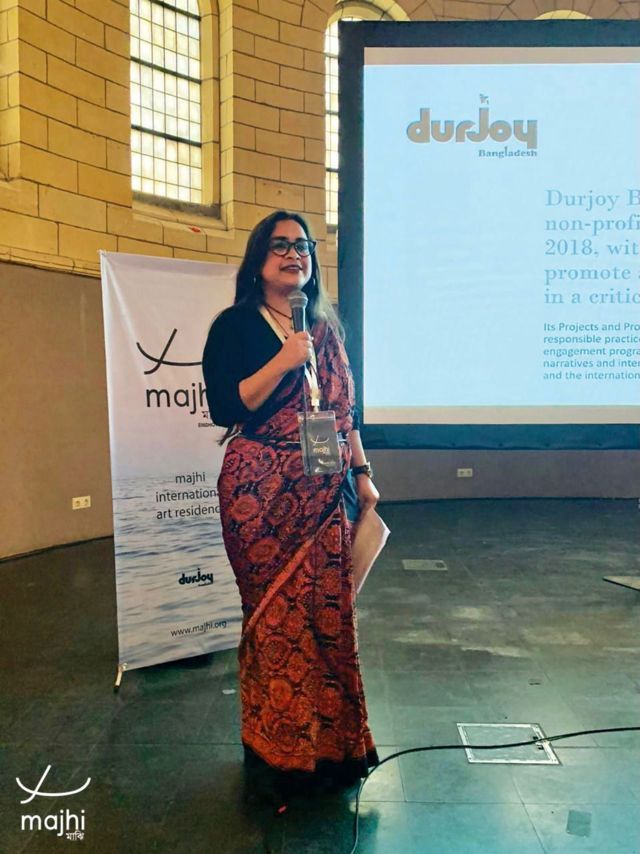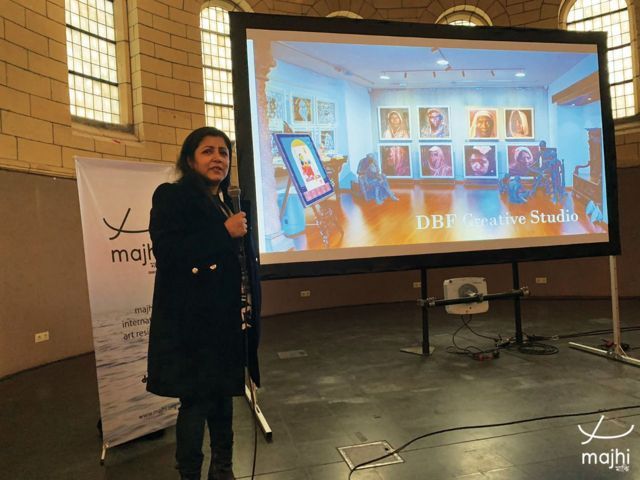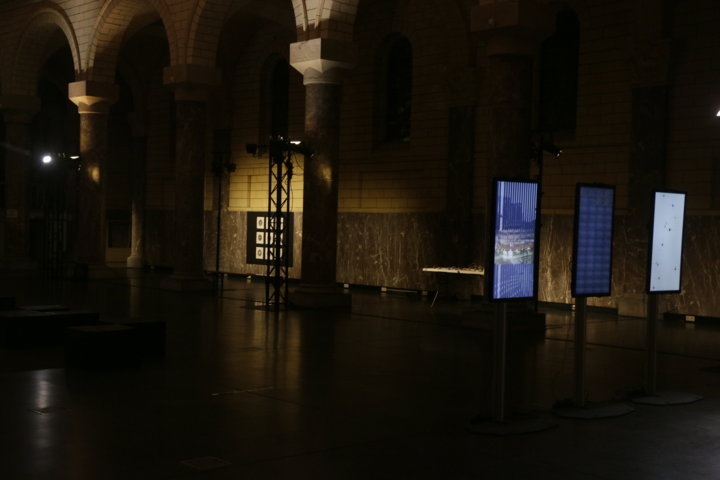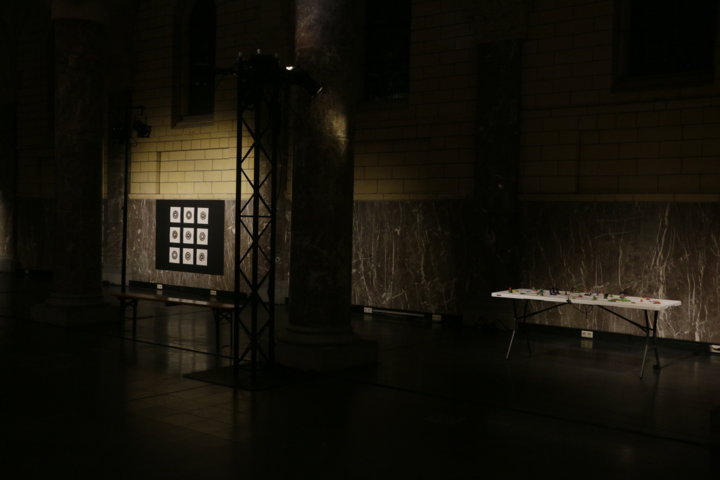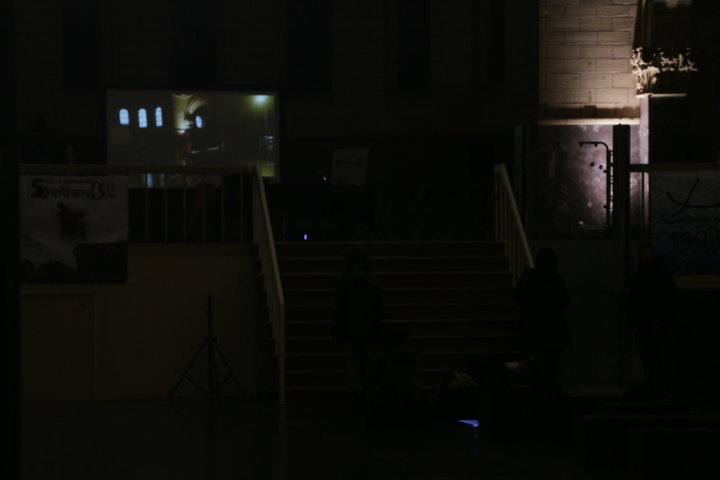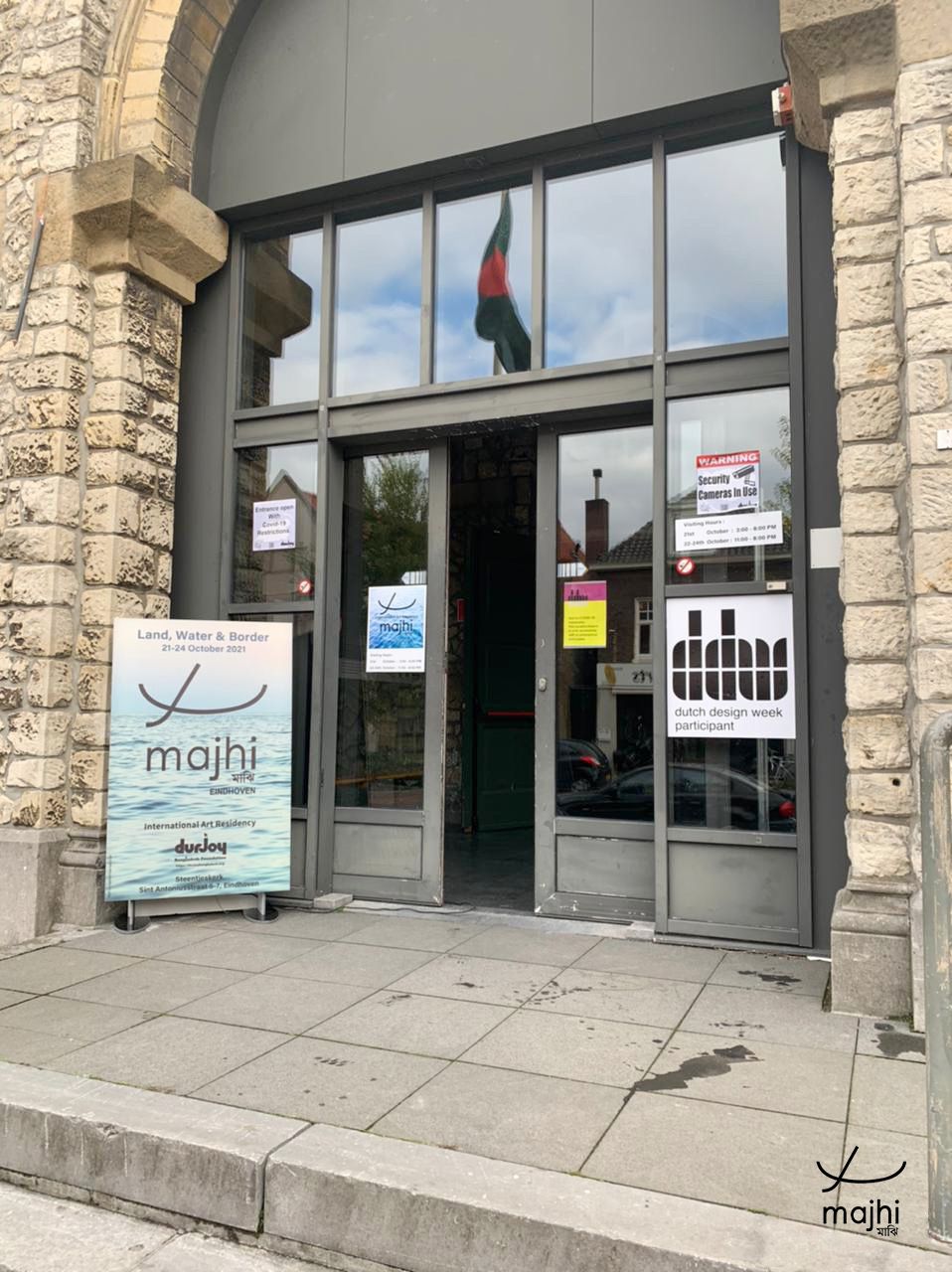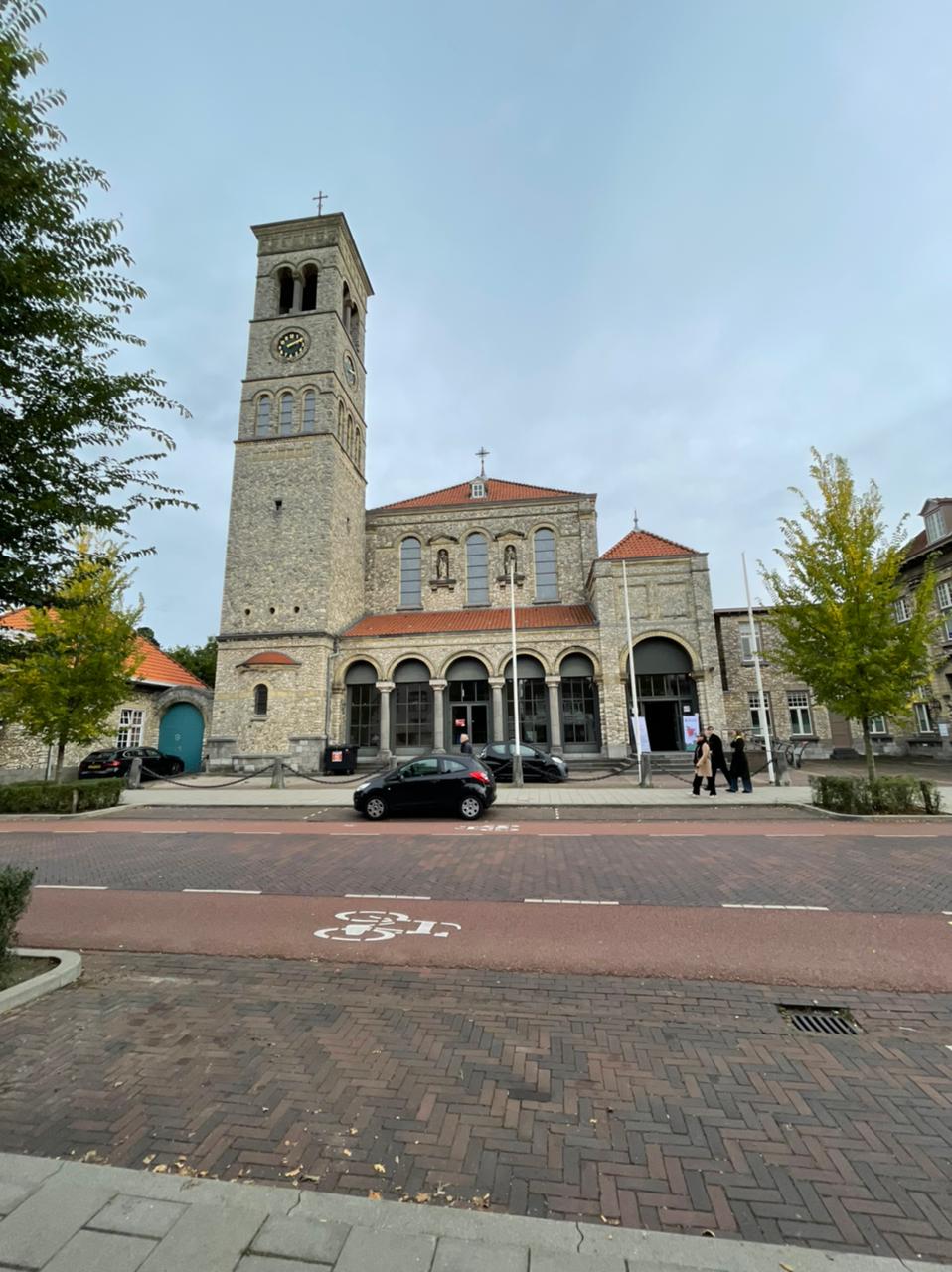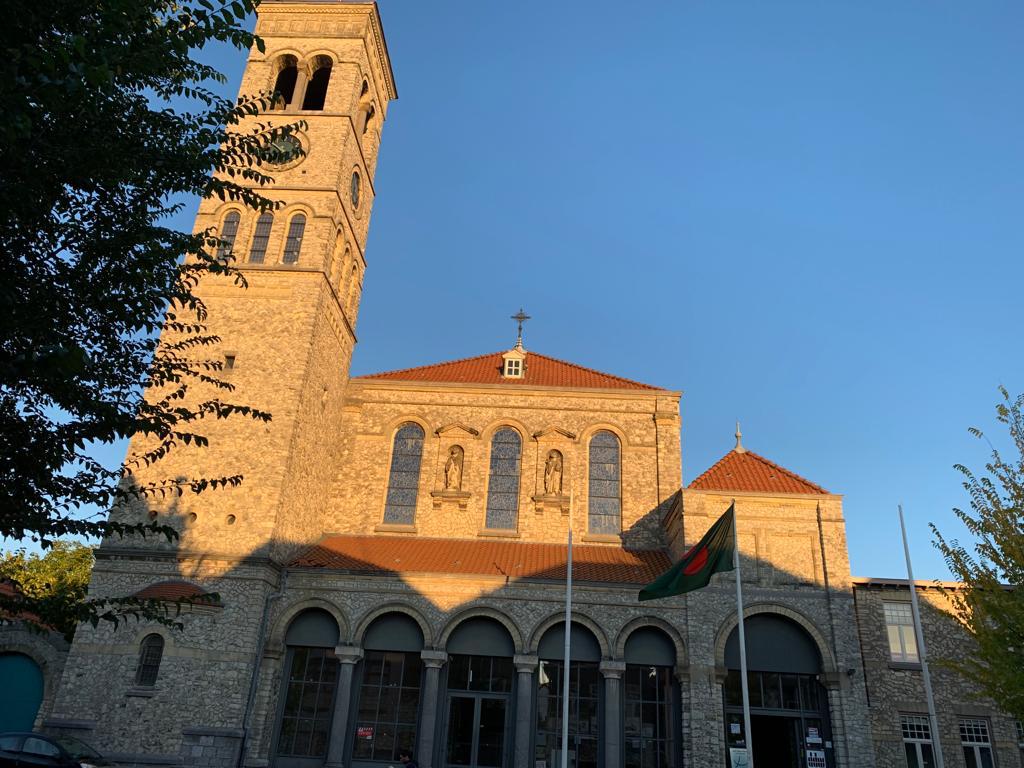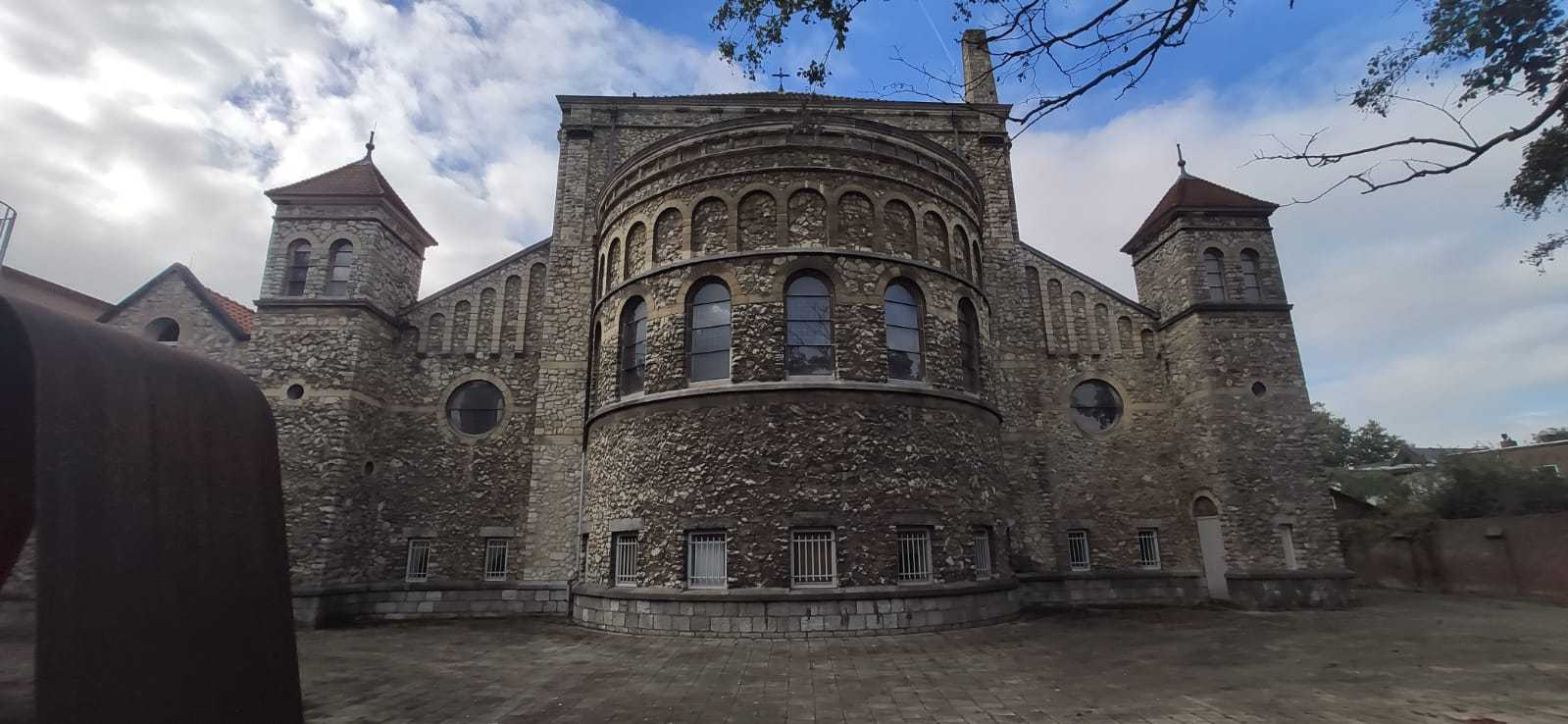3rd MAJHI INTERNATIONAL ART RESIDENCY
Eindhoven, Netherlands

Image: 3rd Majhi edition team photo at Steentjeskerk Church, Eindhoven
Land, Water & Border
Curated by: Kehkasha Sabah
Resident Artists:
Giulia Deval (Italy), Joydeb Roaja (Bangladesh), Non-Native Native (Netherlands), Moch Hasrul (Indonesia), Pier Alfeo (Italy), Satch Hoyt (Jamaica/UK), Shorab Jahan (Bangladesh), Sounak Das (Netherlands/Bangladesh), Yu Zhang (Netherlands/China), Zihan Karim (Bangladesh).
Invited Guest Artists and Curator for public discussion:
Belle Phromchanya (Netherland/Thailand), Andrea Morucchio (Italy), Tanzim Wahab (Bangladesh)
Venue: Steentjeskerk Church | Address: Sint Antoniusstraat 5-7, 5616 RT Eindhoven, Netherlands
Dates: 10-24 October 2021

Majhi Founder & 2021 Team

Image courtesy- Durjoy Bangladesh Foundation
Durjoy Bangladesh Foundation (DBF)
Majhi International Residency Founder & Producer
 Durjoy Bangladesh Foundation (DBF), was initiated as a private foundation by art patron and philanthropist Durjoy Rahman in 2018 to support artistic development and art practices throughout the Global South, holding a special focus on Diaspora South Asian artists to draw attention to their work in Europe. The foundation’s core mission is to initiate and promote art and research programmes from South Asia and beyond in a critical, international art context, supporting artists in creating new artworks and engaging art practitioners in relevant exhibitions, publications, and residencies.
Durjoy Bangladesh Foundation (DBF), was initiated as a private foundation by art patron and philanthropist Durjoy Rahman in 2018 to support artistic development and art practices throughout the Global South, holding a special focus on Diaspora South Asian artists to draw attention to their work in Europe. The foundation’s core mission is to initiate and promote art and research programmes from South Asia and beyond in a critical, international art context, supporting artists in creating new artworks and engaging art practitioners in relevant exhibitions, publications, and residencies.

Image Courtesy: Md. Arafatuzzaman
Kehkasha Sabah
2021 Project Lead and Guest Curator
Kehkasha Sabah (b.1985) is an independent curator, visual artist, and researcher based in Dhaka, Bangladesh. She has her BFA and MFA from the Faculty of Fine Arts, the University of Dhaka. About a decade working in the visual arts sector, Kehkasha’s interest grew to cure art ecosystems through curating, archiving, and creating shared learning spaces. Both as a curator and researcher, she has earned numerous national and international recognitions. She is currently appointed as an independent researcher, representing Bangladesh, in the project Trans-Local Solidarity Network – jointly initiated by Goethe Institute (SA offices), Chobi Mela Photo Festival, and Colombo Scope Biennale to build a Digital archive, bibliography, and policy network for art among four South Asian countries.
Kehkasha appointed a guest Curator and Project lead of the third edition of Majhi International Art Residency, Eindhoven 2021. As a curator, her work focuses on different aspects of socio-political and cultural narratives, navigating experimental or contemporary mediums. Her ongoing seminal curatorial research investigates the decolonial framework. During her tenure as a guest curator at Dhaka Art Summit 2020, she worked with forty art collectives from the global south, which honed her interest in ethnic culture and postcolonial discourses. Her latest interview by C-Print, a Sweden-based art journal, was published in the 2021 edition.
Website: http://kehkasha.name | Email: Kehkasha.sabah@gmail.com

Image Courtesy: Eeshita Azad
Eeshita azad
2021 Event Director
Eeshita Azad is a creative producer, a poet and an arts management consultant with a career spanning over 15 years. She has worked in the creative and cultural sector of London, New York and Dhaka. She has worked for BBC Media Action, British Council and Asia Foundation. She has recently done commissioned work for The Francis Crick Institute and Poet in the City. She has produced and managed major projects on Disability Arts with Graeae Theatre Company, curated a graphic art exhibition from Bangladesh at RichMix, UK. She has worked with leading creative personalities like dancer Akram Khan, poets Inua Ellams, Ross Sutherlands, writer William Dalrymple, Andrew Miller, graphic novelist Karrie Fransman.
Currently Eeshita is the Executive Director of British Bangladeshi Poetry Collective based in London and she is an Arts Fundraising and Philanthropy Fellow. A mentor for Middlesex University’s graduate students and non-executive Chair of the youth-led non-profit Reflective Teens.
Twitter: https://twitter.com/eeshitaazad | Email: eazad8@gmail.com
2021 Curatorial Concept
LAND, WATER & BORDER | CURATED BY KEHKASHA SABAH
“We humans connecting in a landscape are the same as an archipelago. An archipelago, a group of islands closely scattered in a body of water. As believed these islands were formed by volcanoes erupting from the ocean floor. They share similar material, land, and culture but are separated by water as borders. With this notion of the archipelago, this project created a scope to make human connections across life experiences, across distance, and across cultures to engage with the sentient ideas of the contemporary landscapes of our life. It could be about land, or water, or border, but finding an anthology of the ideas merging or colliding with technology in a serendipitous way.
Europe, South Asia, and Southeast Asia have several historical and geographical encounters: hybrid, dynamic and have a fluid political border. As we are focusing on the relationship of the east, west, and south. We want to investigate the historical perspectives of ethnicity, identity, migration, and border. Being aware of the colonial history and past relationship of east and west, we intend to recognize Decolonial thinking and address emancipatory artistic productions – exploring vernacular or cultural wisdom as an artistic framework that is close to nature and can play a significant role in re-build the broken.
We shared histories of colonialism, dictatorship, crisis, emergencies, and recently this pandemic halted our activities and gave us time to ponder upon. How we can think about the new world order or how as cultural practitioners we can contribute to a better world? The new realities have changed our perspective of borders and challenged us to think of new discourses of art productions. Here we want to create such a space merging several borders, borders of every kind, identifying points of division while asserting potentials within the common ground of human experience. From bringing the artists across the globe to work collectively or to thinking about – how to dismantle the border of own work? Thinking about transcending mediums, or collaborating to address the collective spirit of human ecology.
During this Covid-19, borders and restrictions are real but we are connected everyday now and then through a virtual world of technology. However, we still are longing for human connection and collaboration. This project investigates the increasing debate on nature and technology to explore the new world order. Hence, it also carefully considers new restrictions, regulations, and environmental impacts of creating new work addressing the sustainability, need of social design and each artist presented in this residency have long commitments and philosophies accordingly. That is why this project is about using technology navigating through immersive mediums, especially with auditory and sensorial experiences, to create minimal material residue with positive resonance in the social milieu.
The question remains, how contemporary artistic productions can help us reinterpret all these fluxes? How we can withstand, enhance or propose different historical readings, helping the formation of new subjectivities? How we can use technology at the same time save nature? Maybe this is where we stop, listen and seek to vanguard humanity. Perhaps it is the only way to listen to the earth we live in and help others to listen what we hear.”
– Kehkasha Sabah, Independent Curator and Researcher
2021 Participating Artists & Works
The selected artists come from different regions of the world: six of them are born in Bangladesh, another one’s cultural roots divide between Turkey and Germany while four are Venetians. They are: Dilara Begum Jolly, Dhali Al-Mamoon, Rajaul Islam (Lovelu), Noor Ahmed Gelal, Uttam Kumar Karmaker and Kamruzzaman Shadhin from Bangladesh; the Turkish/German Umut Yasat and Chiara Tubia, Cosima Montavoci, Andrea Morucchio and David Dalla Venezia from Venice.
Giulia Deval, Italy (b. 1993)
Giulia Deval works in the field of vocality and sound art. Her research moves in a hybrid territory between sound experimentation and writing, fascinated by mockumentary and speculative fabulations. Different formats such as live sets, creation of sound dresses, concerts of imaginary characters and radio plays have as their basic ingredients voice and found analogue electronics.
The Wanderers
Sound Installation | Materials: sea water, living plankton, audio novel, human voices
Plankton is the ecological category that includes the complex of floating aquatic organisms – both animal and plant – transported by currents and wave motion across the ocean. The individual organisms constituting “plankton” (“the wanderer”) are called “plankters” (“the wanderers”). Inextricably entangled with geopolitical and environmental phenomena, aquatic life, and in particular the wandering life of the collective entity of plankton,becomes the pretext for a reflection on the present and for a poetic sound wandering. For this sound installation, Giulia wrote a narrative from the perspective of the plankton, in a transhumanist vision. The whole group of the resident artists becomes the collective voice of plankton, through a choral reading recorded under the dome of Steentjeskerk. With special thanks to Nicole Bruining – HEEVIS
Phonotransparence
Performance | Duration: 15mins | Materials: sound dress, field recordings, magnetic tapes
Images Courtesy: Sounak Das
Moch Hasrul, Indonesia (b. 1991)
Moch Hasrul holds a bachelor’s degree in Art Education and a master’s degree in Fine Arts. Working in the field of media art, Hasrul is a design lecturer at a university in Tangerang and he is also an active member of Serrum, an organization with a focus on education and fine arts. Art became an alternative learning for Hasrul in exploring knowledge intersecting with other disciplines.
For him, technology bridges different values, science is a way out in the problems that occur and art can be questioned as another value of science that can distribute knowledge more dynamically. He produces artworks that are interactive like playing devices, or instructed to touch, sense or move – with which he extract knowledge and interpret the discourse on the relationship between humans and technology. Hasrul’s work includes computing technology, mechanical systems, sensors, simple technology to engineering plastic waste processing on a simple scale. His core idea is to find the relationship between technology and humans, in which social, cultural and political phenomena often emerges.
Prototypo #2
Interactive Installation | Dimensions: 100 x 70 cm | Materials: Wheat flour, arduino, wires, plastic
One of the successes in human civilization is processing wheat into flour, and flour is one of the basic ingredients of several types of food that we consume to this day. Not only wheat, some flour comes from various plants from crops, but all of them are processed into flour. There are no territorial boundaries and it is not known for sure who invented the technology for processing it into flour, and until now we still consume flour. This technology that has existed for a long time in human civilization is still present regardless of the boundaries of territory, land and water, and its myriad uses can be transformed into an electronic circuit that conducts electricity. It is not a new invention but we can continue to present its use as an alternative way.
‘Prototype #2’ is trying to interpret the chronology of flour distribution into a symbolic form elaborated by a microcontroller. Using microcontroller and sensors with playdoh (made out of flour) this work synthesizes idea of connectedness. This work tries to enhance the processed technology with programming technology.
Images Courtesy: Moch Hasrul, Zihan Karim, Majhi Team
Jog Arts Space
Chittagong, Bangladesh (Founded 2012)
https://facebook.com/groups/jogartspace
Jog Art Space is based in Chittagong, in south-eastern Bangladesh, the second-largest city in the country, but a place where emerging artists find it difficult to survive. Unlike Dhaka, Chittagong has no commercial galleries and no network of contemporary art collectors, leaving artists to find alternative ways to sustain themselves. Jog Art Space provides the local visual arts community with mentoring support, exhibition opportunities, platforms for exchange and discussion, and access to international artistic exchange programmes. Founded as an informal learning platform, Jog Art Space has grown to become an important support network beyond what is provided by formal academic structures. Cheragi Art Show (CAS), is a platform for public art, intending an exchange among artists, activists and viewers initiated by Jog Art Space, running yearly from 2012. Some members of the group are art educator at the Institute of Fine Arts and see themselves as a bridge to experimental ways of working outside the confines of the academy, thus the name Jog, which translates as ‘connect.’
Devoted to “Khoaib Khazi”
Artwork from Jog Art Space | Performance by- Yuvraj Zahed A. Chowdhury
Human are fragile creature. They break down for visible injuries and invisible wounds. Sometimes, a man physically breaks down and sometimes mentally. This process is painful. However, everyone seek refuge through sharing pain and sometimes that sharing makes us happy.”Khoaib Khazi” is a great Priest of the Karnafuly River. A river that started from the hill area of Chittagong and ended in the sea (Bay of Bengal). Khoaib Khazi is the refuge of the good and evil of the people on the shore. As if the experiences gathered from the land, purified by the water of the shore. This performance is dedicated to such a great priest, “Khoab Khijir”.
Images Courtesy: Sankrit Kulmanochawong, Zihan Karim, Sounak Das
Joydeb Roaja, Bangladesh (b. 1973)
Completing M.F.A. in painting (1999) from Chittagong University, Joydeb Roaja is a dynamic artist known for his painting and performance. He belongs to Tripura community (an indigenous community of Bangladesh) and grew up in a rural hilly land and currently living and working in Chittagong, Bangladesh. He is the Vice Chairman of Porapara Space for Artists and the former General Secretary (2019-2020) of Hill Artist Group. Most of his Paintings, Drawing Installation and Performance Artworks are influenced by hill tracts life, Indigenous/tribal culture and nature. His works are very personal yet strongly connect us to several contemporary political discourses of ethnic rights, inclusivity, oppression and an urge for saving nature, land and culture. Joydeb had his solo exhibition in NIPAGEN in Japan; and participated in numerous international festivals and exhibitions including, Japan, Vietnam, UK, France, Sri-Lanka and Dubai.
Poolang, melody of the flute that brings unity
Mixed Media Installation and Performance | Materials: Pen Drawing, Video and Flute Sound
The indigenous people of “Mro” live in Rangamati and Bandarban district, south-east part of Bangladesh. They are the most ancient race in hill districts of Bangladesh. Although “Mro” are exists in Akiab, Mayanmar too. According to the last survey of 1991, there are 2,22,167 Mro people live in Bangladesh. Mostly they are accustomed to living in high mountains. Their life and livelihood are in intimate relationship with the forest, mountains, or nature as well. Their main sources of living are “Joom cultivation” or hunting. After having “Joom” harvesting the Mro oeople celebrates “Chiachat Ply” festival. I came to know about them at 2003 by spending one night in their village. I had great experience from that festival. I, Joydeb Roaja, am from Tripura (indigenous) community; my language is different from Mro. Only the village head or Karbari could speak Bangla. Though the festival was at night, there were a big crowd for bathing at the little stream near the village at afternoon. It is like a ritual; women are always allowed to take bath at downstream and the man are on upper stream, it’s similar to my childhood experience. I first heard the Flute sound nearly at 8 pm from the oldest person’s house of the village. Then the whole village suddenly woke up. From the house of the highest pick and the house near the stream all started drum bit and playing flute, as if they were announcing the start of the festival. I visited almost 21 houses that night and watched them tuning their “Poolong” flute. Since then, “Poolong” has a big influence on my performances, drawings and paintings. But now the scenario of Mro villages has been changed, because of the civilized people. They are taking possession of Mro land by taking advantages of their simplicity. Big companies are making the 5-star hotels for tourism on Mro’s Joom land. Mro village become extinct. The Mro people protested against this land extinction in Chimbook and Bandarban, with playing only the “Poolong”. To me, this sound of “Poolong” is the tune of love, unity and protest. It’s my personal opinion that, if Govt. Doesn’t show any empathy, it’s not possible for the indigenous people to survive in any country on any part of the world.
Images Courtesy: Sounak Das
Shohrab Jahan, Bangladesh (b. 1987)
Shohrab Jahan is trained as sculptor. working as a multimedia artist, art educator and curator. Graduated from the Institute of Fine Arts, Chittagong University, Shohrab currently teaching as a lecturer in the same academy. He has been exhibited numerous international festivals and workshops His practice is no longer confined to three-dimensional art. He sculpts with text using various material and medium, including moving images, to create fictional stories. Some of his stories engage with history. He is one of the founder of Jog Arts Space, which is known for its yearly festival ‘Cheragi Art Show (CAS).
https://www.developmentalternatives.net/burninghead
Birds are flying everywhere
Mixed Media Installation | Materials: Fisherman net, salt, video projection | Created for Majhi International Art Residency, 2021
Avay Mitra Ghat in Karnaphuli River in Chittagong, Bangladesh, is now covered by ships and artificial creation. Before that, there were birds with several animals, which has been dislocated slowly last hundred years, resulting from human innovation and pollution and noise. Port is near to the ghat, so the space now is very busy. I started to make a dreamy landscape, where a human can live as a part of nature with other animals together, but I failed as I didn’t know how beautiful it could be. As a process to work, I started with talking to the nearby fisherman, boatman and people who survive depending on the river live near Avay Mitra Ghat. Fishermen starts their day with the sun rising. Sun rising is beautiful and inspire us to flow and make hope for the next day. This work is made in that hope for the next beautiful day where we can see the huge sky and birds are flying everywhere.
Images Courtesy: Sankrit Kulmanochawong, Zihan Karim, Sounak Das
Artwork & Video credit: Shohrab Jahan
Sounak Das, Netherlands/ Bangladesh (b. 1993)
Sounak Das is a multimedia Artist based in Dhaka, Bangladesh; predominantly using photography, moving images, sound and Installation. His practice renders idea along the omnipresent lingering landscapes and aspects of urban scenario with minimal representations of the convenient elements of time. His works embodies community, cultural dilemma, spatial context, history, advancement of technology and Anthropocene. Experimenting the parameters of the physical reality and converging qualia, his expressions mostly focus on philosophy which questions the presence of reality. Currently studying Masters in visual arts and post contemporary practice, St. Joost school of art and design, (MIVC), Netherlands.
Audi-ology / Audio-logos
Mixed media Installation | Photograph, vinyl player and Sound piece
How would we conceptualize the idea of sound adhering every civilization and revolutionary eras? Was it archived in any format or is it all synthesized in the age of digital era? In our geographic positioning, and diverse cultural practices there are some chronicles of civilization. The intension of this knowledge was to share and discover more of the Earth and its habitants. Since the technology of capturing air was a phenomenon until it is the everyday life to communicate within the earthly fluid from any altitude.
The Audi-ology/Audio-logos is an idealized library of sound escapes which has archived the noises of the emergence of Earth and it’s Beings. Since the closure of the Church all its catalogues and recoded albums are unaware. What remains are a record of noises from every element of nature becoming an upheaval of our advancement in the history of its making. Surviving in the midst of Land and Water; with a border of air to breathe.
Images Courtesy: Sounak Das
Zihan Karim, Bangladesh (b. 1984)
Zihan Karim is a visual artist, art educator and curator. Graduated from the Institute of Fine Arts, Chittagong University, Zihan currently teaching as an Assistant professor in the same academy. He one of the rising ultra-contemporary artist in Bangladesh, who has been exhibited numerous international festivals and biennales, including Fukuoka Asian Art Triennale, Yinchuan Biennale and Dhaka Art Summit for his exceptional new media works. He is one of the founder of Jog Arts Space, which is known for its yearly festival ‘Cheragi Art Show (CAS). Place, shape and nature (of object) – these characteristics are very important for Zihan’s thinking and making artworks or moving images. Because, Zihan believes anything regarding ‘view’ or ‘see’, we get to realize them through a physical lens. Along with it, we get an impression of its taste, sound as well.
http://zihankarim.blogspot.com/
Six strangers with Handcuff
Mixed Media Installation | Materials: Video, Foam board cut out
In the middle of the 16th century, six anonymous people entered Bangladesh intending to change their destiny. It was supposed to be a diplomatic mission consisting of six people, but even before starting from Hooghly, they had some form of disagreement with the local authorities and were arrested. They reached Dhaka handcuffed. They did manage to secure their freedom from the Mughal court in Dhaka but had to pay a handsome amount to provide gifts for the Nawab. In 1666, they started to export cloth from Dhaka to Europe and Japan and tried to set up a trade center in Dhaka. They even got permission for a monopoly over the export of opium from Bengal. However, in the same decade, the British trading power started to gain ground and their main competitor was the Dutch. As a result, the Battle of Chinsura took place between the Dutch and British, in which the Dutch lost decisively, though their military or naval power was no less mighty. British had already cornered all the other European powers in Bengal after their important victory in the battle of Plassey (1757). In that battle, Dutch helped Nawab Siraz-Ud-Dowla to fight against the British, but lost the battle. This last battle for power, territory, and devious politics affected Bengal in every sense and that legacy flowing until now. I just tried to walk through some of these historical events metaphorically through my work.
Images Courtesy: Sankrit Kulmanochawong, Zihan Karim, Sounak Das
Artwork & Video credit: Zihan Karim
Yu Zhang, Netherlands/China (b. 1979)
Yu Zhang is an artist, AI designer, researcher and educator. Yu has a background in fine arts and design. Her Ph.D. research investigates the theory and artistic practice of interactive technologies for public, large-scale installations. As a researcher and artist, she approaches visual art with mixed reality installations and projections, sensor-based interactives, and computational arts. As an educator, she has been teaching design and art in international workshops and higher education for over ten years. Currently, she lives and works in the Netherlands.
https://yuzhang.nl/
3 Screens () {land; water; border;}
Interactive Installation | Materials: TV with visual sensors
The project aims to explore how urgent environmental problems at macro levels of geographical scale can be translated to the micro level activities in our daily lives. And, how small but intentional changes in everyday life can make a positive future impact. The project starts with three severe environmental issues–ocean suffocation, air pollution, and waste exports, but those “global” issues are designed to manifest in place and culture-specific ways, facilitating moments of not only viewing the issues but also interacting with at the exhibition. The project is realized as a series of interactions that can each offer different kinds of impact on the targeted environmental issues and map things happening far away to things that can be done right here and right now. The project takes environmental problems as the starting point of work, but it seeks to fill a gap in research on big data, contextual representations and appropriate (interaction) design.
Images Courtesy: Yu Zhang, Zihan Karim
Seriously Being That Furniture
Interactive Installation | Selected for Dutch Design Week, 2021 | Displayed at Majhi International Residency, 2021 as a part of Dutch Design Week location.
“Seriously Being That Furniture” is a practice-based research project and it targets the busy every day of working under severe pressure and various forms of stress. This project leverages forms and materials that use motion to anticipate and adapt to human users and designs furniture interfaces that can grow or shape their characteristics to deliver a healing experience.
Images Courtesy: Yu Zhang
Satch Hoyt, Jamaica/UK (b. 1957)
Born London 1957; resides Berlin Satch Hoyt is a spiritualist, a believer in ritual and retention. A visual artist and a musician, his diverse and multifaceted body of work – whether sculpture, sound installation, painting, musical performance, or musical recording – is united in its investigation of the “Eternal Afro-Sonic Signifier” and its movement across and amid the cultures, peoples, places, and times of the African Diaspora. Those four evocative words (a term coined by Hoyt) refer to the “mnemonic network of sound” that was enslaved Africans’ “sole companion during the forced migration of the Middle Passage.” lt was, and is, a hard-won somatic tool kit for remembering where you come from and who you are – and maybe, where you’re going – against all the many odds. Of Jamaican-British descent, Hoyt was born in London and currently lives in Berlin. Having also spent time in New York, Paris, Mombasa, and Australia’s Northern Territory – all points on the many-sided and ever expanding star that is the African Diaspora – he is an intimate observer of the sites of convergence where the Diaspora comes together to sing, shout, and be, reflecting itself to itself. Employing the shared tool kit to connect, express, and commiserate across centuries and oceans, Hoyt taps into aural and oral echoes as well as into those retained in the historical and material record.
Crossing Paths that lead to Cultural Amalgamations
Graphic Score (Painting) Followed by Performance | Painting: 339 cm x 245 cm; Sound Performance: 30 min
Not so long ago, artists of non-European heritage were vehemently excluded from the western art world. This pattern of exclusion was not due to artistic practices it was based on race. White male dominance monopolized the arena. This policy of dominance has partially been broken. But not by outpourings of benevolence from the west, it has been broken by the guilty masters being forced to confront their colonial pasts. When the modernists arrived at an impasse, their canon was resuscitated by various appropriations of African, Asian, and Oceanic artifacts plus Jazz music.
Music/sound has always played a pivotal role in visual artistic evolutions. When I was invited to participate in the 3rd International Majhi Residency, the curatorial theme Land, Water, & Border immediately piqued my socio/political artistic appetite, completely dovetailing into my praxis, which is focused on what I term Afro-Sonic Mapping Tracing Aural histories via Sonic Transmigrations. Coupled with The Eternal Migration of the Afro-Sonic Signifier.
I argue that the enslaved acted as portals carrying mnemonic networks of sound to the Caribbean Basin and the Americas, these networks developed into a myriad of amalgamations, prominently high on the list is Jazz which was spawned in New Orleans. Also, an oft unspoken subject in all colonial conquests was the human decimation of nature, which has brought us to our current dismal state of planetary demise. My contribution in Land Water & Border is a large painting partially executed in my Berlin studio. B.U.G. Ode to the Anthropocene functions threefold as a cartographic depiction, an unfixed graphic score and a cosmic constellation. This painting will be played by myself employing pre-recorded elements and live instruments, part of the performance will include other artists in the residency.
Images Courtesy: Sankrit Kulmanochawong, Majhi Team
Pier Alfeo, Italy (b. 1985)
Pier Alfeo is a composer and sound artist working with electronic music. His practice as composer currently range from electronic music pieces, immersive audio-visual performance, sound sculptures and visual works related to sound agency. Through his artistic practice, Pier Alfeo investigates cognitive and pathological problems caused by the intense relationship between human beings and automation systems in contemporary societies. His multimedia installations, sound sculptures and electronic musical compositions put the repetitiveness of mechanical-algorithmic automation systems under tension with the unpredictability of chaos. In this way, the rigid regularity of serial systems is interrupted and deconstructed from the inside, generating new configurations of meaning. Within these processes, sound acts in an organic way as a destabilizing and heating element at the same time, emerging with its irregular expressiveness.
https://pieralfeo.com/
The Blind Age
Sound Installation | Dimension: 1 m x 24 m x 0,46 m | Materials: Painted Moving boxes, Plexiglas, LED, Pawns Go Game
We are being made blind and deaf with overpowering uses of technology. This work uses the technological interaction of the QR code met-aphorizing with a match of the Asian game GO, a game that talks about war and conquest of territories, a game that is considered one of the oldest still practiced, very strategic and meditative. The QR code, composed of the game pawns of a single colour, leads to sound composition when scanned, unfairly only a small and exclusive circle of people can access the deep work, an immersive listening of sound exploration. The sound flow is articulated in an imaginary sound-walk that starts from silence, and exploring the changing forms of nature reaches man. Technological differences are and will in the future create unbalanced, especially in digital progress, as a symbol of a brand-new disparity.
“The Blind Age” wants to create a sharing condition and at the same time action of unselfishness, a contact with oneself and others through a journey in virtual soundscapes that live on the web. The work does not physically exist, it’s based on what kind of relationship will be established among the public, questioning itself on the concept of “here” and “with” in the Digital Age. But, it resounds in an ideal utopian panorama where you cross lands and waters without limits or borders.
Embedded in the code there is a word, written in the international Braille language, “Insieme” meaning “together”, which is developed in the central nave of the church as if it were an extension of the code or a path to it. Adding up these two auditory and visual readings of the code, the work “The Blind Age” connects back to the curatorial proposition of the conditions of Anthropocene and the need for collective empathy. Let’s have a walk together.
Work link: http://pieralfeo.com/qr
Images courtesy: Pier Alfeo
Non Native Native (Collective), Netherlands
NON NATIVE NATIVE (NNN) is a cultural platform which looks into the Asian creative landscape in The Netherlands through the lens of the outsiders from within. The platform serves as an alternative point of exchange for critical creative practitioners between the Asian and Dutch cultural landscape with the focus on contemporary visual culture. Following three artists from NNN participated in residency project.
https://nonnativenative.com/
Belle Phromchanya (Bangkok, Thailand, 1984)
Belle Phromchanya is an artist, filmmaker, and founder of NON NATIVE NATIVE. Her works address subjects such as, political memeification, digital legacy, marginalized-transborder identities, and contemporary migration, many of which are rooted in the unsettling relationship between herself and the globalized society.
www.nonnativenative.com
Anon Chaisansook (Bangkok, Thailand, 1992)
Anon Chaisansook is interested in political conditions and social structures. Through the use of methods such as coding, sound production, 3D visualizing and 3D printing, he distorts the physical, while twisting and dissolving existing narratives attached to objects, countering mainstream class discourses of the present day.
anonchaisansook.wixsite.com/onlineportfolio/home
Sankrit Kulmanochawong (Bangkok, Thailand, 1997)
Sankrit Kulmanochawong is a graphic designer and visual artist based in Amsterdam and is currently much inspired by the sense of lived realities—bringing the everyday into view and observing little gems or cultural clashes that often get left unnoticed in the busyness of it all.
Lands with no Volcanoes
Audio-Visual Installation | Materials: Video projection with sound and text
Portals into the heart of the earth, there are burned bottomless cauldrons fueled by an ancient wrath bubbling and boiling thousands of miles beneath. Storing pressure underneath, any change in the surface could be a sign of a possible eruption that can trigger climate chaos.
‘Lands with no Volcanoes’ is a collaboration between NON NATIVE NATIVE together with Thai artists based in The Netherlands, Belle Phromchanya, Anon Chaisansook and Sankrit Kulmanochawong. The audio-visual installation narrates through the re-appropriation of found digital materials, displaying the current socio-political tensions that exist underneath the tranquil facade of the two regions.
Images & video courtesy: NNN, Majhi Team
2021 Majhi International Residency Programme
3rd Majhi Residency Programme: 10 -24 October 2021
| 10 – 20 October: | Residency collaboration, discussion and Production |
| 21 – 24 October: | Public exhibition in the venue, public performance art and artist talks. |
Program schedule from 21st to 25th Oct
21st October:
| 3.00 pm – 3.40 pm: | Opening ceremony: Opening presentation, speech from DBF and Curator Chief guest H.E Riaz Hamidullah will give inauguration speech |
| 3.45 pm – 4.15 pm: | Performance by Satch Hoyt |
| 4.25 pm – 4.50 pm: | Performance by Giulia Deval |
| 5.00 pm – 5.20 pm: | Performance by Joydeb Roaja |
22nd October:
| 11 am – 8 pm: | Exhibition is open for public |
| 2 pm-2.40 pm: | Guest Artist Talk by Belle Phromchanya (Majhi 2 resident artist) |
| 3 pm – 3.40 pm: | Guest Artist Talk by Andrea Morucchio (Majhi 1 resident artist) |
23rd October:
| 11am – 8pm: | Exhibition is open for public |
24th October:
| 11am – 8pm: | Exhibition is open for public |
| 12pm – 12.40pm: | Guest Curator Talk by Tanzim Wahab, moderated by Kehkasha Sabah |
| 1pm -1.20 pm: | Performance by Joydeb Roaja |
Images Courtesy: Zihan Karim, Majhi team
2021 Majhi International Residency Venue
Known as the Stone Church, Steentjeskerk is a national monument of Eindhoven City since 2001. Built-in 1919, it has experienced a lot of historical events. The building has a special connection to art and culture, especially when it housed the Museum Kempenland from 1984 to 2012. The church is now owned by Harrie Kolen, the owner of Kolen Keramiek en Natuursteen.
Images Courtesy: Zihan Karim, Sounak Das, Majhi team



